Wedding Terminology Guide
Your Guide to Wedding Terminology
Congratulations on your engagement and upcoming wedding! During the planning process, you will meet with lots of vendors: planners, florists, venue coordinators, and more. Therefore, it’s very helpful to learn some of the wedding terminology or lingo before you start meeting them. That’s why we have compiled a huge, comprehensive list of wedding terminology with definitions. Keep reading to learn all the wedding terminology you may need to know to help you eat, drink, and be married!
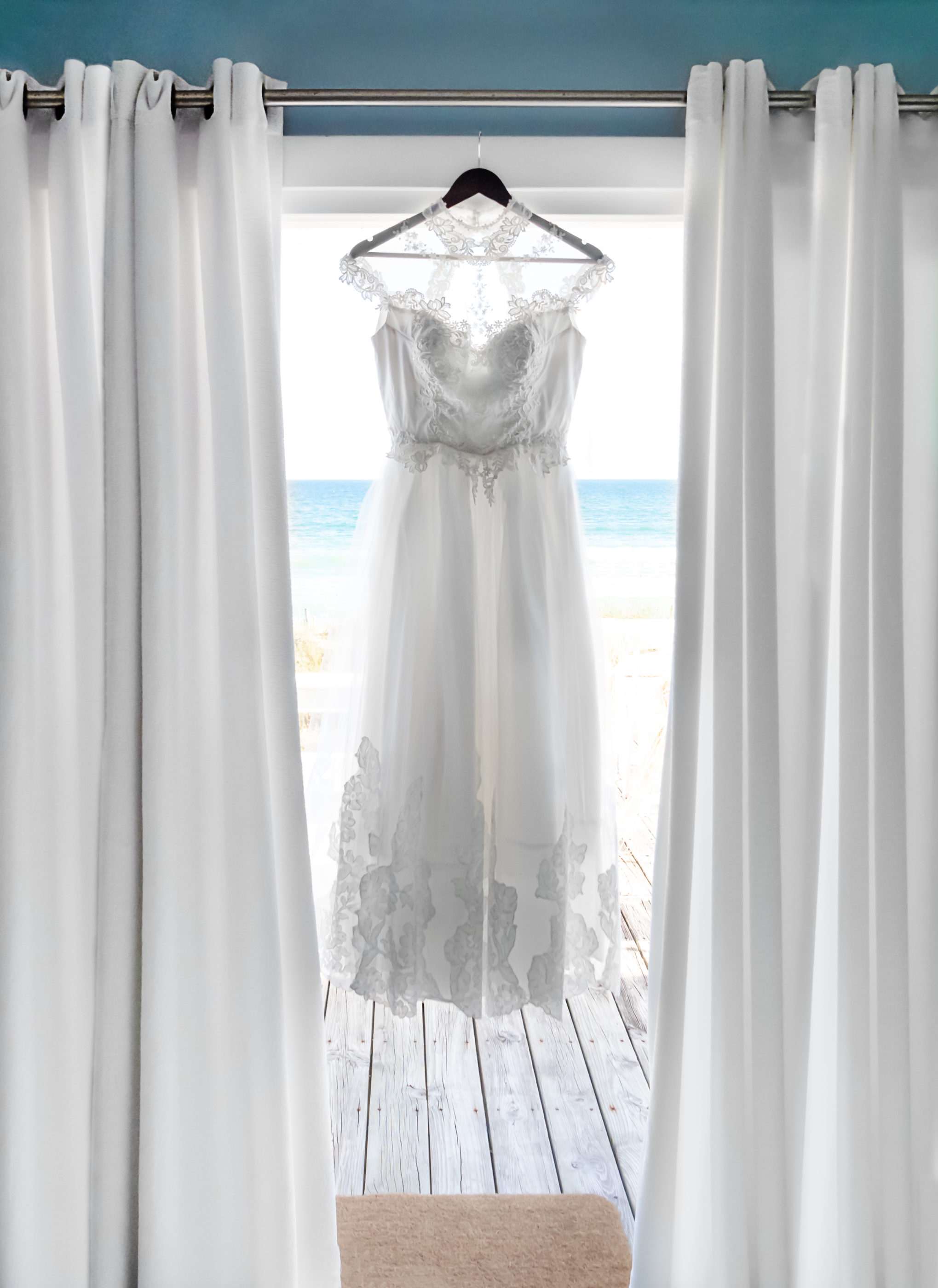
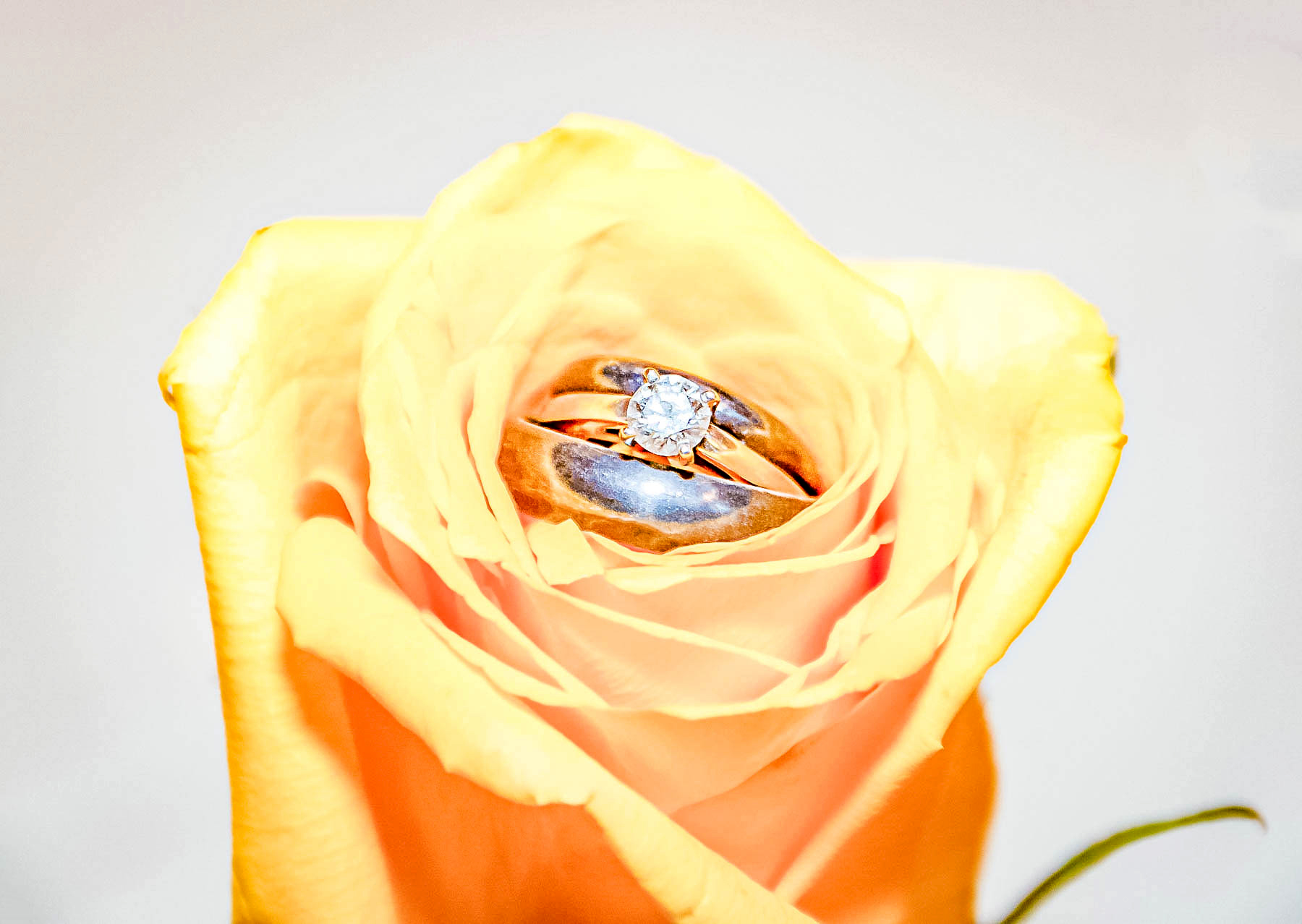
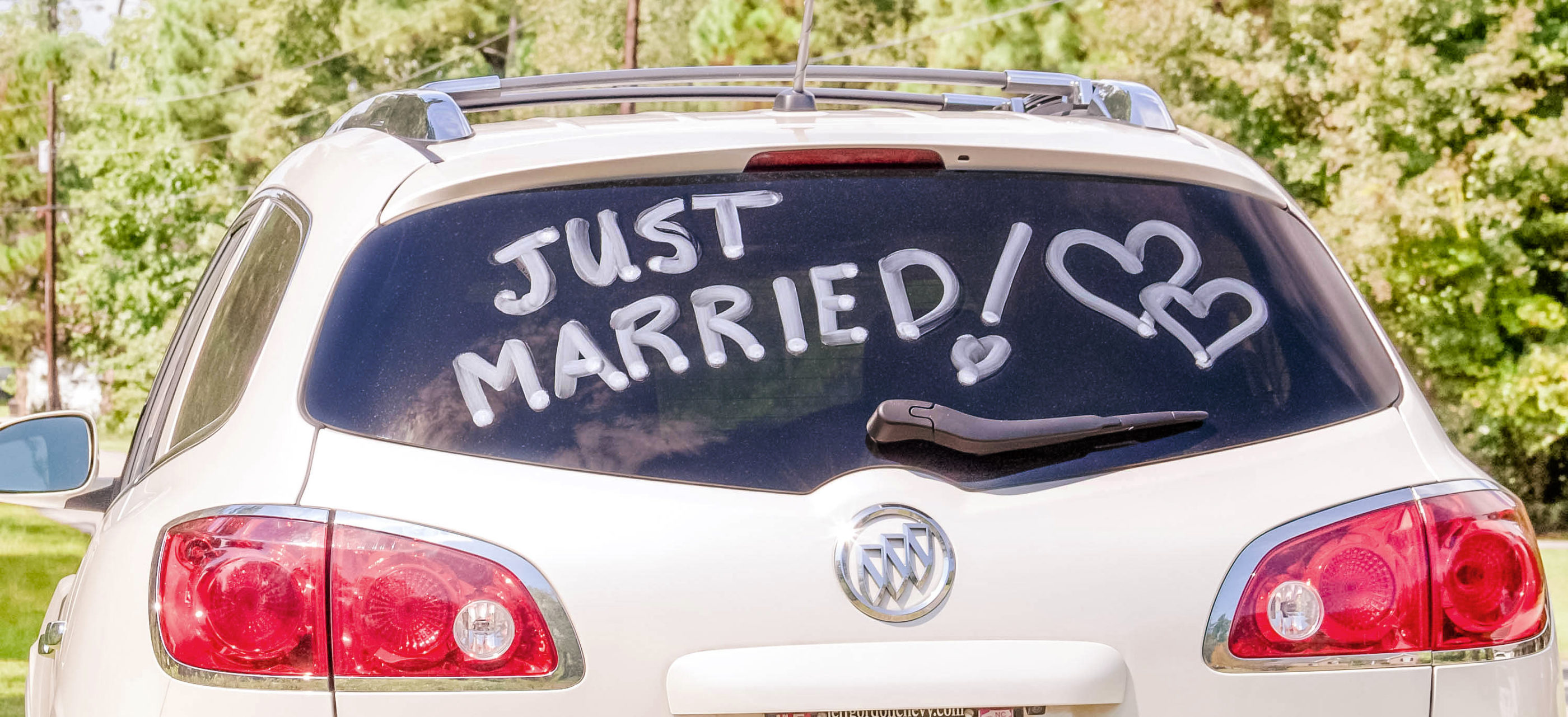
Wedding Terminology: Wedding Party
BM – Best Man
FOB – Father for the Bride
FOG – Father of the Groom
MOB – Mother of the Bride
MOG – Mother of the Groom
MOH – Maid of Honor
Best Man
The closest male in the groom’s life is usually chosen to be his best man. It could be a brother, father, son, cousin, or best friend. This person organizes the bachelor party. TIP: In modern weddings, the best man can be either gender.
Bridal Party
The bridal party is your maid and/or matron of honor, bridesmaids, the best man, groomsmen, your ring bearer, and your flower girl. These are the people closest to you, like your best friends or family members. They are there by your side to help you from start to finish to have the best wedding possible.
Bridesmaids
These ladies are your closest girls. They can be sisters of yours or your fiancé, friends, cousins, daughters, etc.
Father of the Bride
The Father of the Bride is the bride’s Daddy. His role is usually escorting is daughter down the aisle and ‘giving her away’ to her fiancé.
Maid / Matron of Honor
The Maid of Honor or Matron of Honor is a title is given to a special woman in your life. They will be standing directly beside you on your wedding day and will be your right-hand woman during the planning process and on the day of your wedding. Maid of Honor is the correct title for her if she’s unmarried and Matron of Honor is the correct title is, she’s married. One way to help her stand out from the other bridesmaids it to have her wear a slightly different dress or carry a distinctly different bouquet. TIP: The maid of honor is your go-to for planning your bachelorette party and often times carries a big role during your bridal shower.
Groomsmen
These guys are your groom’s closest people. They can be brothers of his or yours, friends, cousins, sons, etc., but are the ones who he is closest too.
Ring Bearer
This is a small child, usually a boy, who carries the rings down the aisle and presents them to the couple during the exchange of rings.
Flower Girl
The young girl that starts your bridal procession by scattering flowers as she walks down the aisle is your flower girl.
Page Boy
A page boy is a small boy who follows the bride down the aisle. His role is to carry her train.
Attendants
Anyone that plays a role in the wedding is an attendant and include the best man, bridesmaids, ushers, flower girls, etc. Attendants are called this because they have roles and responsibilities to “attend” to during the wedding.
Usher
During the ceremony, the ushers escort guests to the seats and help to keep things organized before the processional starts. It’s a very important role. Ushers can be friends or family members. Ushers let guests know which seats are reserved and if there is a certain side of the aisle that they should be sitting. TIP: Have your groomsmen dress in attire that matches the groomsmen or wear coordinating attire that is just for them. And be sure to have them wear a boutonniere so they stand out as the ushers.
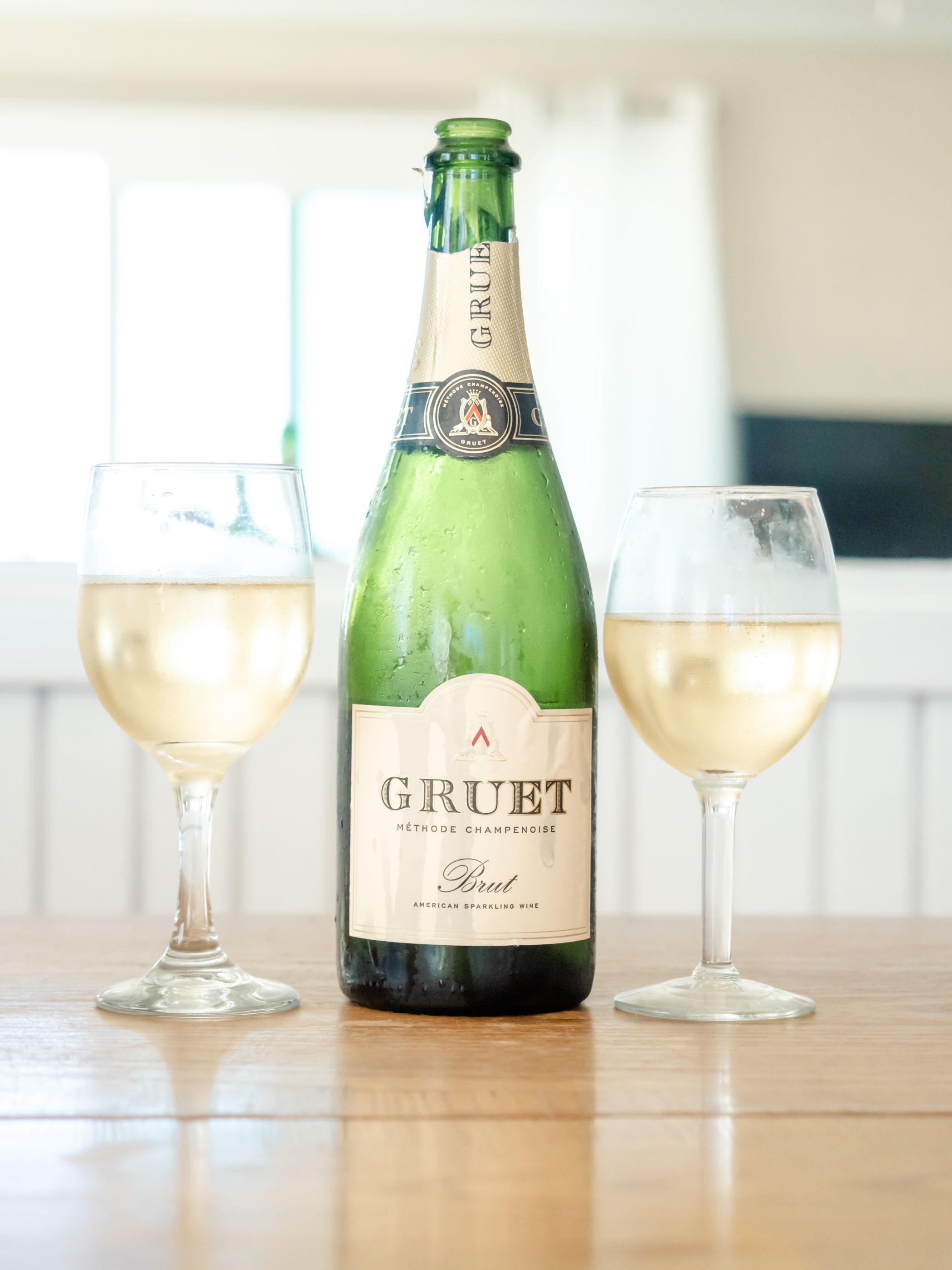
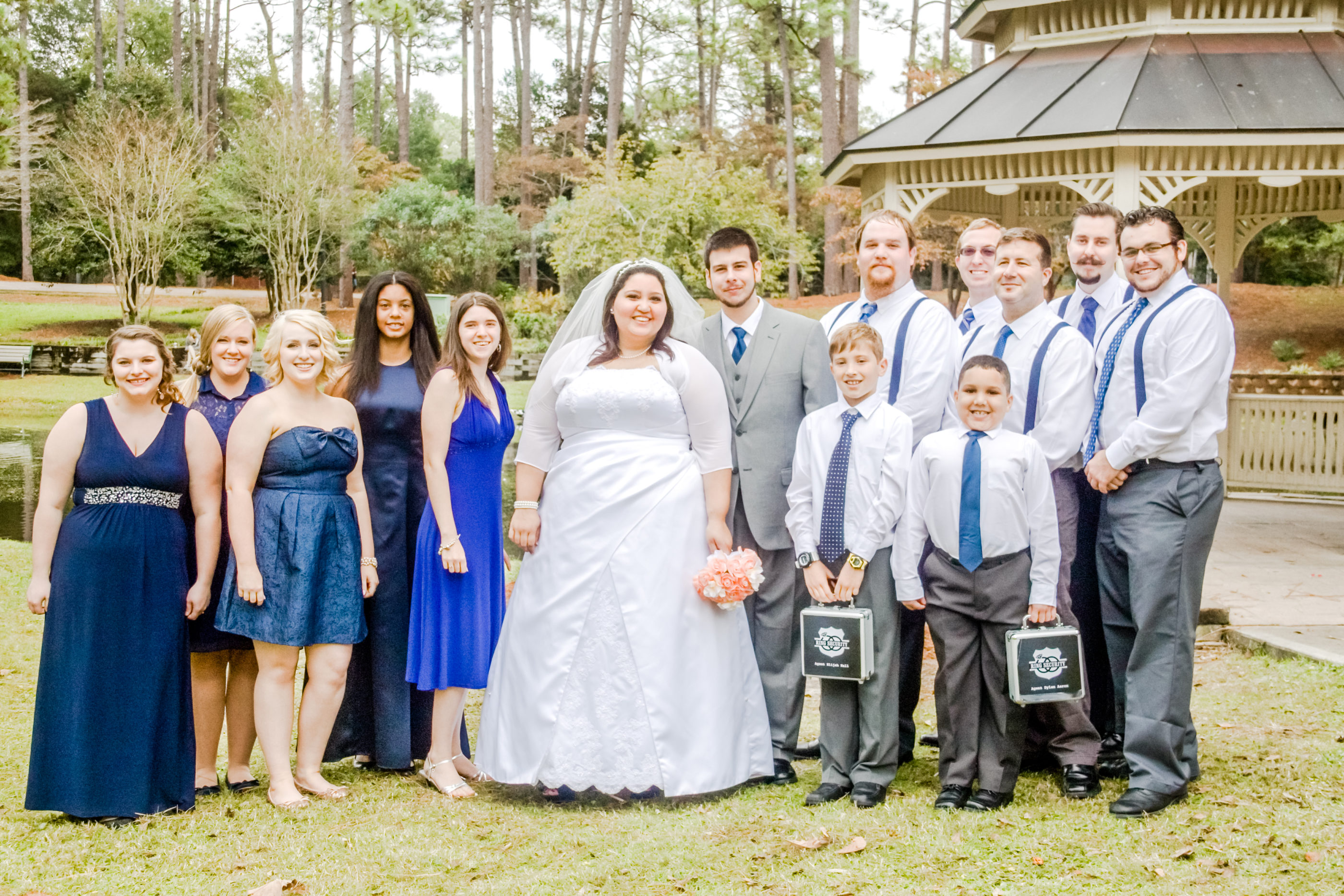

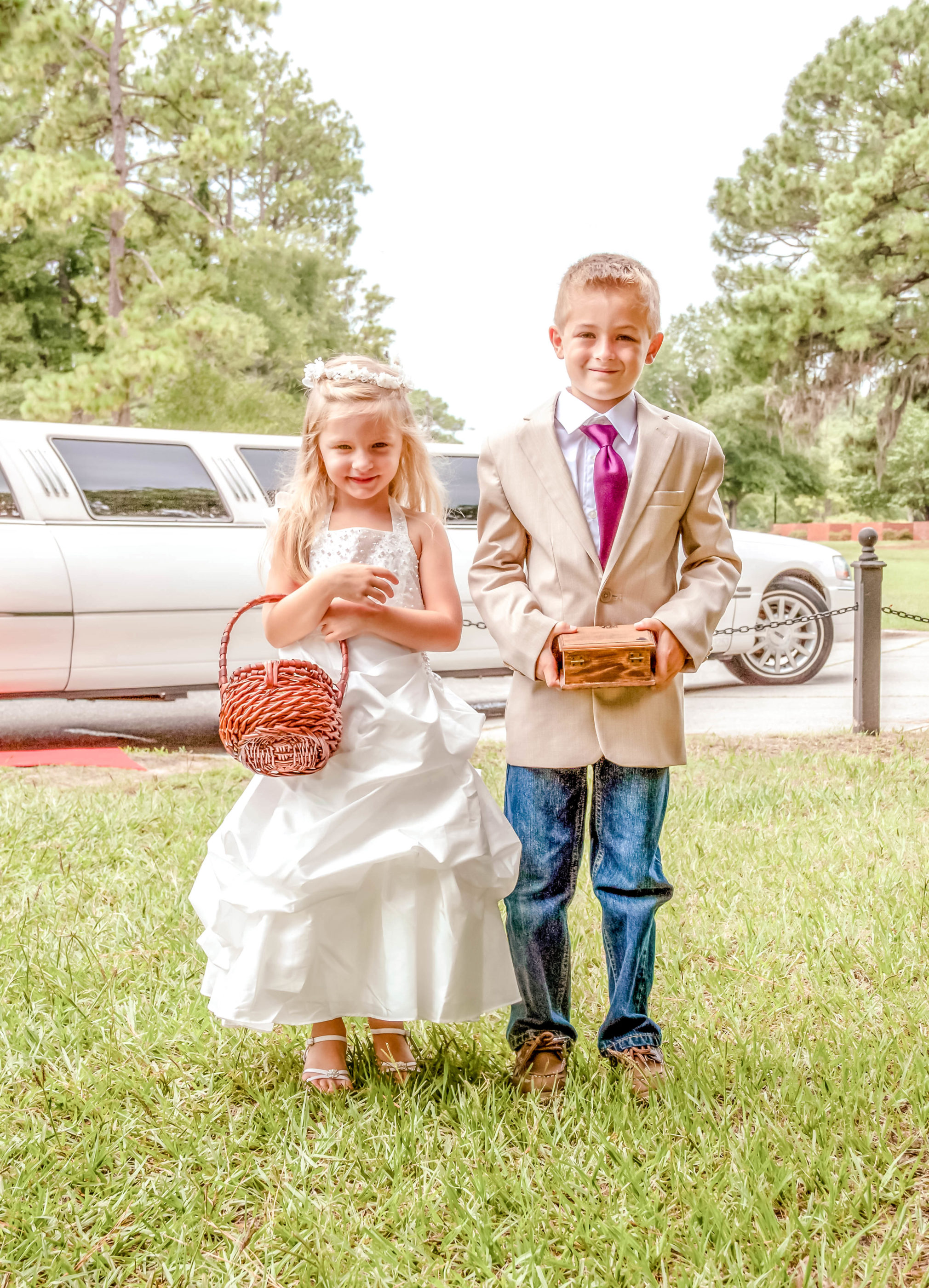
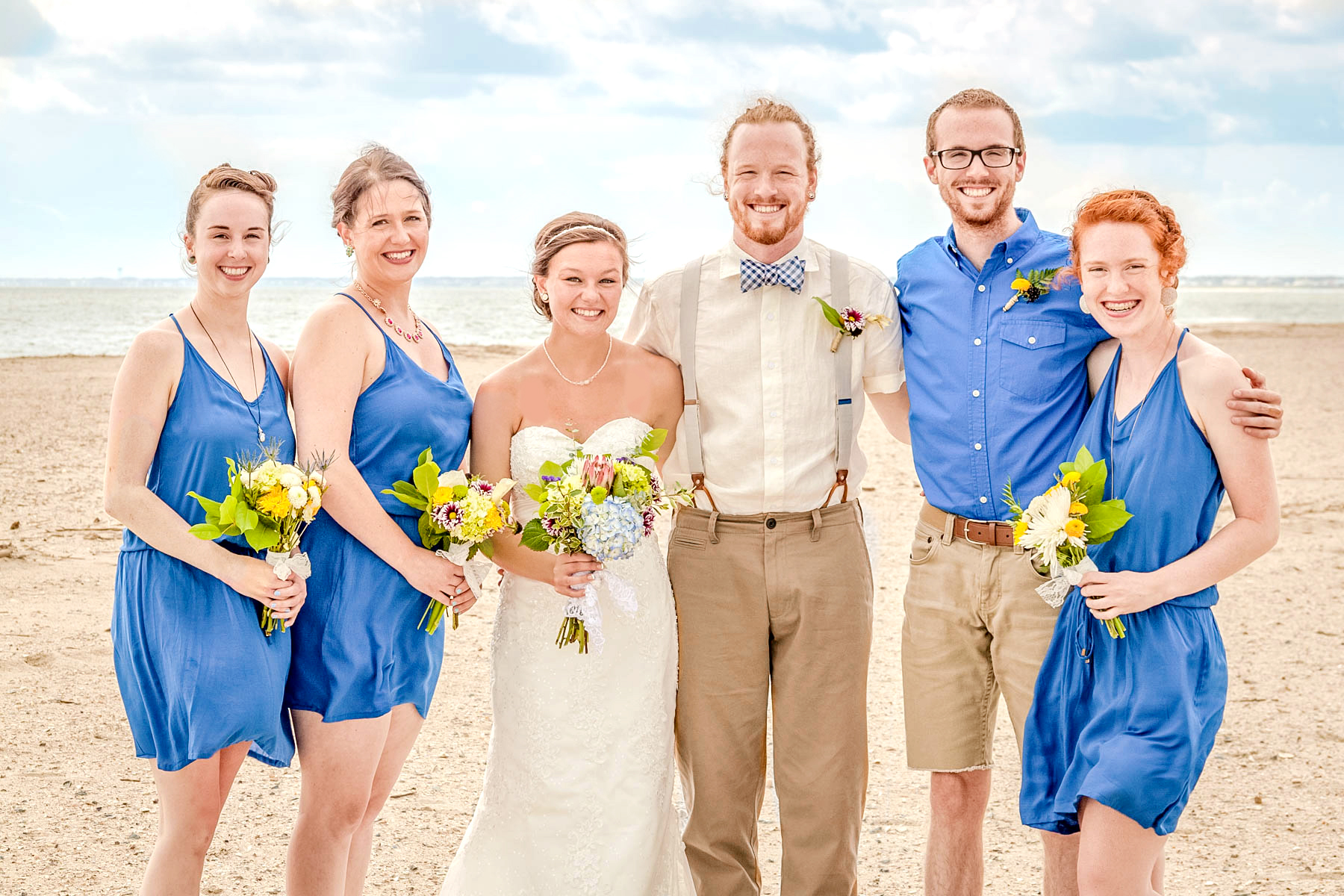
Wedding Terminology: Food, Beverage, & Catering
Consumption Bar
This setup bills you by the number of drinks that are consumed during your wedding. This is a good option if you don’t have a large number of guests.
Flat-Rate Bar
This setup bills you by the person, per hour… for example, $35 per person per hour. This is a good option if you have a of guests that like to drink a lot.
Corkage Fee
If you want to enjoy alcohol at your wedding, it’s going to cost you! Most venues and caterers charge an ‘opening fee’ per bottle of alcohol that you bring. The price can range anywhere from $5-$10 per bottle. TIP: If your caterer or venue provides the alcohol, you may be able to get away with not paying a corkage fee.
Food Station
A food station is a dinner where there are multiple smaller buffets or stations set up through the wedding reception area. Food stations allow your guests to mix and mingle with others while sampling a variety of menu items.
Canapé
A canape is cracker or puff pastry topped with something savory. But, the term can be interchangeable for small bites, hors d’oeuvres, or appetizers that are served before the dinner. TIP: Whatever you choose to serve during cocktail hour, try serving it canape style by making each dish bitesize.
Piping
This is a technique used to decorate a wedding cake.
Crudités
Crudidés is a fancy word for a simple appetizer of raw vegetables that are cut up and served with dip. Sounds like “veggies and dip” to me!
Buttercream
Frosting made of butter, sugar, and milk. The soft, creamy texture makes it the most common (and delicious!) icing for wedding desserts.
Fondant
Fondant is sweet tasting dough. It’s what gives wedding cakes a smooth exterior. Fondant provides a blank slate for the cake designer to build upon to create a specific look. For example, fondant can be dyed, marbled, molded, shaped, and sculpted to take your cake to an artistic level. It is edible, but some people prefer to remove it before serving cake slices to guest as it can be very sweet and a little gummy.
Ganache
This is a mixture of chocolate and cream, usually used to fill or garnish a wedding cake.
Royal Icing
This is a mixture of powdered sugar, water, and meringue powder. Royal Icing holds decorations together.
Naked Cake
You can easily identify this cake because it has almost no outer layer of frosting. It shows off the cake’s texture and filling. This trend has been around for some time now and has become quite popular.
Cutting Cake
The cutting cake is the cake that gets cut during the reception for the photo purposes. Therefore, it is not usually served to all the guests at the wedding. This is also a more expensive cake.
Sheet Cake
This is t a less expensive cake option but is a little different from your cutting cake typically. This cake usually cut in the kitchen and served to guests as individual slices.
Topper
Referring to the display on top of your wedding cake, this can be a traditional couple figurine or something more modern like laser-cut lettering.
Groom’s Cake
This is a small cake that represents the groom’s likes. The groom’s cake is served at the rehearsal dinner.
Hors d’oeuvres
Hors d’oeuvres are appetizers. Served them hot or cold during happy hour, your reception or at a cocktail party.
In-House Catering
This means that all of your wedding food and beverages will be handled by the venue, not an outside catering vendor. TIP: In-house caterers know their venue inside and out as well as how to operate within that space. Some venues will require you to use their in-house caterer, so ask about this when you first visit.
Menu Tasting
Your menu tasting is a sampling of the reception food and it happens about a month in advance of your wedding.
Cocktail Hour
Cocktail hour directly follows the ceremony and is a fun transition between quiet, emotional ceremony and the lively reception. Often times, this is when your photographer will take formal wedding photos of you and your spouse, the wedding party, and your family. To hold a successful cocktail party, you need 3 things: drinks, food, and music. TIP: Consider a signature cocktail, a specific selection of wine or beer, or open bar. Think small bitesize grazing stations where guests have to move about.
Buffet
A catering style where the food in arranged in one place for guests to walk by and take some of what seems enticing. This is an alternative to the usually three-course meal and is less formal.
Open Bar
If you have an open bar at your wedding, you are providing your guests a full bar of liquor, wine, and beer. It’s definitely the most expensive route when serving alcohol to your guests, so you may want to get creative if it’s not in your budget.
Signature Cocktail
Yay! You are finally married… time to get the party started with cocktail hour. Make the occasion really memorable with a signature cocktail that you and your spouse love. It could be classic, or a creative seasonal concoction crafted by your caterer just for your big day! TIP: Don’t’ forget the sign that tells all of your guests about your signature drink and what’s in it!
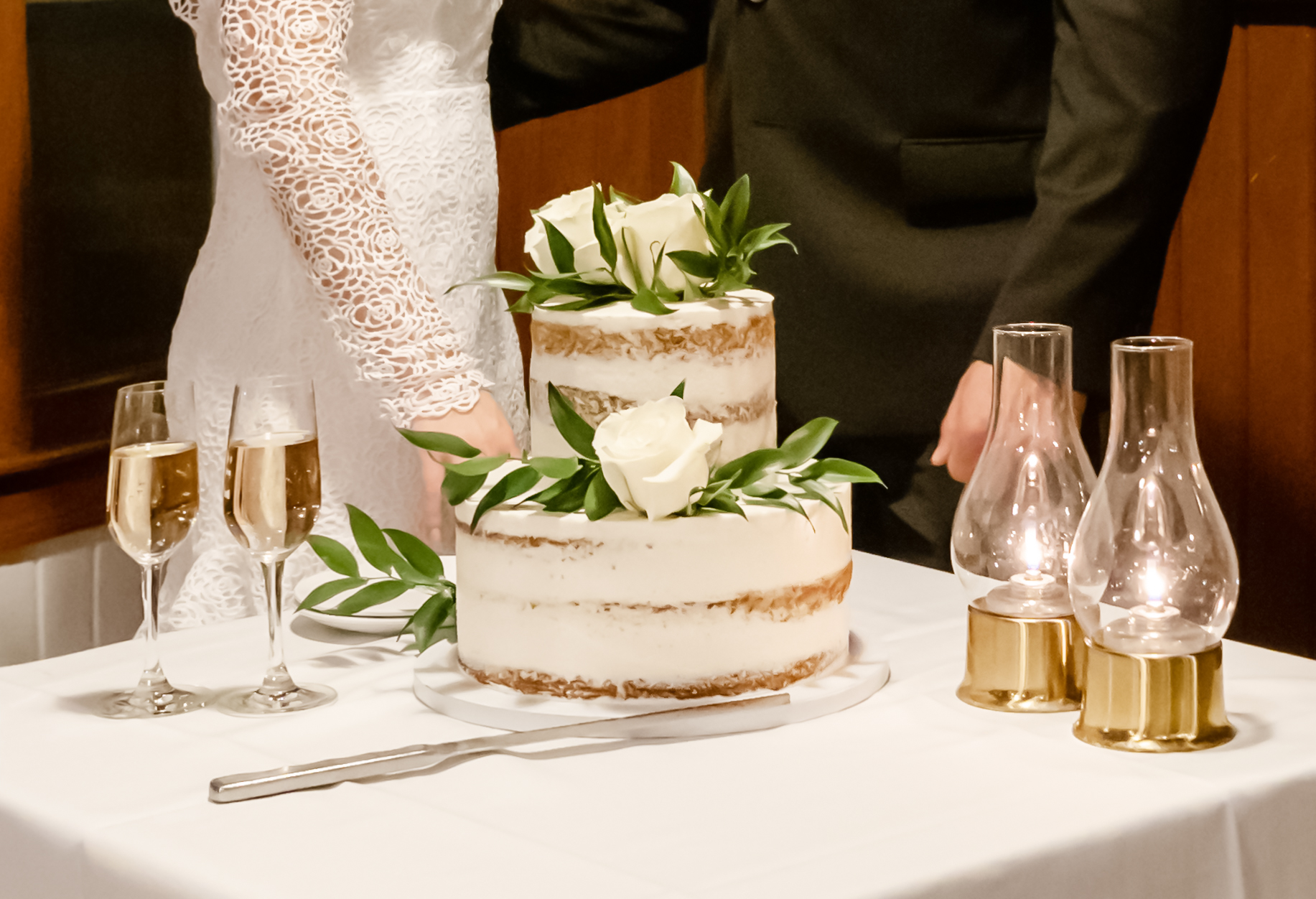
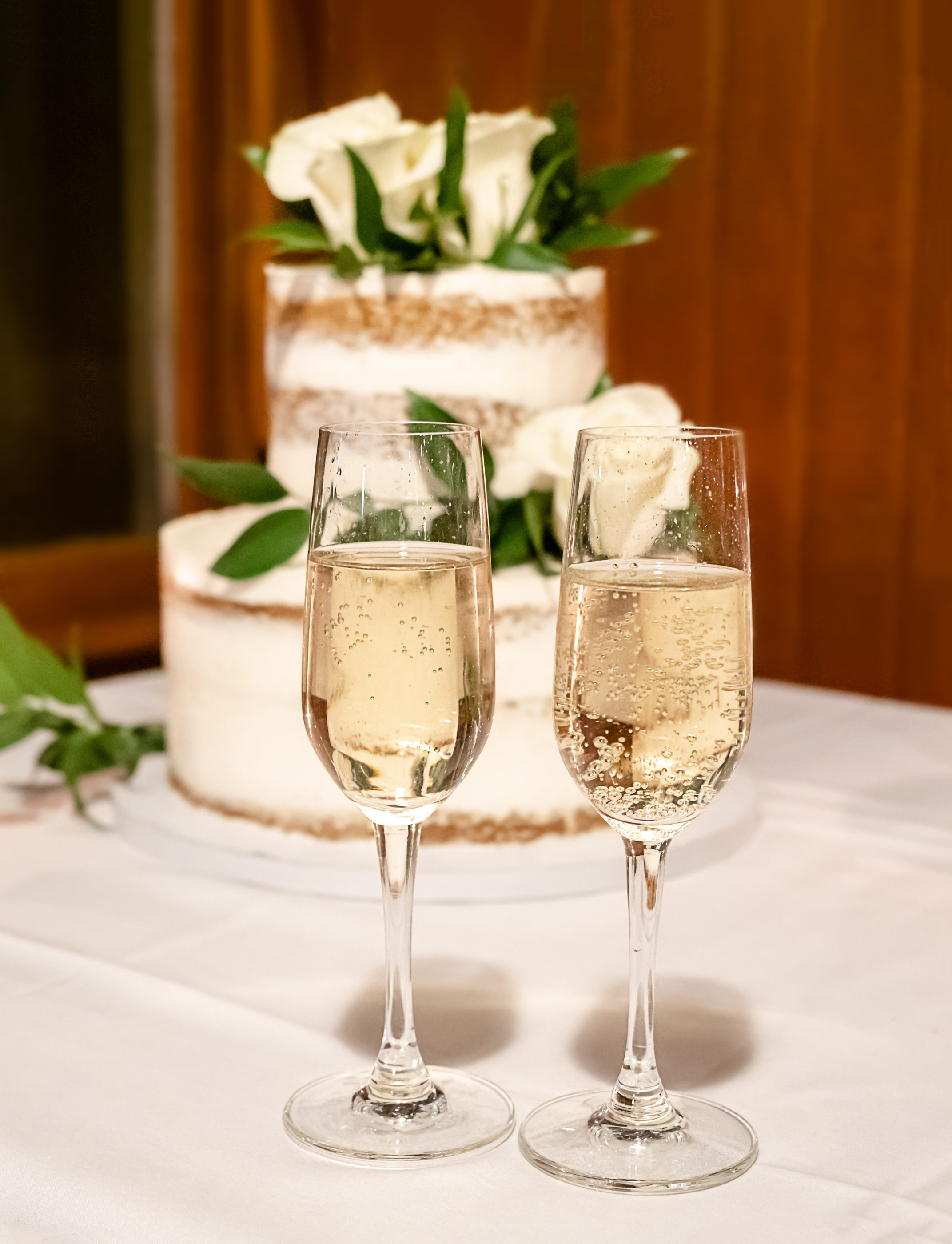

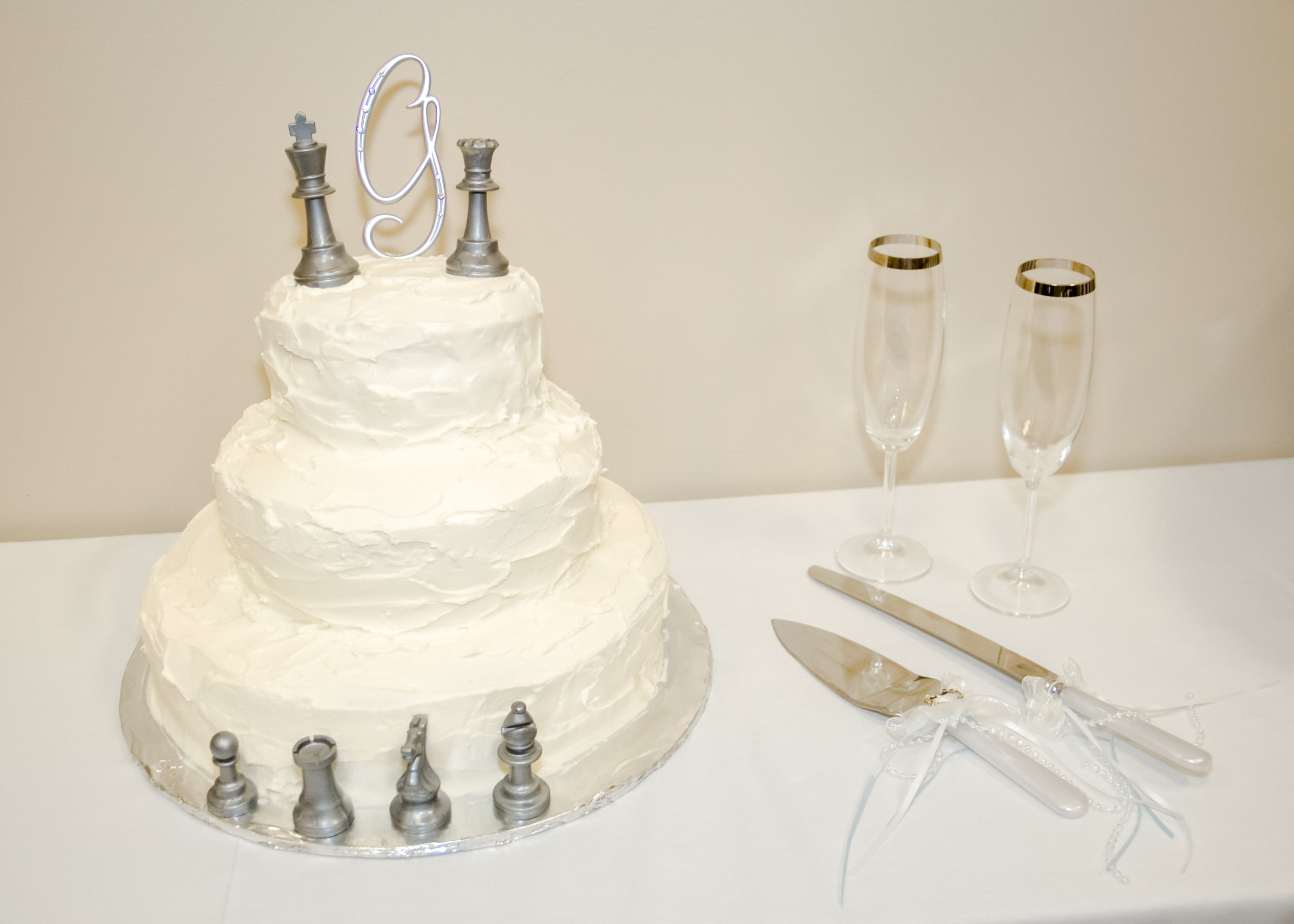

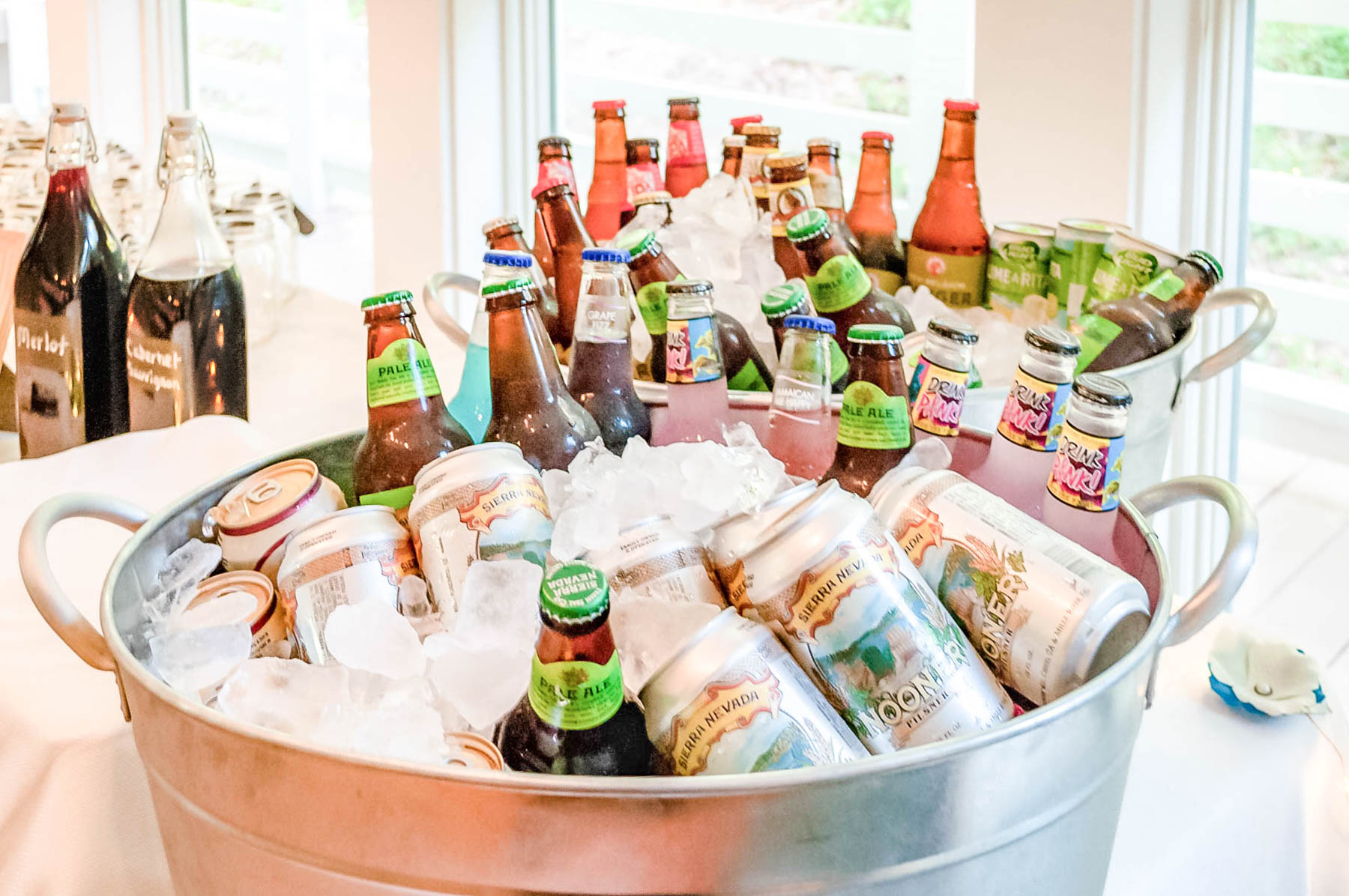
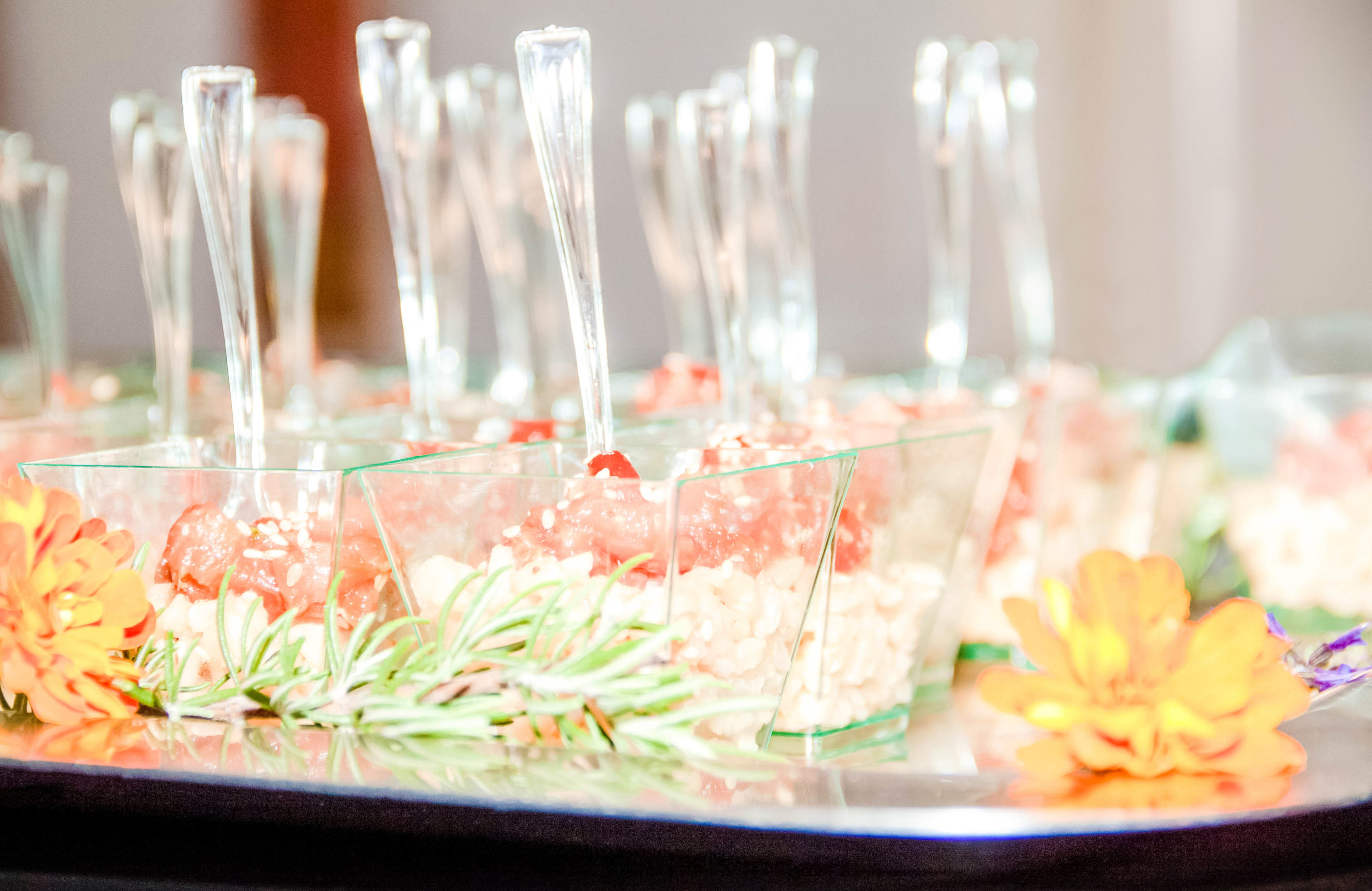
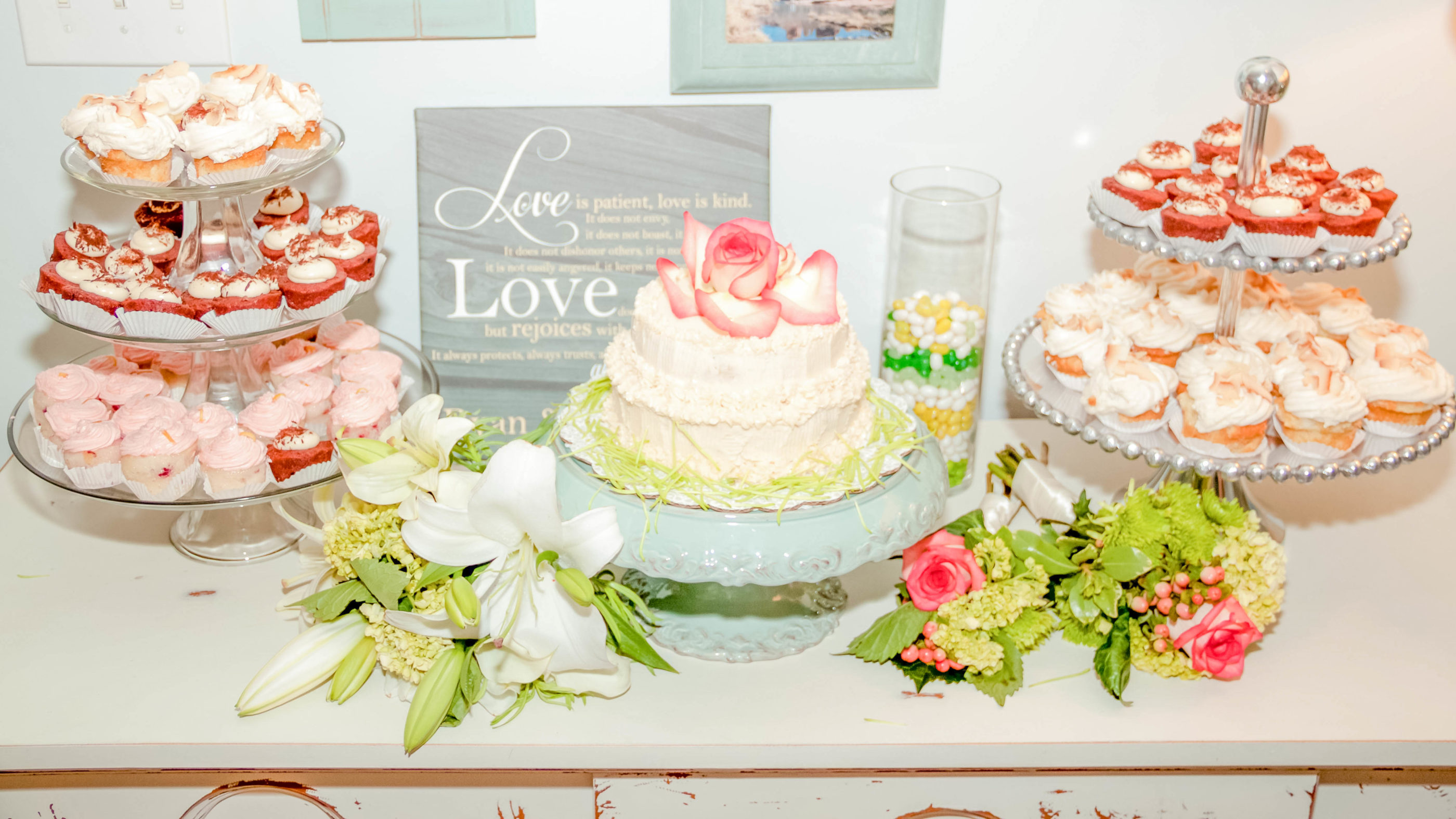
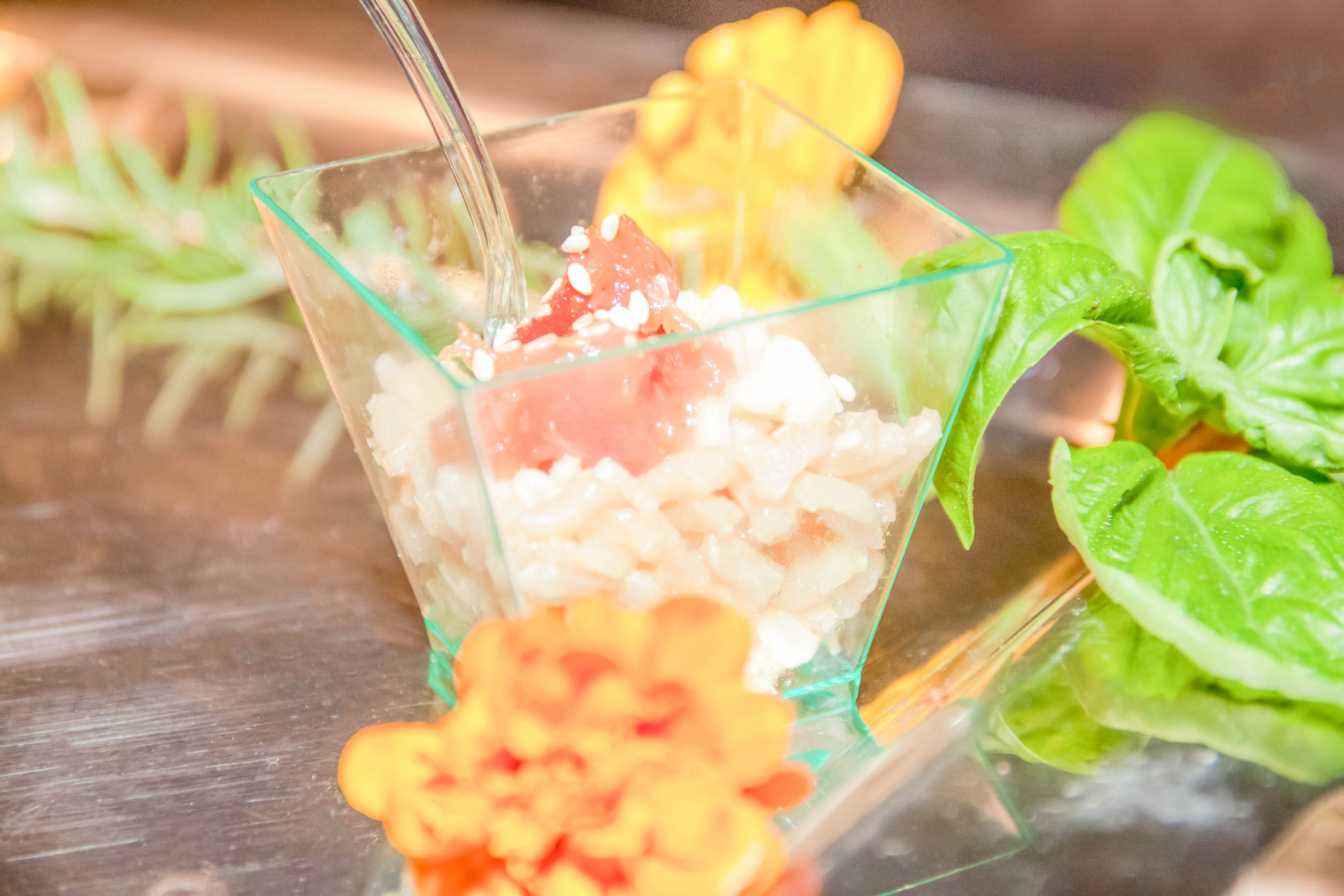
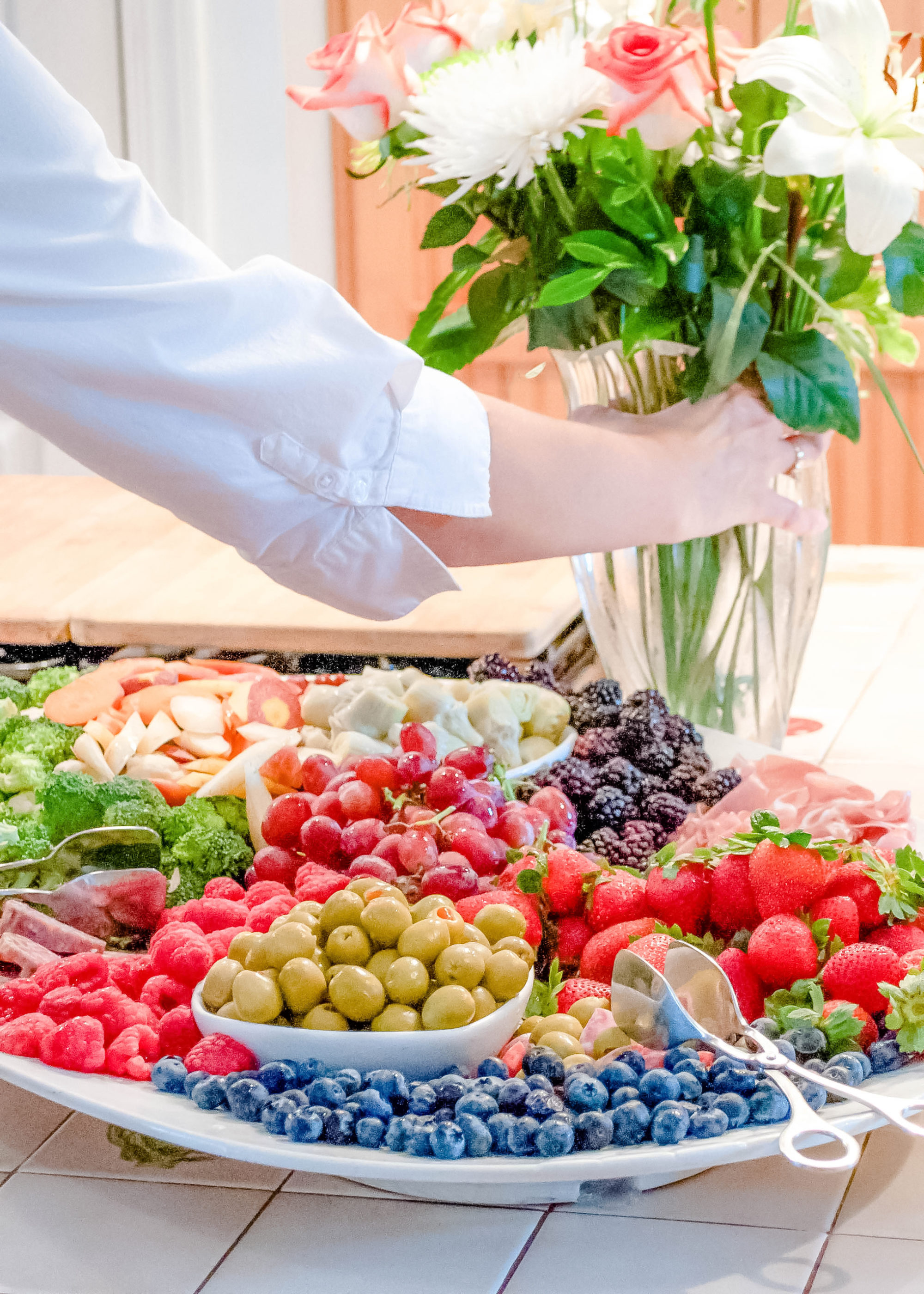

Wedding Terminology: Floral
Filler
Flowers and foliage “fill” the spaces between flowers in bouquets and floral arrangements. These are filler. They have clusters of individual flowers on a single stem or multiple leaves.
Pomander
A pomander is a round bouquet of flowers with a ribbon handle. This is a really cute option for a flower girl who won’t be throwing flowers down the aisle.
Corsage
Mothers and grandmothers usually wear corsages. Corsages are petite floral arrangements worn on the wrist. TIP: For a modern twist, swap out the elastic for a metal cuff with flowers attached or a pinned boutonniere.
Boutonniere
For me, this word is one of the hardest words to spell in the wedding industry. Men traditionally wear a small flower pinned on their left lapel, over their heart. TIP: Consider opting for a boutonniere-style flower for the Mother of the Bride, Mother of the Groom and Grandmas as an alternative to a corsage.
Bouquet
A bouquet is a bundles of flowers that you and your bridesmaids carry as you all walk down the aisle. They care range in size from petite (called a nosegay) to large. The shape of your bouquet can make a statement by being lush or more architectural in shape.
Nosegay
A small, handheld bouquet of flowers is a nosegay. You will know the bouquet is a nosegay by its petite size and shape. Bridesmaids or junior bridesmaids carry nosegays to contrast in size against your much larger and more ornate flowers.
Centerpiece
These are arrangements that fill the center of a table. Many times, the centerpiece is a floral arrangement that displays the colors of the wedding. Often you will find some kind of lighting element or an unexpected element like fruit to add beauty and interest.
Flower Wall
The dramatic installation of florals and greenery on a wall is, just like it sounds, a wall of flowers! It’s major statement piece and makes a gorgeous backdrop for the ceremony and photos. You can also use it later during the day as a creative way to display your escort cards, as a backdrop for a photobooth, or as a play for the band or DJ to set up.
Garland
A strand of greenery or flowers used to decorate any surface or space at your wedding is garland. TIP: Consider combining greenery and flowers to create a garland that will drape the length of the table and drag the floor on either side. Nest votives randomly throughout the garland and add a few taper candles to the display to add a little height to the table and draw the guest’s eyes upward. Wedding photographers love to photograph these kinds of displays in a table scape.
Installation
No doubt you have seen the lush floral chandeliers, flower walls, towering arrangements, and waterfall style garlands. They are gorgeous and eye-catching, but they require more time and technique to bring the vision to life in the space to put together. These are installations. And the effect that these installations have on the overall space and your guests is priceless. TIP: If you want a beautiful statement piece but don’t want to blow your budget, consider having one single dramatic installation over the dance floor and simpler centerpieces.

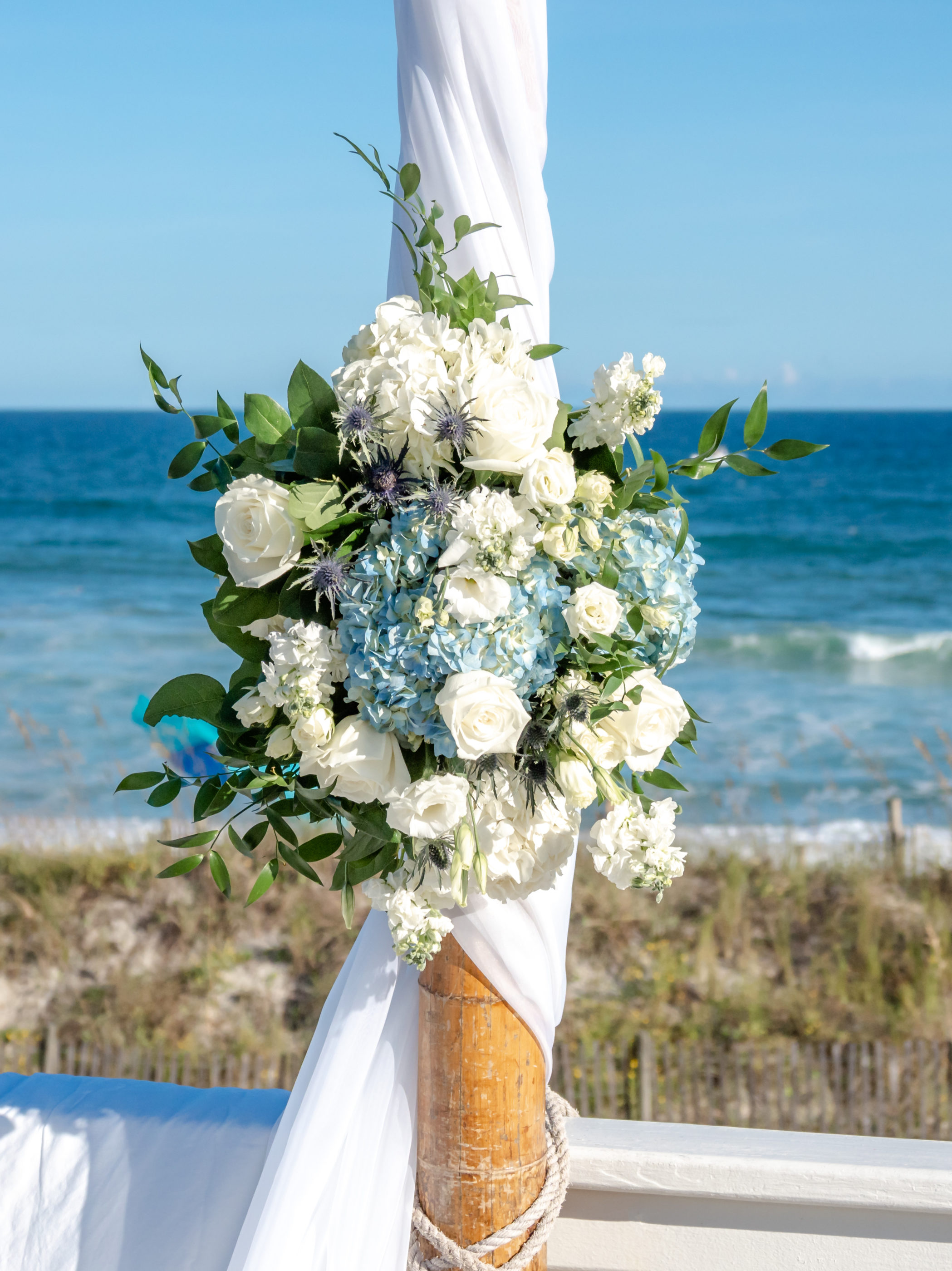
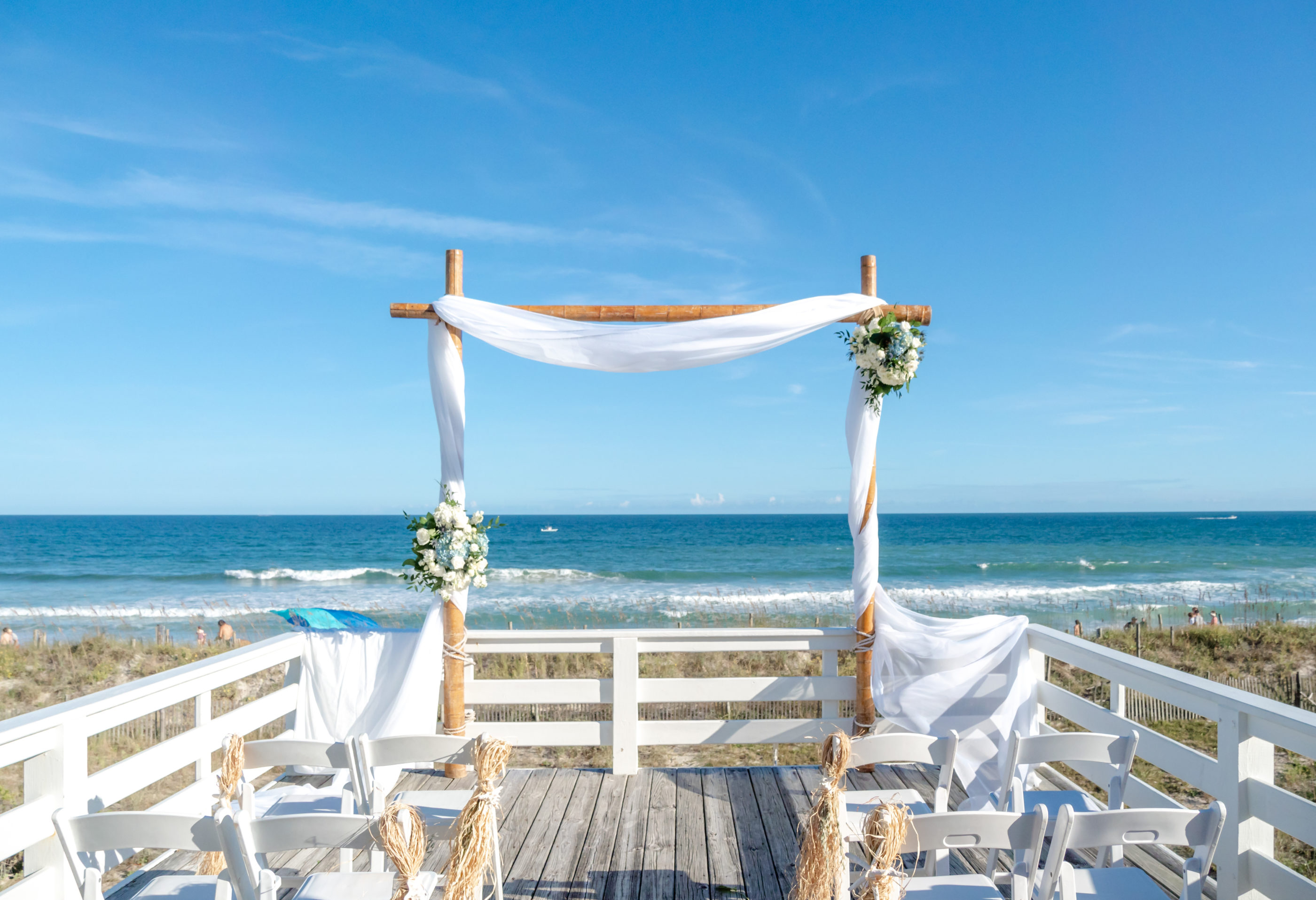


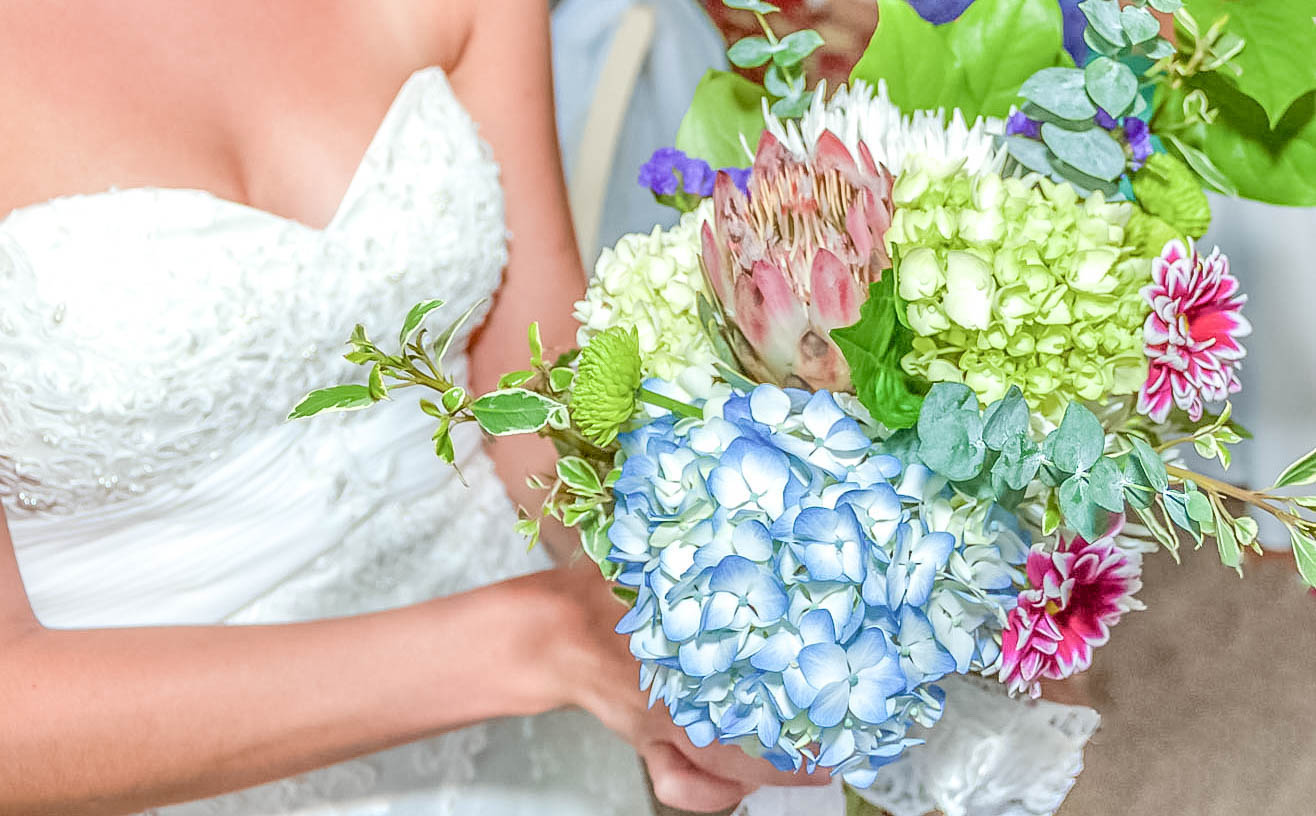
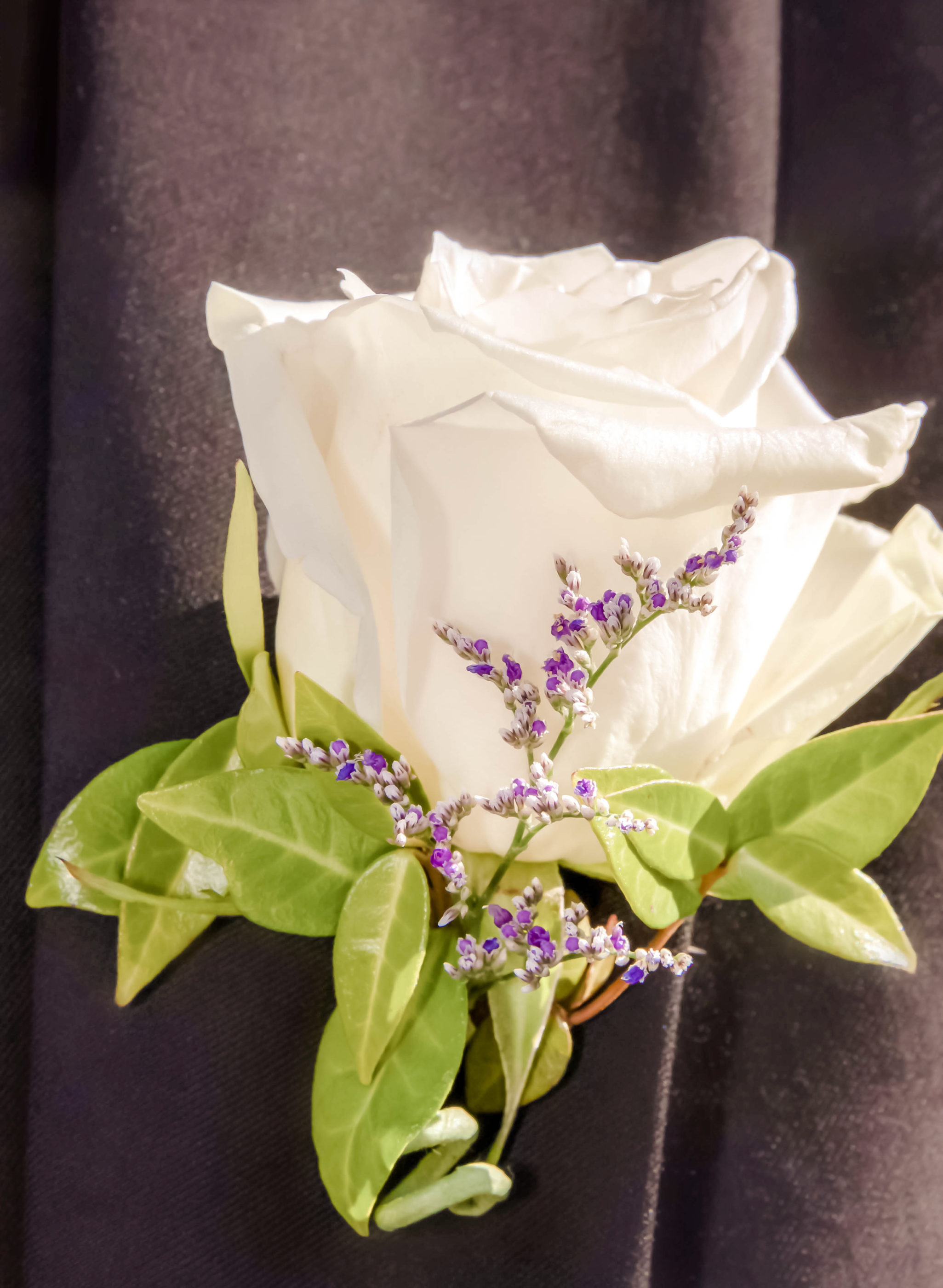
Wedding Terminology: Music & Ceremony
First Look
This special moment happens before the ceremony. It’s the time that you reveal your wedding day look to your fiancé and spend time together. Other variations are a first look with your Dad or with your bridesmaids. This is also a great way to gain more photos from your BIG day.
Celebrant / Officiant
This is the person who actually marries you and your fiancé. The must have the “power” to pronounce you married which is earned by being ordained. So, just about anyone can marry you… so long as they are ordained.
Justice of the Peace
This is a judge (usually over a local jurisdiction) who is able to perform civil marriages in addition to overseeing court cases. They are a secular alternative to a religious leader and can perform your marriage ceremony in a courthouse setting and sometimes at your venue.
Vows
These are the promises make by the wedding couple to each other during the ceremony. These promises usually consists of vows to trust, love, and support one another. While some couples prefer to use more traditional vows or readings, others prefer to write their own.
Procession
This is the part of the wedding ceremony when each member of your wedding party will walk down the aisle and take their place on the appropriate side. The procession ends with your grand entrance! It specifically refers to the order in which the brides and bridesmaids walk down the aisle toward the awaiting groom and groomsmen.
Prelude
This is the soft background music at the beginning of the wedding, before the ceremony begins, as guests arrive and are seated. TIP: This is a great way to include your aunt who plays the piano or your 13-year-old cousin that plays the violin, viola, or cello!
Processional
The music that plays while your wedding party and ultimately you walk down the aisle. This can be one song or a combination of songs. It’s what officially begins the ceremony.
Recessional
This is the music that you and your spouse will make your grand exit to followed by your wedding party. Photos during the recessional are some of our favorites from the ceremony. You can just see the joy and happiness on each couple’s faces!
Aisle
The walkway at your ceremony between seating areas for your families and friends that you and your fiancé will walk down. TIP: make sure that there is enough walking room width for your dress and whoever is going to walk you down the aisle, so you don’t brush any decorations on the outsides of the rows.
Alter
Specifically, this is the structure or table at the front of the house of worship. In a wedding, the altar is the physical spot where you and your fiancé exchange your vows during religious and non-religious ceremonies.
Wedding Terminology: Dress Shops
Sample Sale
Trying to save money on your wedding dress? Look for sample sales at your local bridal salons. Salons run these kinds of sales from time to time in order to clear out the existing inventory and make room for new inventory. Chances are, you can buy the dress of your dreams at an incredible price. Just remember that samples have been tried on by other brides, so your dress may need to be cleaned before you walk down the aisle. The bridal salon can recommend a local dry cleaner and seamstress make your off-the-rack dress look and feel like it’s brand new.
Trunk Show
When bridal salons hold sample sales, they are making room for new merchandise. One of the best ways to purchase a made-to-order wedding dress is from the newest collection is to attend their trunk show. Often times the designer will attend. So why should you shop for your dress during a trunk show? Most bridal salons don’t carry every dress in a designer’s line, but those additional dresses may be displayed during the trunk show which means the selection will be bigger. Bridal salons often offer special pricing during the show, so you mind find your dream dress for less. And finally, when the designer is in the bridal salon with you, they can share customization options like a slight neckline change or a different fabric type.
Appliqué
This term is used a lot at wedding dress shops. Appliqués are 3D, textured designs created from pieces of lace or fabric that is sewn onto a base fabric. One of my favorite appliqué ideas is putting your wedding date on the underside of your wedding gown.
A-Line
This is the most universally flattering dress style. It’s slim through the bodice and gradually flares out from the waist forming a soft “A” shape.
Bodice
The bodice is the upper part of your wedding dress that goes around your ribcage. It connects the neckline, bust and waistline. The bodice’s fit is the most important because the lower part normally has a looser or more forgiving fit.
Alterations
Alterations are adjustments made to your wedding dress by a seamstress to custom fit it to your body. Because most wedding dresses and bridesmaids’ dresses are not usually custom-made, alterations are needed to ensure a perfect fit. TIP: Altering and tailoring are the same thing, just like a seamstress and tailor are the same.
Ball Gown
This style of wedding dress is the most formal. It has a traditional shape and is fitted through the bodice and dramatically flares away from the body into a full skirt. TIP: This style of wedding dress often needs a crinoline to help hold the shape and extra floofing before you walk down the aisle.
Crinoline
Your bridal stylist is an expert in helping you choose the right underpinning for your wedding dress. You’ll be able to accentuate the line of almost any style wedding gown you chose with a bridal slip. A poofy crinoline will add dimension and fluff to your ballgown skirts, while a tiered slip with a train will support any softly layered skirt.
Floof
This is another way of saying fluff your wedding dress.
Fit-and-Flare
The fit-and-flare style of wedding dress is fitted through the bodice and hips and softly flares out just below the hip line.
Mermaid
This style of wedding dress tightly hugs the torso and hips and the mermaid skirt dramatically flares out from the knee or just below it.
Empire
This style of wedding dress is a high-waisted style that cinches just below the bust line. TIP: This is a fantastic wedding dress style for pregnant bride or brides with curvy figures.
Sheath
This style of wedding dress has very little structure. It is a long, narrow, close-to-the-body style wedding dress that is designed to loosely show off your curves.
Bateau or Boat Neck
This style of wedding dress has a wide, modest neckline that runs horizontally across the collarbone from shoulder to shoulder. TIP: A great example of this neckline is Megan Markle’s wedding dress!
Queen Ann Neckline
Strapless, V-neck, off-the-shoulder… so many terms. So, what exactly is a Queen Anne neckline? This neckline is so flattering and frames your face while making you feel royal. Wedding dresses with this neckline will have a high back and sleeves and a sweetheart neckline. Cap sleeves and full-length sleeves are the most common. The neckline accents your chest and neck while keeping your shoulders coverage which is a beautiful compromise for any bride who wants to modestly show a little skin. TIP: You can also achieve this same look by wearing a jacket over a strapless gown that has a sweetheart neckline.
Illusion Neckline
An illusion neckline is made from tulle, net, or lace. It’s a panel of sheer fabric attached to the bodice that extends to the collar. TIP: This is a great option for the bride who wants coverage at the top, but also wants a sweetheart neckline.
Sweetheart Neckline
This neckline has a distinctive heart shape and is perfect for the bride who wants to enhance or create the illusion of curves. It also lengthens the neck and adds balance to the brides’ overall shape.
Convertible Dress
A convertible dress is a wedding dress that can be worn multiple ways. For example, a wedding dress with a detachable skirt is a convertible dress.
Sheet Lace
Sheet lace is a soft, delicate type of lace that lays over another fabric. It has a consistent pattern. Sheet lace is typical on wedding dresses and bridesmaids’ dresses.
Embroidered Lace
Embroidery is a detailed stitching pattern that is bolder and more patterned than sheet lace.
Gusset
A gusset is a diamond or triangle piece of fabric. The gusset is added to the side of your wedding dress or a bridesmaid’s dress when the dress is too small.
Silhouette
As it applies to weddings, this refers to the shape of various wedding dress styles. Experts will refer to the different styles by their silhouette name most often. These include ballgown, fit-and-flare, mermaid, and more.
Bustle
Bustling is a tailoring trick used to allow you to walk and dance in your wedding dress after the ceremony and photos are done. It’s a series of loops and buttons that creatively pull up, tuck, and shorten the back of your dress so you can move around easily. There are two types of bustle: French bustle and American bustle. The French bustle tucks most of the train up and under your dress. Because it attaches to the underside of your dress, most of your train will be hidden. The American bustle is the opposite… it attaches on the outside of your dress and pulls the train up towards your waist to create a pretty drape that’s visible from the outside. The dress shop or seamstress will help determine which bustle is most flattering to your dress at your fitting.
Garter
The wedding garter is a piece of lingerie that you wear under your wedding dress just above the knee. During the reception, your groom will remove the garter from underneath your dress and toss it the single guys. It’s very similar to the bouquet toss… the bachelor that catches the garter is believed to be the next one to marry.
Train
The train is an extension on your wedding dress, and it can range from a few inches to multiple feet trailing behind you. A dramatically long train makes a grand entrance. Most guests will be looking at the back of your dress during the ceremony so pay attention to the train and how the back looks. Bustling the train on your wedding dress is a must if you want to be able to move about freely and dance during your reception. TIP: Don’t forget to have your wedding planner fluff your dress and train just before you walk down the aisle for maximum drama. And be sure to have your train bustled so you or someone else doesn’t trip on it during your reception.
Watteau-Length
A watteau train attaches to the shoulders and falls loosely to the hem of the dress creating a dramatic cape-like effect.
Sweep-Length
A sweep train, also called a “brush,” train. It extends a foot or less from where the dress fabric hits the floor. A sweep train is subtle, yet romantic.
Court-Length
A court train extends two feet from where the fabric hits the floor. It extends one foot beyond the sweep train.
Chapel-Length
A chapel train is one of the most popular train styles. A chapel train extends three to four-and-a-half feet from the waistline.
Cathedral-Length
A cathedral train is formal style train that extends six to seven-and-half feet from the waistline and has a dramatic look and feel.
Monarch-Length
A Monarch train, as “royal” train, is a very formal style train that flows 12 feet or more from the waist.
Tulle
Veils and wedding dresses are made from a fine mesh called tulle. Tulle is commonly used in princess gowns to add extra ‘floof’.
Temple Ready
Temple ready means the dress is acceptable for the place of worship, such as the temple. To be temple worthy, the wedding dress should be white, which is symbolic for purity, with a high neckline, long sleeves, and a floor-length skirt. An off-the-rack wedding dress can be altered to meet the temple-ready requirements.
Wedding Terminology: Wedding Planning
Wedding Planner
This is a wedding progression hired to orchestrate your wedding from start to finish. This person handles all of the pre-wedding planning, set-up and installation for your BIG day, and keeps you on time according to your timeline on the BIG day.
Wedding Coordinator
Most wedding planners offer coordination services, but a wedding coordinator specifically keeps contact with all of the vendors and serves as a liaison for you and your fiancé. Most wedding coordinators offer month-of, week-of, and day-of services.
Day-Of Coordinator
If your wedding budget won’t allow for a full-service wedding planner, consider hiring a day-of coordinator. They are professionals who take over the production side of your wedding day by overseeing set-up and making sure your timeline runs smoothly. This is very important! By hiring a day-of coordinator, you are free to focus on being a Bride and you and your loved ones can celebrate your marriage rather than stress over whether or not they brought your wedding day vision to life.
Full Planning
This is a wedding planning and coordination combination for couples who want a full-time wedding planning professional to oversee every single aspect of their wedding planning process and their wedding day. Full planning includes vendor management, scheduling, marriage license, tracking RSVPs, creating the planning timeline, and overseeing the big day itself, etc.
Partial Planning
This is for the couple who needs some help but has also got the majority of the planning done. It usually involves month-of wedding coordination and some additional planning services for a set number of hours determined by the couple. This is very helpful for couples who want to be very involved in the planning but need professional coordination as the day gets closer.
Kickback
It’s important to ask your vendors if they receive referral commissions or kickbacks when they refer you to another vendor in their network of friends before you sign a contract. Kickbacks are an amount of money that a vendor receives in return for getting a client to hire another vendor. For example, a wedding planner may get kickbacks from a florist if you hire them based on the wedding planner’s recommendation. Just have a conversation before you sign a contract to make sure that you aren’t paying a premium to cover a communion that will be paid as an incentive for a recommendation. TIP: The best time to have this conversation is when you discuss pricing and fees with each vendor.
Rain Plan
Your rain plan is the wedding day backup plan for in case of rain and inclement weather.
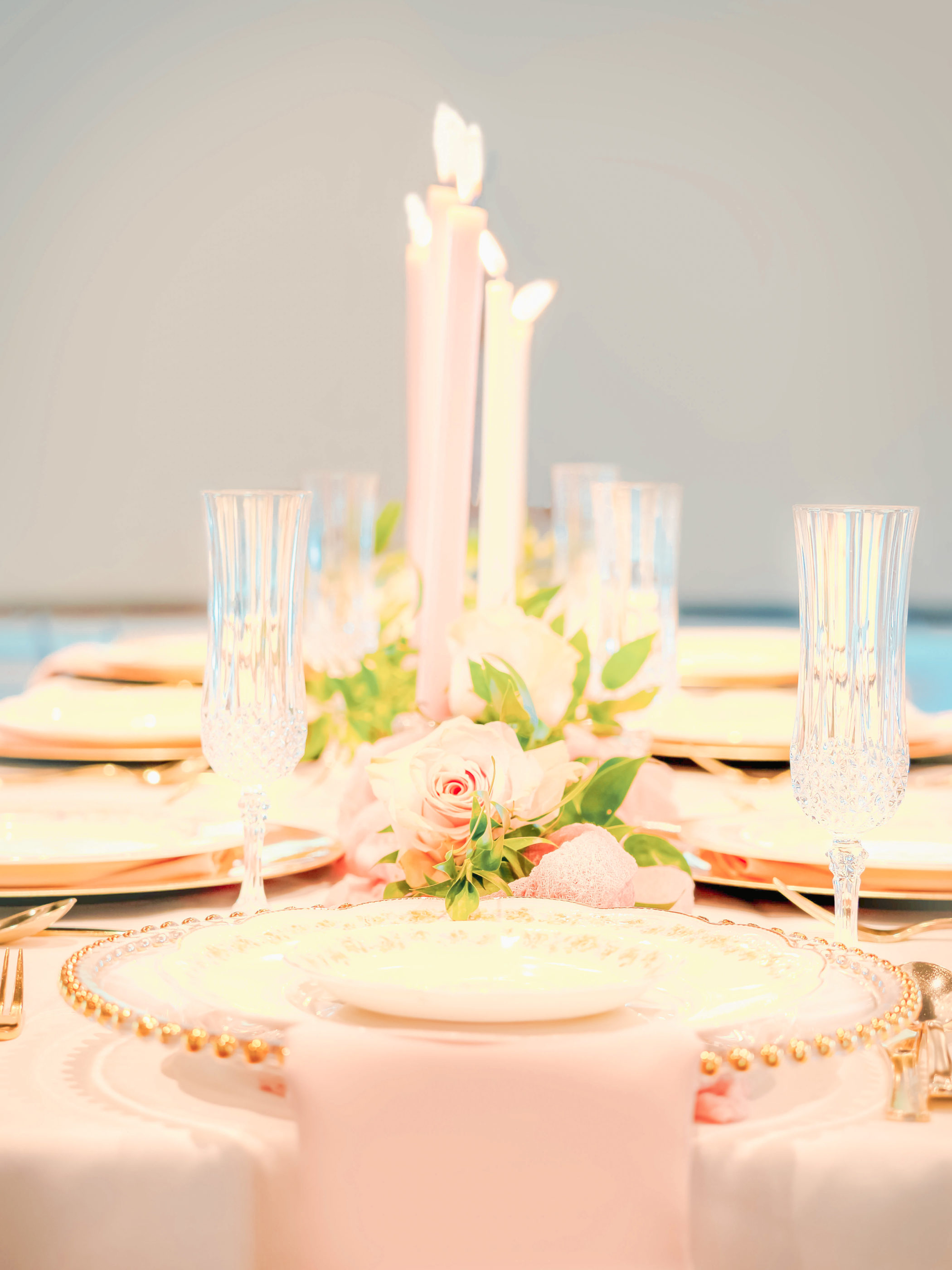
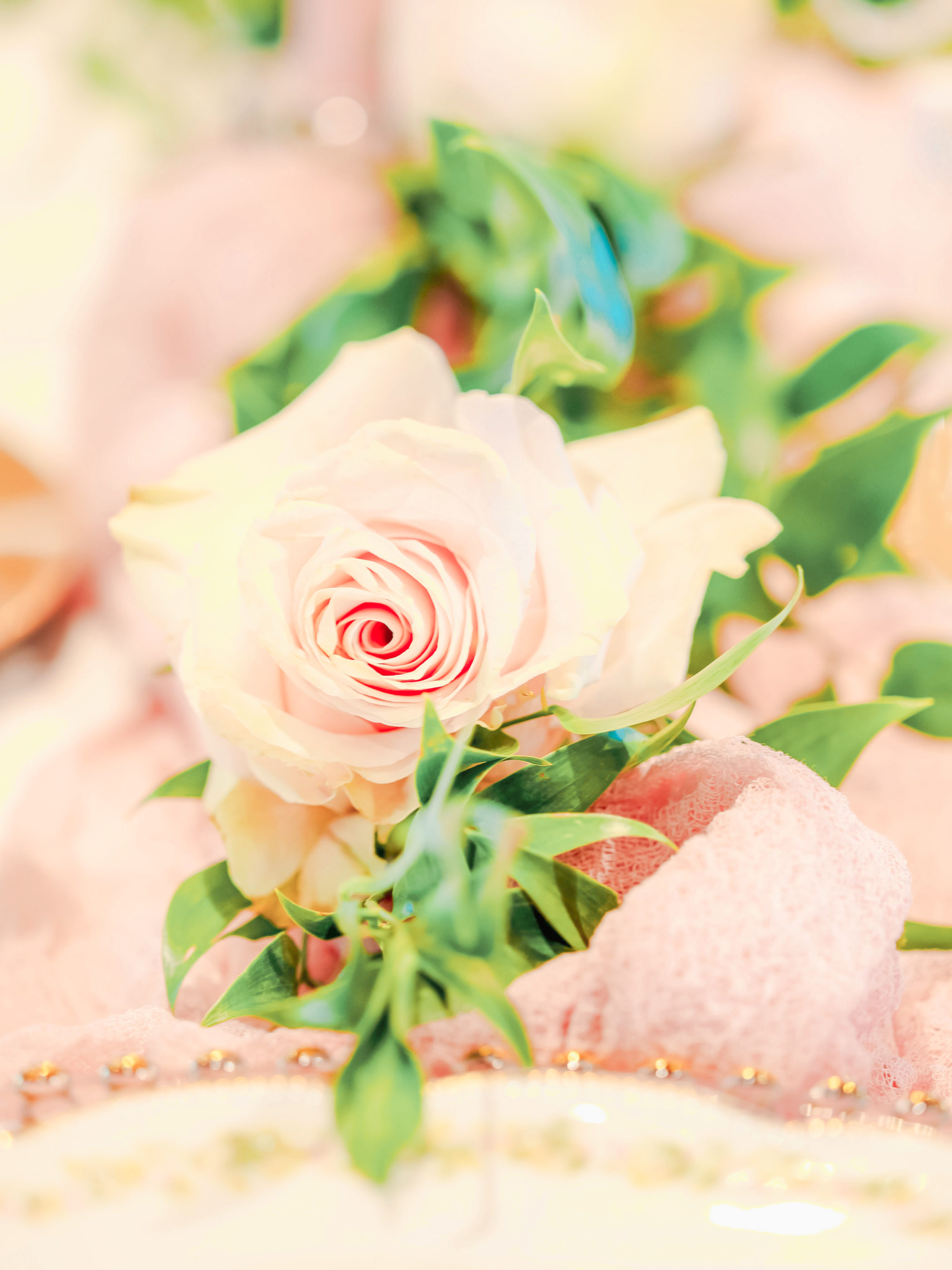
Wedding Terminology: Reception Details & Decor
Palette
The word palette refers to your selected group of colors for your wedding day. Your palette usually features three colors – a main color, a neutral, and an accent. It influences everything related to your wedding from the linens to the flowers, even down to the color of ink that will be printed on your invitation suite. TIP: You may want to include a few different shades of a color in your palette like blush, pink, and fuchsia.
Mood Board
A collection of images and swatches that you gather together to use as inspiration for your wedding day vibe and design and then mounted onto a board is called a mood board. This is very helpful when you are trying to convey your overall design and vision for your wedding to other vendors. Your wedding planner can help you put your mood board together. TIP: Take your mood board with you when you visit with vendors and go shopping for your wedding. It will help keep your design and overall vision on track and help your vendors to visually understand your goals.
Floor Plan
This is the layout of your reception area. It’s a bird’s eye view of your reception area specifying where tables, chairs, wedding cake, head table, dance floor, etc. will all be located.
Seating Chart
This is a complete list of all of the guests that will be attending your wedding and where they will be sitting. From this, you can make the Escort Cards, Escort Card Display, or Place Cards.
Escort Card
Place cards (covered below) and escort cards are often used interchangeably. Escort cards are displayed clos tot the entrance of the reception space to direct each guest to an assigned dinner table.
Escort Card Display
Rather than displaying several individual escort cards, many couples are choosing to have a sign that is a statement piece at their wedding. In an escort card display, the table assignments are notated larger on the sign with the guest names arranged below.
Place Card
If you recall, the escort card tells your guests what table they will be sitting at during the reception. Once your guests reach their table, the place card tells them exactly which seat is theirs. If your wedding is less formal, you could choose to omit place cards altogether giving your guests the open seating option. Your escort card will tell each guest which table is theirs, but once they find that table, they can choose their own chair. TIP: If your wedding is a formal affair or black tie, it’s essential to use place cards and carefully choose the seating arrangement in advance.
Head Table
Perhaps you have heard of the sweetheart table? Well, this is just like that, only bigger. It’s a larger VIP table where you and your spouse sit, surrounded by your wedding party and/or families. Usually, the head table is centered off to the right of the dance floor for best views of the toasts. And it will often times have more elaborate decorations than the other tables in the reception area.
Place Setting
The place setting is the grouping of items that sits on the table in front of each guests chair around the table. Place settings can be very simple or quite elaborate. Often times the place setting is more elaborate than what you’d see at home because of the large number of courses served. A customary place setting at a formal wedding would include a charger, a dinner plate, a salad plate, a bread plate with bread knife, salad and dinner forks, salad and dinner knives, a soup spoon, a dessert spoon and fork, a water glass, and at least one wine glass. TIP: Try to coordinate your place setting color and style with the florals on the table, the linens, and the printed menu. This will not only support for color palette but also make for beautiful detail shots in your wedding album.
Candle
There are so many names for various sizes of candles. Tealights are small, ½ inch tall candles that offer delicate low light. Floating candles are round candles that are designed to displace more water by weight than the candle weighs. So, when placed in water, it floats. Some tea lights can float, but it’s best to go with a traditional floating candle. Next is the votive candle. It’s 1 ½ inches tall and is often tucked into centerpieces and scattered throughout the room. Taper candles are tall, skinny candlesticks that can be arranged in elegant candle holders or clustered together in a classic candelabra for a statement. Pillars are classic and elegant candles don’t have to be paired with any holder or base and provide ample light. They often come in thick cylindrical or square shapes and are versatile enough to work in the majority of lighting designs.
Charger
We’re not talking about your cell phone cord here. In the world of weddings, a charger is a larger sized plate that is the base of your place setting. It essentially takes the place of the placemat. Each plated course is set on top of your charger to give a bit more glam to the table.
Sweetheart Table
A sweetheart table is a table that has been set for two, you two. This is a great option for couples who want to enjoy dinner during the reception together. TIP: Don’t forget to display signage and decorate the table and chairs to make your sweetheart table really special.
Tablescape
When the entire table design comes together, you get a tablescape. From the plates to the flowers, the flatware to the candles, every detail matters. As you are envisioning your wedding design think about the overall picture and how it will look in your wedding photos. Work with your wedding planner, florist, and rental company to design the finishing touches that will make your guests say, “wow!” while bringing your vision to reality.
Underlay
An underlay is full-length linen that falls to the floor found under the overlay.
Overlay
An overlay is a directive cloth extending halfway down the table to add color or texture. It is over top of the underlay.
Bouquet Toss
This tradition is a ceremonial gesture, and the woman who catches the bouquet is going to be the next to marry.
Grand Exit
As the night begins to end, complete it with a grand exit as you enter into your married life together. Sparklers, glow sticks, confetti, rice, bird seed, bubbles, fireworks… whatever you choose to represent that the party is over, but your life together is just beginning, make sure it’s special and represents you.
Grand Entrance / Introduction
The Grand Entrance is when the couple is introduced for the first time as a married couple and they enter the reception area in grand style.
Receiving Line
Your receiving line is made up of you and your fiancé, both sets of parents, and your bridal party. Everyone forms a line welcoming your guests outside the reception entrance. This is a great time to get in your hello’s and to thank your guests for coming.
First Dance
For you and your fiancé, the first dance is something special to look forward too. Most couples choose a song that is special both of them and that they will remember always. After the bride and groom dance, the bride and her father will get to dance together as well as the groom and his mother. Some couples choose to take dance lessons for this occasion for a choreographed touch.
Toast
During the reception, the Best Man and Maid or Matron of Honor toasts. Many times, the parents of the Bride and Groom say a few words as well. Some toasts are quite long, and some are short, sweet, and funny.
Master of Ceremonies
The master of ceremonies is also referred to at the toastmaster. This person basically hosts the wedding reception. They announce the toasts, introduce the newlyweds when they enter the wedding reception.
RSVP
RSVP is short for the French phrase ‘Répondez, s’il vous plaît! Including an RSVP card in your invitation suite is the polite way to request that your guests let you know if they will be attending your wedding by a certain date. Most invitation suites include a self-addressed stamped envelope so your guests specify how many people will be attending and drop it right in the mail. Nowadays, a URL where guests can RSVP online is helpful. TIP: Include details about the menu so your guests can make their selections. You may even want to take requests for music that will be played during the reception and give that to your DJ.
Venue
This is the location that your wedding will happen. You may need to distinguish between wedding venue and reception venue if you have different locations for both.
Walk-Through
When you go see a venue for the first time, you are doing the initial walk-through. This time is for you to ask questions and see if the venue is right for your wedding. When you get to see the venue one last time before the BIG day, this is your pre-wedding walk-though. During this time, you will finalize the details and make any last adjustments before you walk down the aisle.
Vendor Meal
Sometimes an additional meal may be needed for a vendor that will be working at the event itself. For instance, vendors that may request meals are photographers or videographers. They are there for the entire duration of the wedding and will need to eat.
Venue Coordinator
This is your point-personal at the venue that will book your wedding. This person will help with and services that are in-house, such as catering and alcohol. They are there on your wedding day to make sure that everything runs smoothly during your reception.
Hard-Stop
Hard-stop is the time when your wedding celebration has to be over. You and all of your guests need to be off the premises by this time.
Wedding Terminology: Lighting
Gobo Lighting
You will probably hear this terminology a lot if you work with a lighting designer. These are stencils that are placed on the front of lights. They used in your reception area to create a pattern that can be projected on a floor or wall. You can create an immersive experience for your guests by shining a light with a leaf or floral pattern stencil on the wall. TIP: Work with your lighting designer to create a custom monogram stencil to shine on your reception area dance floor.
Up lighting
These are special lights placed on the ground pointed up around the perimeter of a tent or space in a venue to illuminate the walls or the ceiling. TIP: Use colored up lights to help you create that special look or feel.
Wedding Terminology: Guests
Guest List
A list of guests made by the Bride and Groom to make sure they invite they want to attend their wedding.
Guest Book
This is a small book that your wedding guests sign, write a brief comment, or share a memory of the wedding day to look back on with happy memories.
Plus-One
This is a big part of the planning process, and for good reason! A plus one is an additional invitation for a wedding guest so they can invite a date. As you massage the guest list to stay within your budget, you may decide to give some guests the plus one option and not others. And that’s totally okay! There are not hard and fast rules… the plus ones are determined by your budget, wedding size, and your overall vision for you big day. TIP: Generally married couples and established couples, and couples that live together get the plus ones. It’s also courteous to extend a plus one to any guests that may not now anyone else at the wedding.
Favor
Thanking your guests with a take-hoe gift or treat is very thoughtful. These gifts can be whatever you want! TIP: You guest may appreciate an edible treat to take home after dancing at your reception for several hours. Consider a custom-made piece of chocolate wrapped in a cute box with each guest’s name written in calligraphy on the exterior.
Welcome Bag
This is a gesture meant to great your out-of-town guests. It can be a box or a bag and as simple or complex as you’d like. Ideas for things to include are the weekend’s itinerary and something edible. So, you could include a small bottle of wine, snacks, water, etc. TIP: Make sure you include a thank you note for your out-of-town guests in each bag. It lets them know you were thinking of them and makes it personal.
Out-of-Town Guest
Any guest who needs to book a hotel in order to attend your wedding is considered an out-of-town guest. This isn’t the guest who wants a hotel just so they don’t have to drive home after they party the night away with you. AS a courtesy, many couples invite their out-of-town guests to a welcome event that follows the rehearsal dinner. The welcome event could range from a full dinner to just drinks and deserts. TIP: consider giving your out-of-town guests a welcome back with a little gift. It’s a nice touch especially if the wedding destination comes with unique needs. You could give a reusable water bottle for a wedding held in the mountains with high altitude or a small bottle of sunscreen is your getting married on the beach.
Room Block
When you block off 10+ rooms at a hotel or hotels for out-of-town guests you are creating a room block. These rooms are especially helpful for guests to locate a convenient place to stay while they are in town for the wedding. TIP: Ask for discounts for your room block since you are booking so many rooms.
Wedding Terminology: Wedding Types
Destination Wedding
Destination weddings are the best of both worlds: vacation and marriage… it’s a fantastic way to share a place that you love with the people closest to you while getting married. So, what qualifies as a destination? Really, any location where you and your guests will need to book a hotel rather than drive home at the end of the night. Your destination wedding could be several hours drive or require a long flight. Either way is perfect so long as it creates an intimate and personal experience that you can share with your guests.
Elopement
This is an extremely small ceremony where only the couple and a witness attend. It’s often performed in secret although not always.
Minimony
A minimony is a commitment ceremony between you and your partner and can include up to 10 people so long as social distancing measures are adhered to. If gathering limits are in place in your state, it’s strongly encouraged that you hold a minimony on your actual wedding day and hold off on the large celebration, or sequel wedding, until it’s safer.
Micro-Wedding
A micro-wedding is smaller than an intimate wedding but larger than a minimony. A typical guest list would include up to 50 guests and super-close friends.
Intimate Wedding
This is a wedding where the guest list is under 75 people.
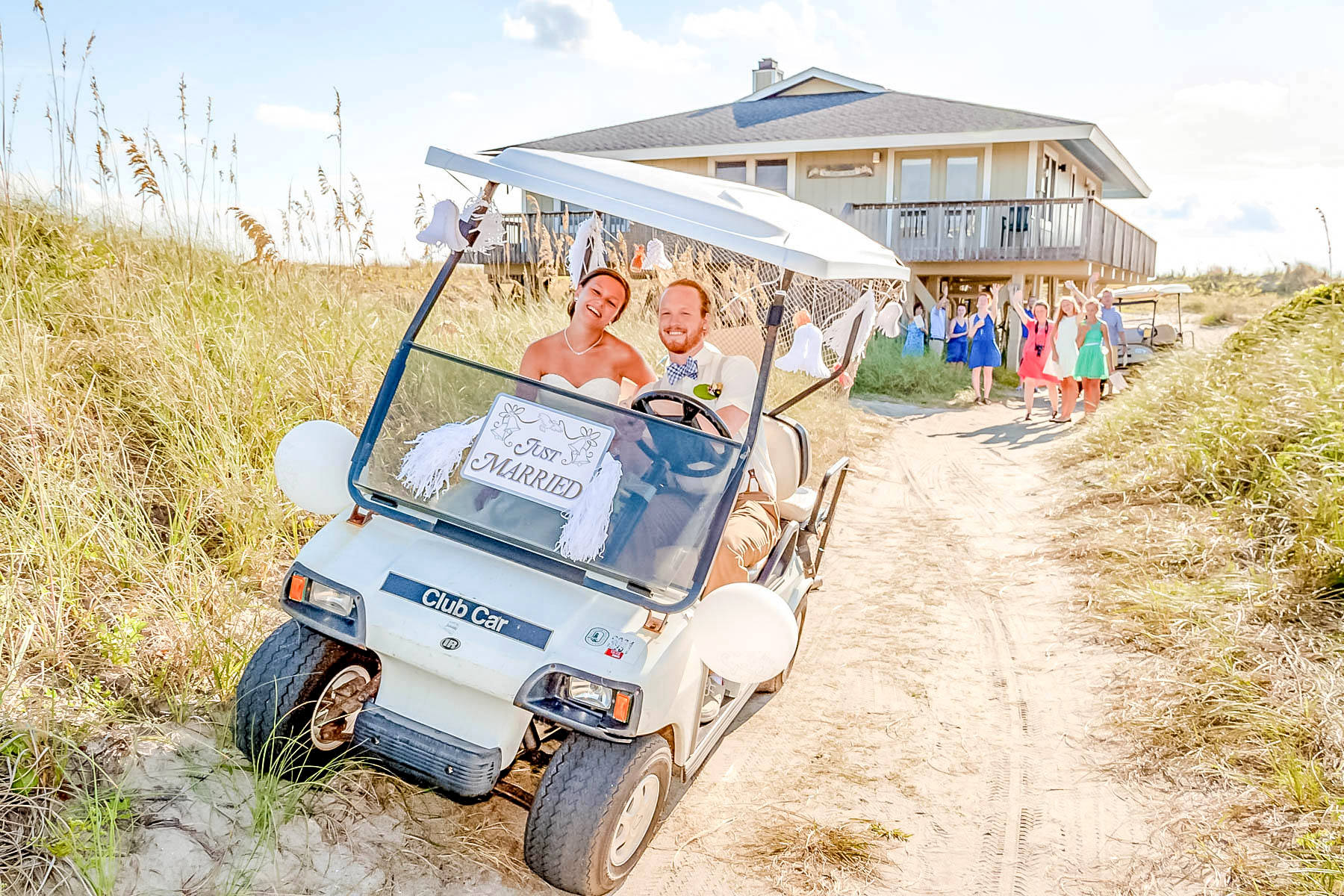
Wedding Terminology: Engagement
Fiancé
This is the title given to the groom after the engagement until the marriage meaning engaged to be married.
Fiancée
This is the title of the bride after she’s engaged until her wedding day meaning engaged to be married.
Wedding Website
Many wedding couples use a wedding website to display all important info about their wedding online. Some couples even use their website to invite guests, give details about traveling to and parking at the venue, and create excitement about the coming event.
Wedding Hashtag
Personalized wedding hashtags are used so that guests can follow updates from the wedding as well as post their photos and well-wishes from the event on social media in a way that the couple can easily find it. Some services will help you generate wedding hashtags.
Gift Registry
Sometimes couples choose to create a gift registry in order to ensure that all gifts received from guests are something that they actually need and will use.
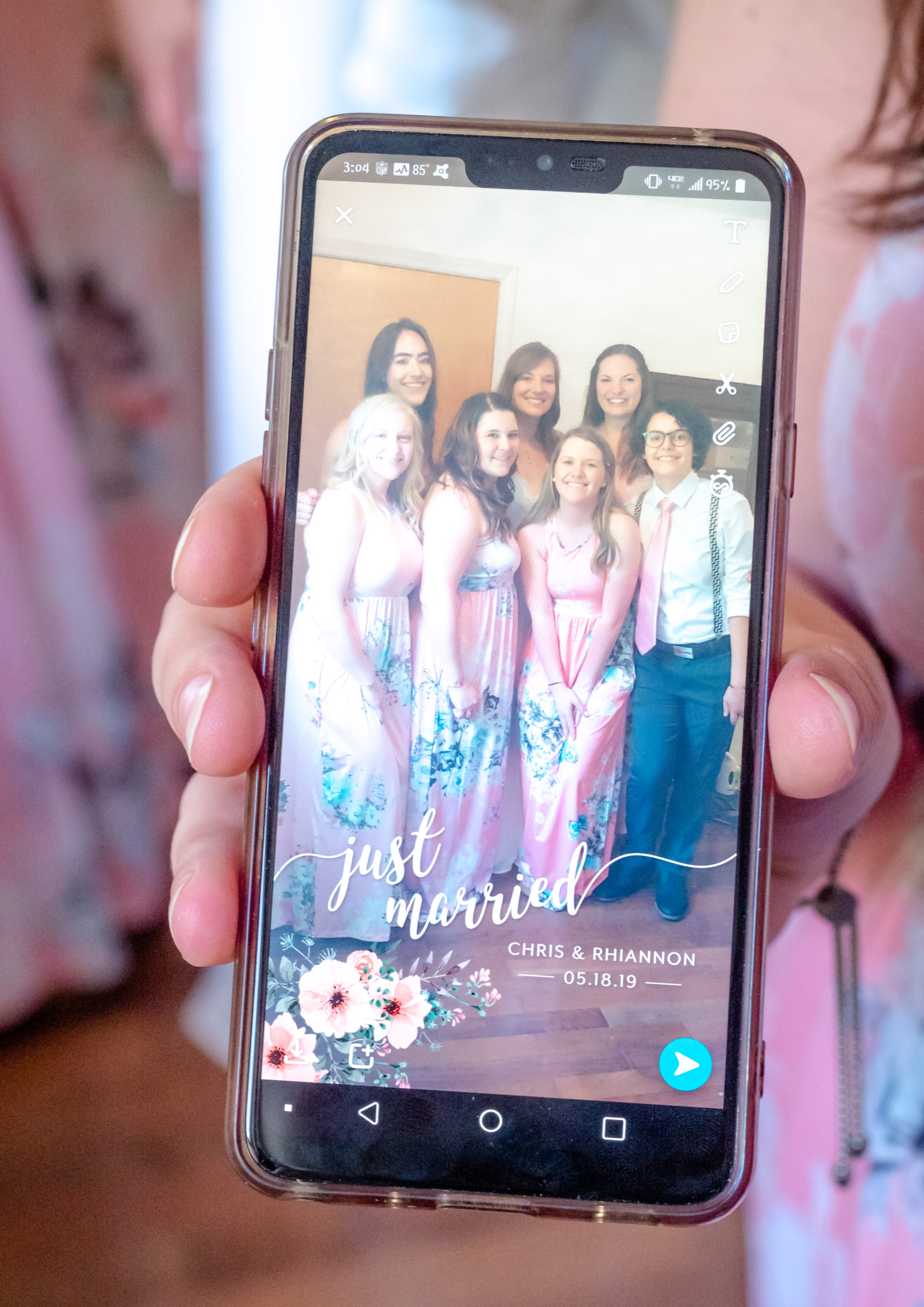
Wedding Terminology: Attire & Dress Code
Tuxedo
This is a formal men’s black evening jacket with black silk lining on the collar. A Tux is commonly worn with a bowtie and cummerbund.
Waistcoat
This is the vest worn by men over a shirt and under a jacket.
Cummerbund
This is the broad waistband worn in place of a vest.
Cufflinks
This is a device used for fastening two sides of a shirt cuff together. These also make great wedding gifts to your fiancé. TIP: Consider purchasing custom cufflinks for a personal touch. And be sure to let your photographer know so they can include them in the photos.
Veil
A veil is hair accessory that makes a bride look and feel like a bride. Veils can vary in length, material, and price so do your research. Typical fabrics are chiffon, tulle, and netting. The shoulder-length is 20-22 inches, the elbow-length is 32 inches, the fingertip-length is 38-40 inches, the knee-length is 48 inches, the mid-calf or waltz-length is 60 inches, and the floor-length is 72 inches. The chapel-length is 90 inches, and the cathedral-length is 108-120 inches. TIP: If you want the iconic flying veil photo, be sure to pick a lightweight, long veil. We suggest the chapel-length or cathedral-length for best results.
Blusher Veil
A blusher is short, single layer veil worn over the face. It’s flipped back once the bride reaches the altar or right before the big first kiss! It’s about 30 inches in length.
Classic Veil
This veil is a “U” shaped veil that has been gathered onto a comb. This is the most common veil style and will compliment almost any dress style. TIP: the classic veil can include a blusher for a more traditional look.
Drop Veil or Circle Veil
This veil is either a circle or oval cut with a comb attached to make a blusher layer. This veil is one continuous piece of fabric, not two separate layers. They can vary in length, but the most common lengths are to the fingertips and cathedral length. And the blusher would be 30 inches.
Lance Mantilla Veil
This is a Spanish style, oval shaped veil with a lace border. The most common length is to the fingertips or cathedral length.
Oval Shaped Veil
This veil is the same as the mantilla veil but without the lace border. It creates a beautiful cascading edge and is usually made of tulle or chiffon.
Bridal Cap Veil
This style veil originated from the 20’s art deco era. This veil is typically made using two layers of fabric that are gathered at the sides to create a cap over the head. A floral or jewel decoration is usually added to cover the gathered area. TIP: This is a create veil option for a bride that wants a vintage look.
Birdcage Veil
This veil is made from birdcage netting instead of tulle or chiffon and is very similar to a blusher. A birdcage veil is typically 9-10 inches in length.
Black Tie
If the wedding is formal and a black-tie dress code is expected, this will be indicated on the wedding invitation. Formal weddings generally happen after 6pm and men should wear a tuxedo. Women should wear either a long formal evening gown or a short, formal cocktail dress.
Black Tie Optional
This phrase tells us that the dress code for the wedding is a very dressy. When choosing your attire, choose something slightly more casual than black tie or black tie. Women should opt for wearing a formal gown whether long or short and men should wear a suit. Of course, dressing in a tuxedo and evening gown will still be appropriate.
Cocktail Attire
Cocktail attire is semi-formal wear. For men, a nice classic suit, shirt, and tie along with dress shoes would be acceptable. For women, something sophisticated like a dress cut just above the knee with some nice heels.
Semi Formal
This is a dress code that refers to “dress better than you usually would.”
Wedding Terminology: Parties & Events
Bachelor Party
This is a party thrown by the groomsmen to celebrate your grooms last night as a single man. It usually consists of alcohol, games, and some sort of hired entertainment. TIP: if this isn’t your style, consider go-carting, brewery tours, sporting activities, paintball, or laser tag instead.
Bachelorette Party
This is the bride’s last party as a single girl. Generally only women are invited and sometimes it can include alcohol, games and some sort of hired entertainment. TIP: for a classier option, include wine tours or destination weekends away.
Rehearsal Dinner
This dinner is pre-wedding, usually the night before the big day, and follows the actual rehearsal. That’s how it got its name. The dinner typically includes, you and your finance, your wedding party and your families, although there is not a hard a fast rule on this. TIP: Consider inviting your out-of-town guests to your rehearsal dinner as well as your close friends.


Wedding Terminology: Printed Details
Save the Date
One of the best ways to tell your guests to put your big day on their calendar before you have enough details in place to send out invitations is with a save the date. They are especially helpful is your big day is a destination wedding or on a really popular date, like a holiday weekend. The sooner you let your guests know, the better. And your guests will know to expect an invitation before they make any other plans. TIP: If you have a wedding website, be sure to include the URL on the save the date so your guests can start following along. As details become available, you can provide information on lodging and travel tips so your guests can begin planning to attend.
Invitation Suite
An invitation suite will generally include the save the date, invitation, RSVP card, and may also include additional information on a card that needs to be featured like your wedding website URL or travel information. It’s the who, what, when, and where of your wedding that guests need to know. TIP: Consider including a weekend itinerary or map of the area in your suite. It will be helpful for your guests and a fun, colorful addition. Don’t forget to coordinate your menus, programs, escort cards, and place cards with your invitation suite.
Wedding Stationery
This is personalized stationery that is used for thank you cards and more. Wedding stationery is separate from the wedding invitation, but part of invitation suites.
Letterpress
Letter press refers to a style or type of printing that uses a plate with raised text that is inked and then pressed into the paper. It’s one of the most popular printing styles used on wedding invitations today. Letterpress doesn’t usually leave a noticeable relieve texture, so ask your stationer about embossing or debossing if you want a 3D effect. TIP: If you use a really thick paper, letterpress can produce a subtle texture when the ink is applies and the plate is pressed into the paper.
Vellum
Vellum is a type of paper that is somewhat opaque and often used in wedding invitation suites.
Wedding Program
This refers to the piece of paper that lists the order of events in your celebration including who is participating in each phase of the event. A wedding program allows guests to know who is doing any readings or the names of your wedding attendants and more.
Calligraphy
A decorative type of handwriting used for wedding invitations, save the dates, and thank you cards. It’s visually very artistic and uses a broad -tipped pen or brush to create the letters.
Embossing
Embossing is the process of creating raised design on your invitation cards. You can customize the embossing to compliment your wedding style so you can wow your guests when opening the envelope.
Debossing
Debossing is the process of creating recessed relief on your invitation cards. You can customize the debossing to compliment your wedding style so you can wow your guests when opening the envelope.
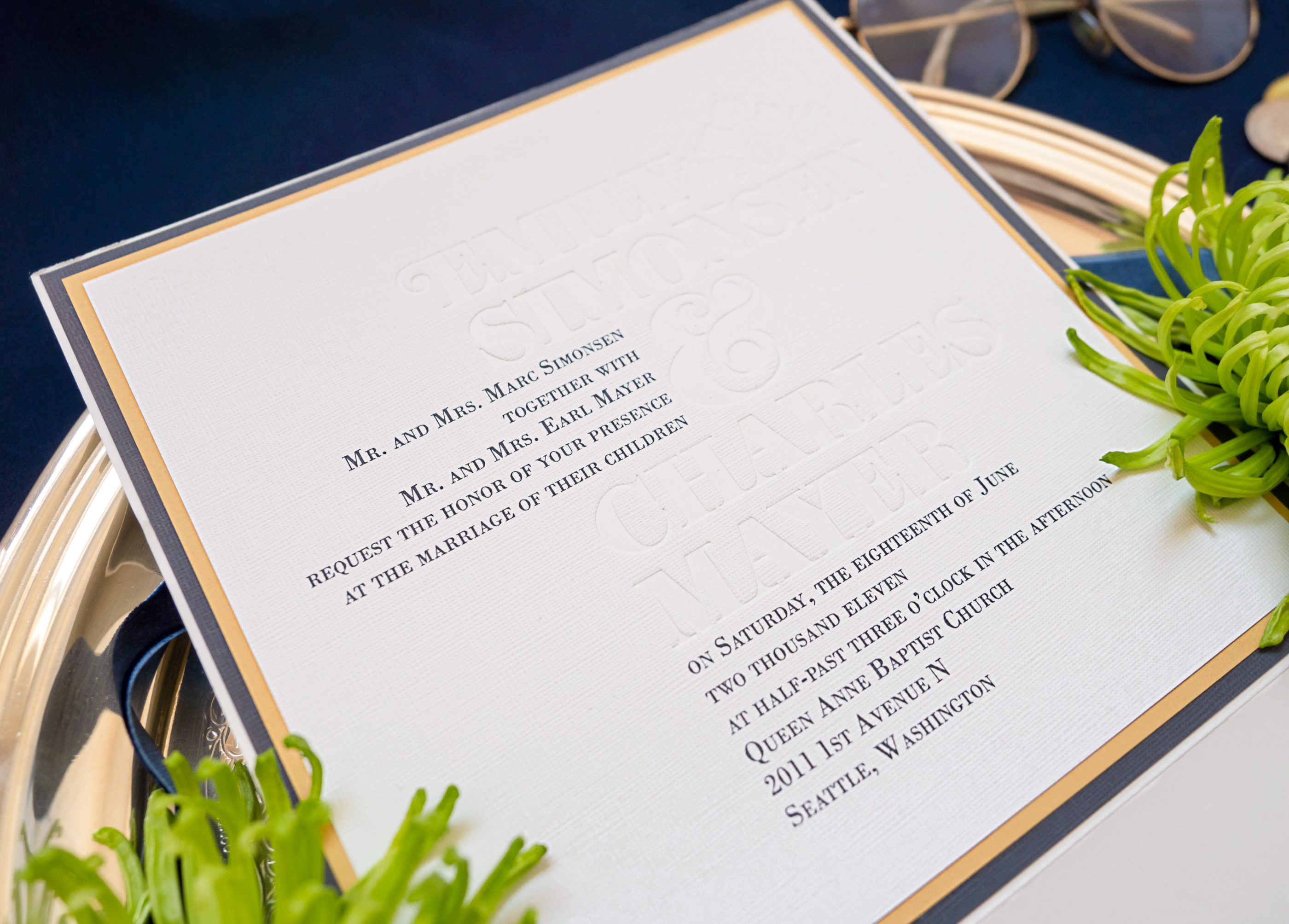
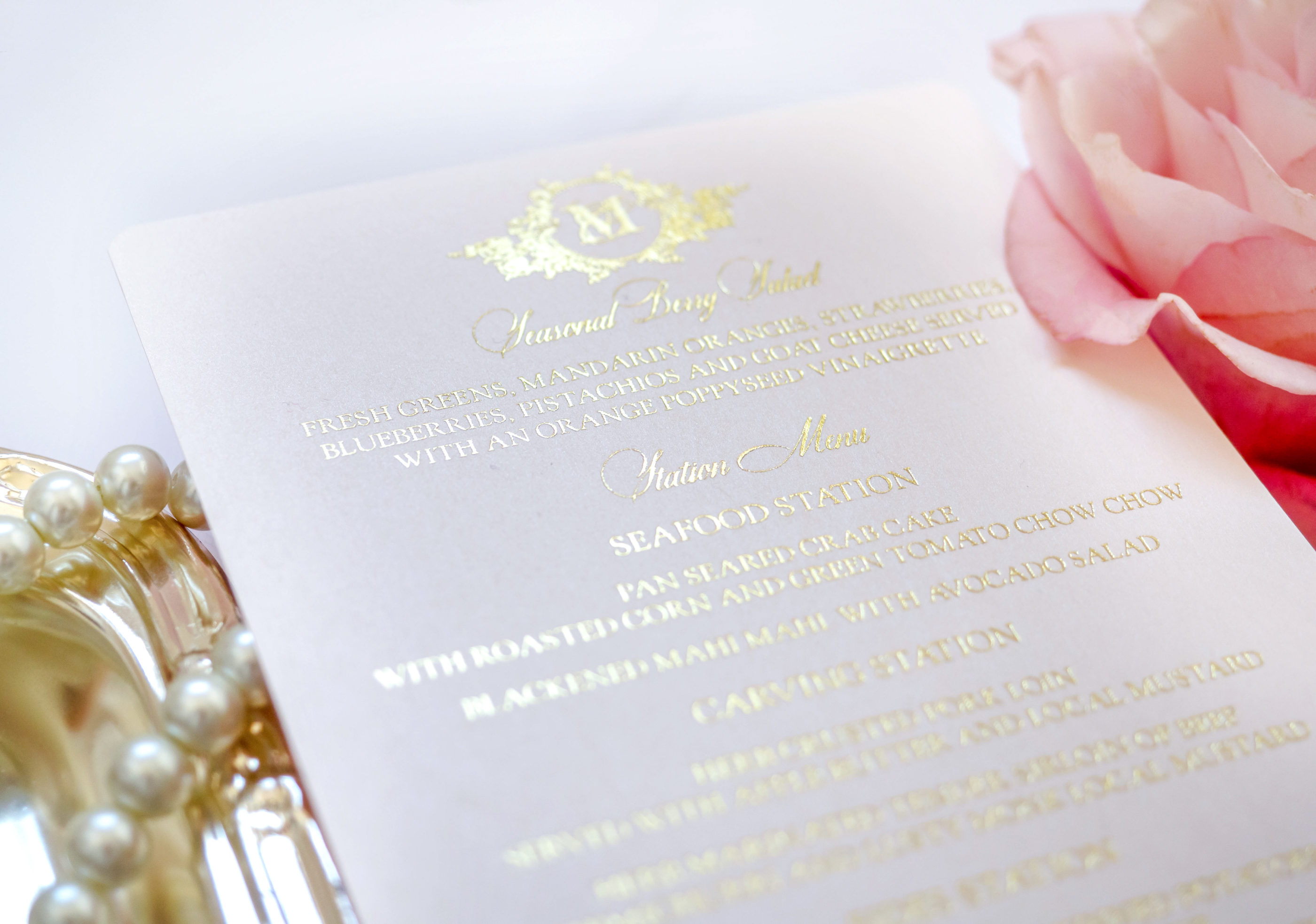
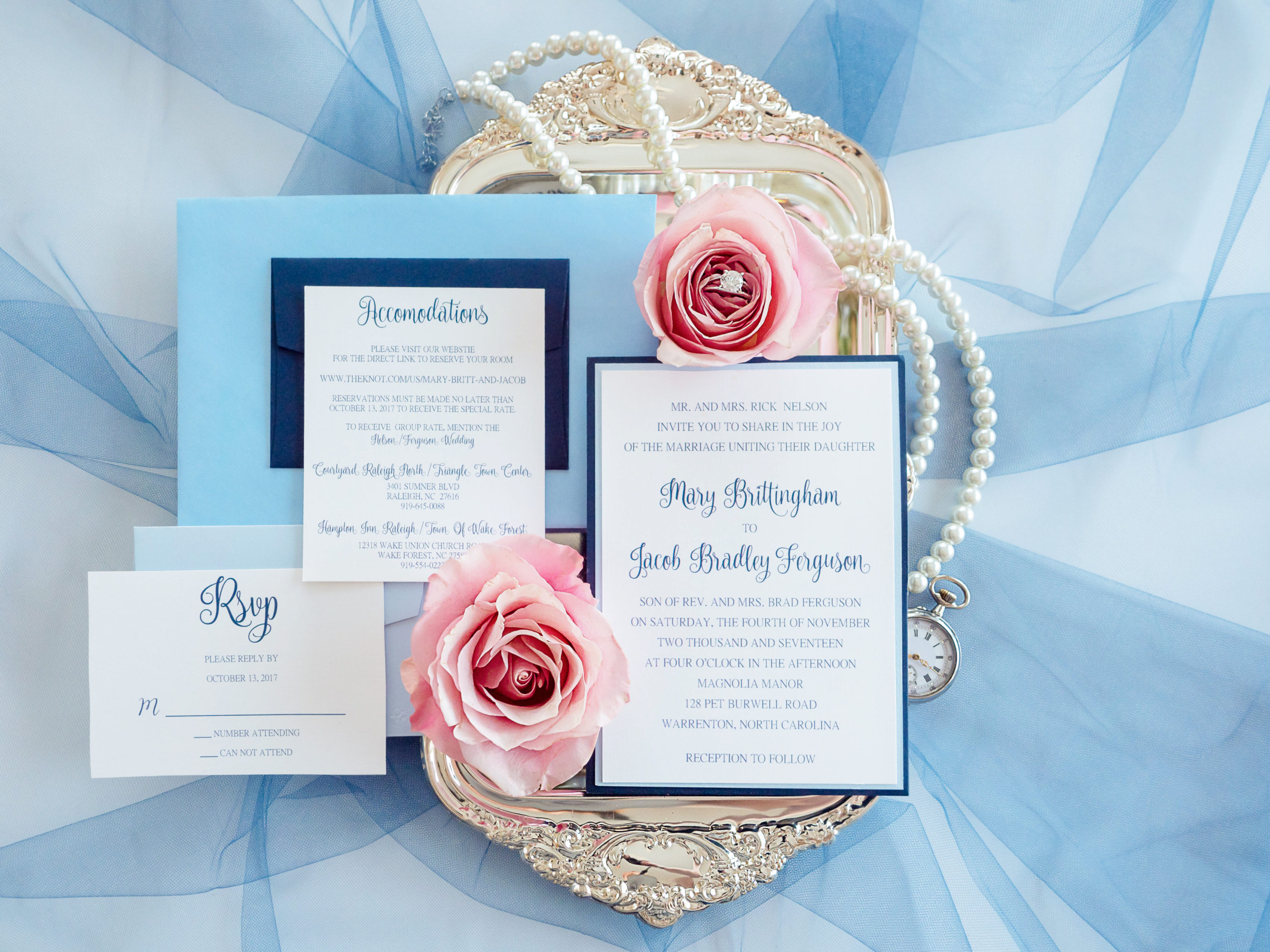
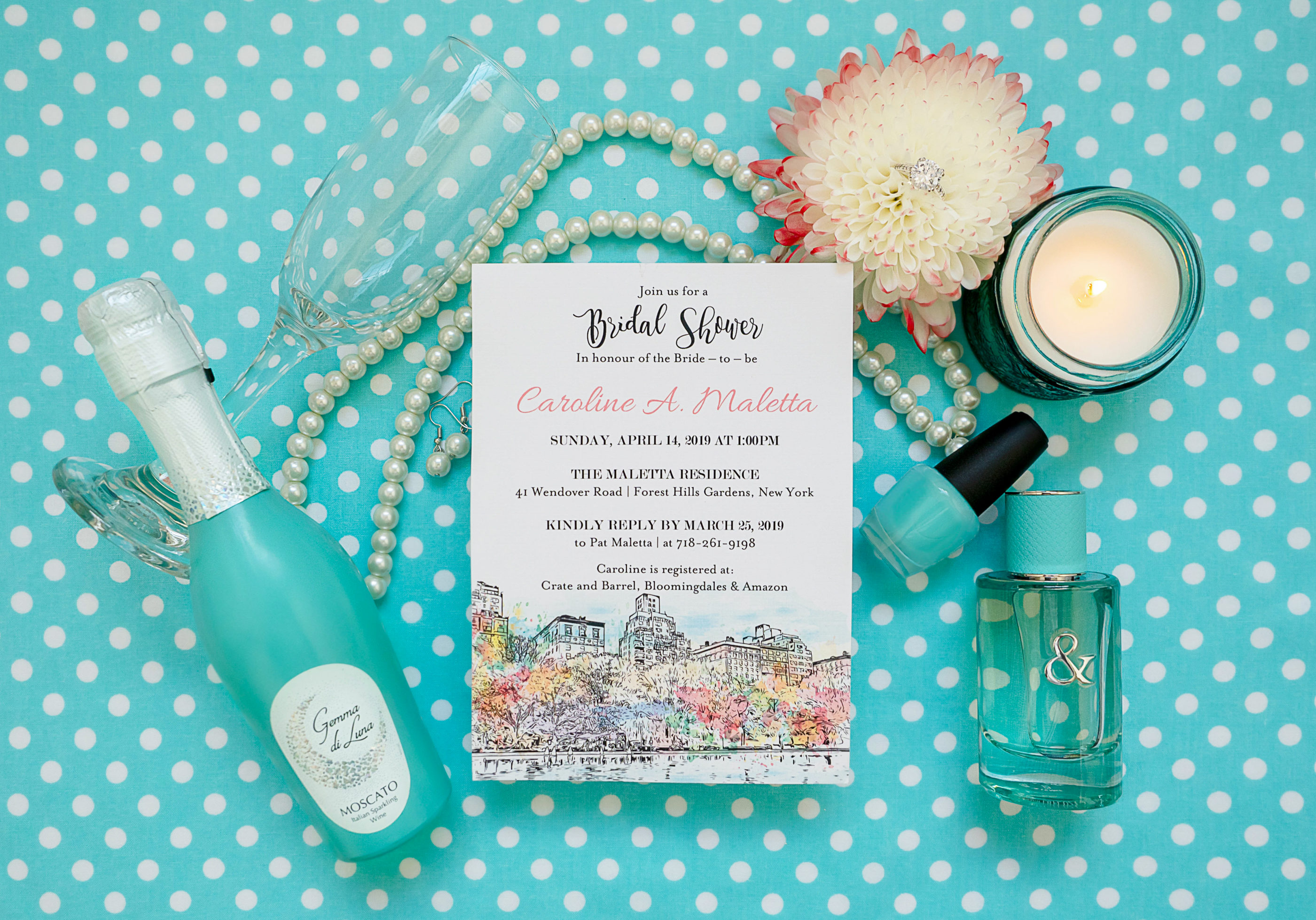
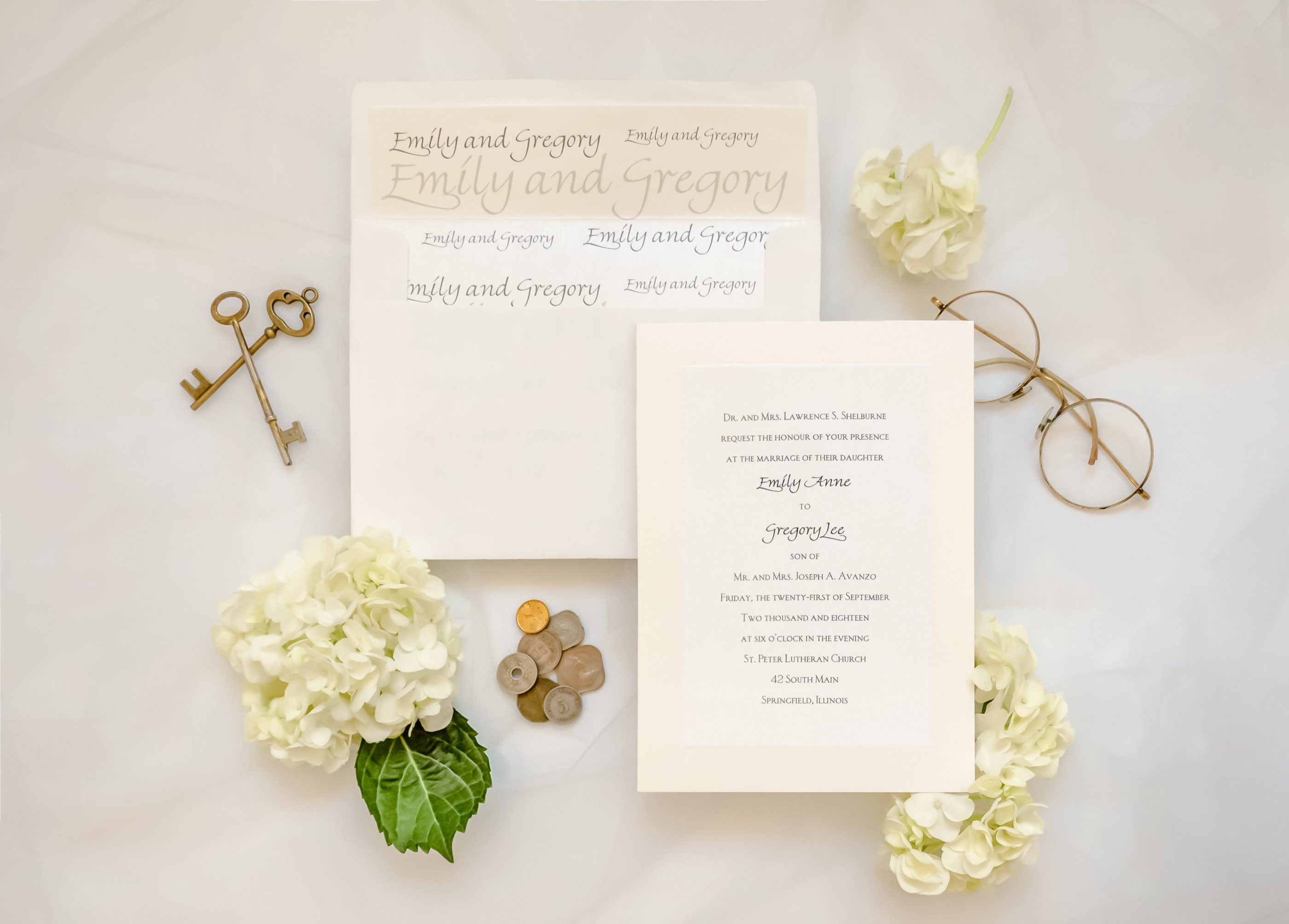
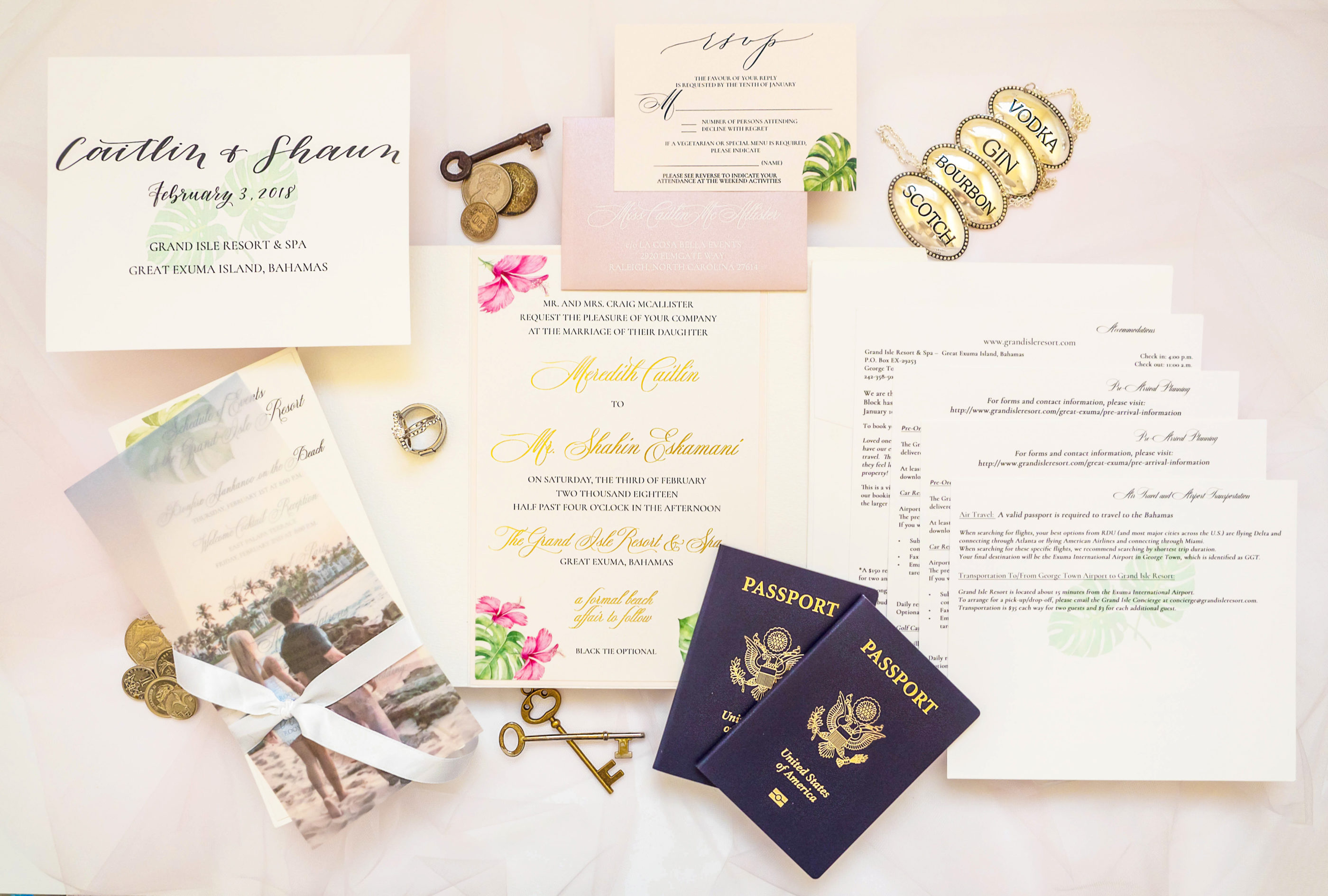
Wedding Terminology: Photography & Videography
Getting Ready / Trial
You spend hours pulling together the perfect hair, makeup, nails, etc. for your big day. But how do you know what it’s going to look like all together and if you’re going to be happy with it? The most common trials are hair and makeup for the bride. Your hair and makeup artist(s) will test your ideas for hair and makeup to see if you like them and get an idea of what you will look like on your big day. Other vendors like florists and rental company offer trials and mock-up to help you visualize your design and make any adjustments before the big day.
Shot List
This is a checklist of desired photos or videos that you would like the photographer or videographer to capture at your wedding celebration. This is very handy when it comes to family photos. You will want to think through what types of images are most important to you. Knowing who you want to be photographed in which photos allows the day to be as efficient as possible! And with a list like this, your wedding photography team can get back to capturing the wedding day celebration as quickly as possible!
Golden Hour
This is a wedding photographer’s favorite time of day to shoot! It’s the time just before the sun sets when the light is even, soft, and glows a golden color. It’s the perfect time for wedding portraits. TIP: When planning your wedding day timeline, consider the time of day that the sun will set. Set your ceremony to start 1 ½ hours (2 hours for longer ceremonies) before sunset so your photographer can take advantage of the golden hour light and sunset sky for your wedding portraits.
Photobooth
This is a set up where a photographer uses technology to capture fun photos for guests at a wedding. The photos are usually more casual and quirkier than usual wedding photography.
Photographer
The wedding photography is the visual storyteller hired to capture all fo the elements of the wedding day. This includes everything from getting ready to making a grand exit as you leave the reception.
Engagement Photos
This is like a dress rehearsal for you, your fiancé, and your wedding photographer(s). Almost all wedding photographers offer engagement photo options. It’s an opportunity for you two to get comfortable in front of the camera(s), get to know your photographer(s), and come away with gorgeous photos that you can use for wall art, save the dates, or wedding invitations and on your wedding website.
Same Day Edit & Slideshow
Your wedding photographer can quickly edit several images taken during your wedding day and create a slideshow of those images. Typically, these images include the getting ready, bride and groom details, ceremony, and formal portraits of the bride and groom. TIP: Guests love looking at your wedding photos the same day, plus it will give them plenty to talk about at the tables.
Boudoir
Some brides choose to have a sexy set of photographs taken before the wedding to give your soon-to-be-spouse as a gift. Unlike the rest of your wedding album, these are meant to be shared between each other.
Bridal Portraits
Photos of the bride in her wedding dress are bridal portraits. They are taken either at the photographer’s studio or outdoors a few months before the wedding. Bridal portraits are less common now, but some brides still want formal images of them in their dress.
Engagement Session
This is a very popular add-on to wedding photography packages. Not only is it a great way to get a sense of your photographer’s style (and make any suggestions or voice concerns before your wedding day so they can make adjustments), but it’s also an easy way to capture a perfect image for your save-the-date or wedding website as well. Work with your photographer to make the shoot reflection the two of you by choosing a theme, or picking unexpected locations, or have a little fun with some fun props, like balloons, umbrellas or a tandem bicycle. To learn more about engagement sessions, check out this blog post here.
First-look photos
These are special photos taken before your ceremony during the first look. They capture the first time you and your fiancé see each other all dressed up on your wedding day. TIP: Consider doing the formal photos of you two with your families and wedding party just after the first look. It will allow you to fully enjoy your cocktail hour post ceremony which makes it an increasingly popular option!
Coverage Time
The amount of time that the photographer(s) will be capturing images is the coverage time. Typical coverage time length is 8 hours which includes your ‘getting ready’ photos through the reception and grand exit.
Second Shooter
A second shooter is the additional photographer assisting your main photographer. Having a second photographer means one photographer can be dedicated to the bride and one can be dedicated to the groom, more coverage, more angles, more candid moments captured, and an enhanced experience. The second shooter will look to capture candid moments and different angles than what your lead photographer is capturing. TIP: Look for a photographer that has a designated second shooter. This means that they will anticipate each other’s moves and be able to offer better coverage and capture more images that will benefit you in the long run.
Wedding Day Questionnaire
The wedding day questionnaire is essential for your wedding photographer. It includes details for your wedding day like the getting ready location, first look location, portrait groups and what time they will happen, locations for the ceremony, reception, and portraits, details about special items, events, and wedding colors, a list of all vendors, and details for your exit. This information helps your photographer(s) plan for the best shots. TIP: Having the vendor info is key. Some photographers share the photos from your wedding with your vendors so they can use it for their portfolio. Without the vendor info, your photographer will not know where to send their photos.
Online Gallery & Digital Download
All of your finished photos are delivered through an online gallery. This is accessed through a link, so it can be share with family & friends. You will also be able to download high-resolution images, order prints, wall art, and design and print an album!
High-resolution images/Digital files
Most photographers shoot in RAW format. This allows your photographer the most freedom to edit and retouch your photos. High-resolution images / digital files are not the RAW files. These are .PNG or .JPEG files that have been edited. You do not want the RAW files; they will not be edited and are extremely large files. You also special software to open a raw file. Once a photographer edits a RAW file, it can no longer be saved in the RAW format. This is why your images will be delivered in .PNG or .JPEG format.
Printing Rights
Be sure and ask your photographer if you can print your photos wherever you wish. Some photographers only allow you to print within their online gallery or directly through them, while others release the high-resolution images / digital files with the rights to print them anywhere. This is something you want to be sure you know beforehand, so you aren’t surprised!
Photo booths
A fun, popular form of entertainment during cocktail hour and the reception is a photo booth. Couples are personalizing their photo booths for a personalized experience. Modern photo booths can upload photos directly to social media whereas retro versions print Polaroid prints automatically for you. TIP: Be sure to look for full-service companies that can bring backdrops and props.
Natural Light
Rather than using flash (on or off the camera), natural light photographers use the natural light found during golden hour to light the photo. The look is warm and natural. The photographer must be skilled enough to deal with shadows and ever-changing lighting as the sun sets.
Artistic
With this style, the photographer’s interpretation of a scene or composition allows for a different perspective. For example, the couple may not be looking at the camera, but rather off to the side. If you don’t want photos that to look like anything you’ve seen on the internet, choose with a photographer who is able to use artistic flare to tell your story.
Classic
Classic images are the ones that your parents are going to want and the style that you will want to include in your wedding album or turn into wall art. These images stand the test of time; they are striking, gorgeous and a bit formal. Classic photos reflect reality (similar to documentary), but they’re created with the photographer’s artistic eye.
Documentary
Rather than posed or highly styled shots, documentary photography captures candid or spontaneous pictures of people, décor and action while it’s happening. These shots feel “real”, like you were there in the moment.
Dramatic
Lighting plays a large role in how dramatic a shot is. By using an off-camera flash, a key component of dramatic photography, a photographer can create one-of-a-kind images that will take the viewer’s breath away. If the lighting outside isn’t cooperating, the photographer can use lighting equipment to create a gorgeous effect.
Candid
This take on wedding photography is mostly natural with almost no direction. Candid photography is best when the subject isn’t aware of the photographer. The end result is a beautiful, relaxed, natural image. A good photographer will look for moments that help set the scene and tell the story.
Styled Shoot
It’s not hard to fall in love with the beautiful photos you see in all of the wedding magazines. Sometimes, those beautiful weddings are staged in the form of a styled shoot. It’s a great way for vendors to unleash their creative juices in a collaborative effort to build the portfolios of everyone involved. But styled shoots are not real weddings.
Real Wedding
If you see the term ‘real wedding’, that means that the couple was a real bride and groom who actually got married. Real weddings tell the story of a real-life couple, from how they met to saying their “I Do’s”. If you are lucky enough to find a wedding photographer who submits their work to various magazines and blogs, your actual wedding could be featured!! TIP: If this is something that interests you, be sure to talk to your wedding planner and photographer so they can make sure to get those ‘key photos’ that editors look for when publishing real weddings.
Videographer
Like your wedding photographer, you’ll be thankful that you added this fantastic addition to your team of vendors. The videographer is looking to capture every aspect of your wedding day from getting ready to your grand exit. However, they are recording video clips from the day, not still images like a photographer. Through skilled editing, you can relieve your wedding day over and over again through a full-length video or wedding trailer.
Cinematic Style
To create a cinematic wedding video, your videographer will cut, edit, and splice their footage to make scenes that flow together like a real movie. The events may not be in sequential order. For example, clips of the vows might be interspersed with clips from the dance floor. By doing this, the videographer is making a more artful depiction of your wedding day’s events.
Documentary Style
This style of wedding videography is very common and is sometimes called video journalism. Documentary style shows all of the day’s events in the order that they occurred and is edited in a straightforward, non-cinematic style.
Full-Length Video
A full-length video is would include all of the day’s important moments in their entirety. The exact length of a full-length wedding video varies from wedding to wedding because each wedding’s length and elements will be different.
Highlight Reel
A highlight reel is usually 5- to 15-minutes long and includes just the highlights from your wedding day. For example, the vows, the cake cutting, the toasts and the dances, etc.
Wedding Trailer
A wedding trailer is a 3- to 5-minute-long video that wraps up the day in one pretty, shareable package. Wedding trailers are usually edited in a cinematic style to include different scenes from the day blended with music. It can include vows, interviews with your family and wedding party, or just music only. Most videographers will provide a link so you can share your trailer online.
B-Roll
These are the clips shot of the scenery, the venue, the décor, guests milling around, etc. It’s basically footage that isn’t a specific wedding moment but acts as filler to further tell the wedding day story. Videographers can use these clips in wedding videos to help set the scene or as a transition.
DSLR Camera
Many videographers use high-definition DSLR cameras (digital single-lens reflex) to achieve a sharp, high-quality video. It’s likely the same type of digital camera your photographer is using for your still wedding photos.
Post Production
Also known as editing, this is everything that your videographer or photographer does between when the cameras stops and when you receive your completed video or photos. It’s the process of culling and re-touching images or splicing together clips and adding music, and words to create the type of finished product you want.
Same-Day Video Edit
A same-day video edit is a short wedding highlight that you can watch at your wedding! An editor will step out mid-reception with a laptop computer to quickly edit clips to create a brief highlight video that includes getting ready, the ceremony, and possibly even your grand entrance to your reception.
Wedding Day Timeline
This is schedule for the day of your wedding broken down into 30- or 60- minute increments. This is extremely important if you want your ceremony to happen as the sun is setting. Your wedding planner, photographer, videographer, etc. will need a detailed copy. Your guests and wedding party will appreciate a less detailed version, so they know what to expect next. TIP: Build in more time than you think you will need. As much as you plan for your wedding day to run smoothly or on time, there are always things that happen to throw off the schedule. So, building in extra time will help to keep you on time.
Bride’s Details
A photographer or videographer will want to document all of the little details that you put so much time and effort into planning. Examples of bride’s details are the items she chose to represent her “something old, something new, something borrowed, something blue “, her flowers, her veil, her jewelry, the rings, her shoes, the wedding invitation suite, etc. All of this may be forgotten overtime without photos or videos of these little details that helped to make your wedding day so special and personal.
Groom‘s Details
A photographer or videographer will want to document all of the little details to go into how your groom looks. This could be his tie, tiepin, jacket, shoes, socks, suspenders, belt, flask, cufflinks, boutonniere, etc. These are often overlooked or seen as not as important, but they are just as important as the bride’s details. Documenting these details will prevent you and your groom from forgetting them as you grow old together.
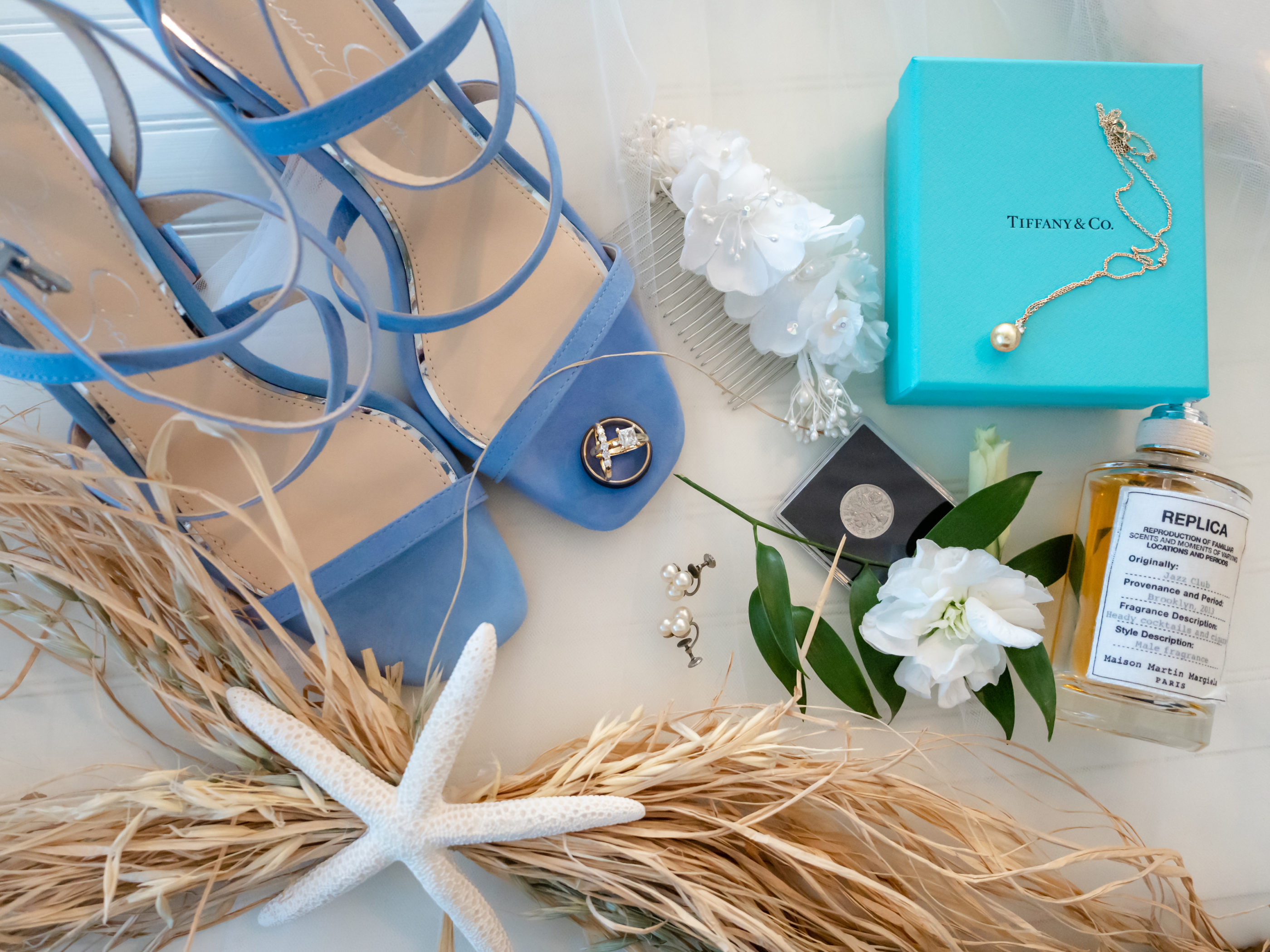
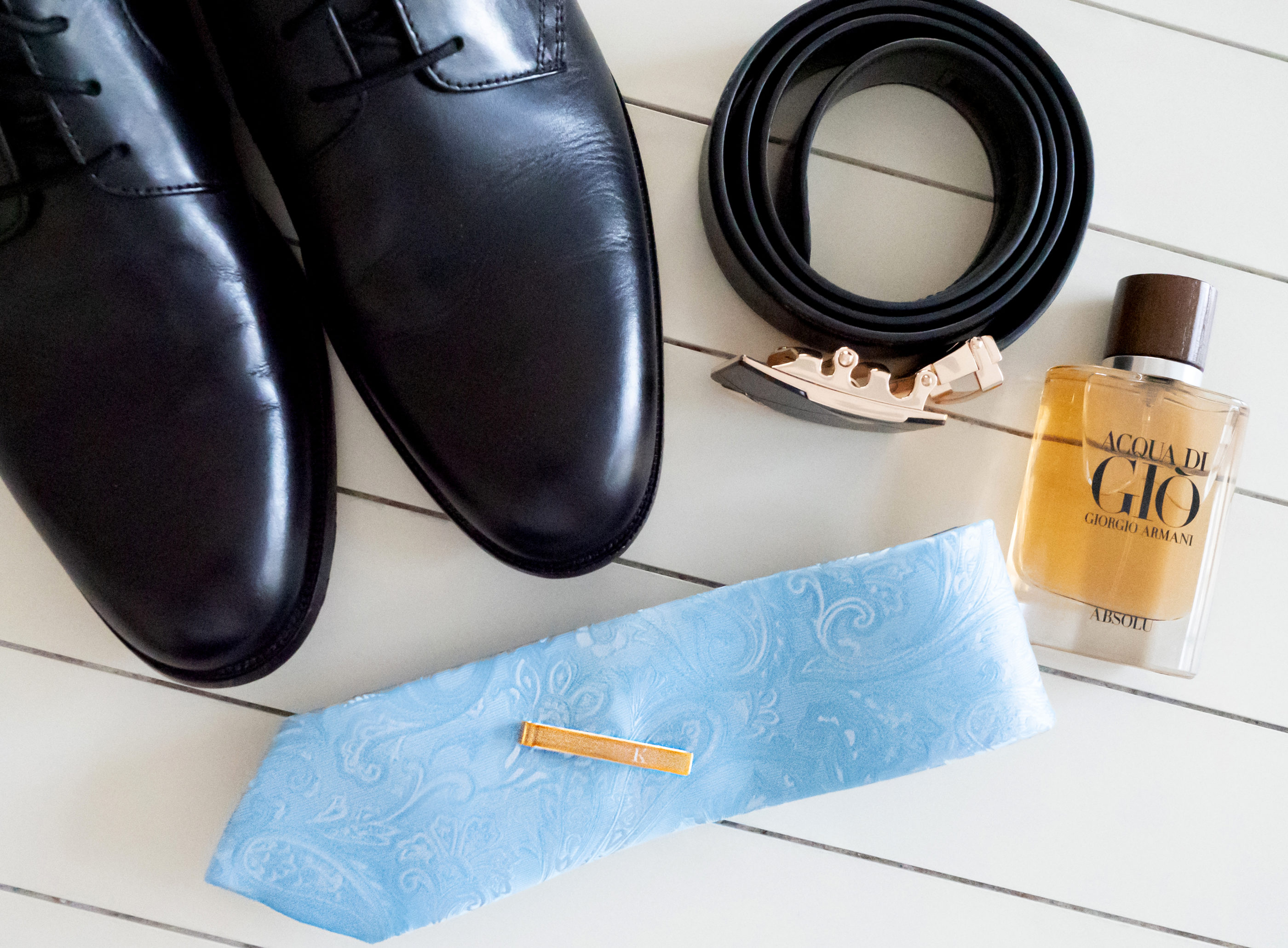

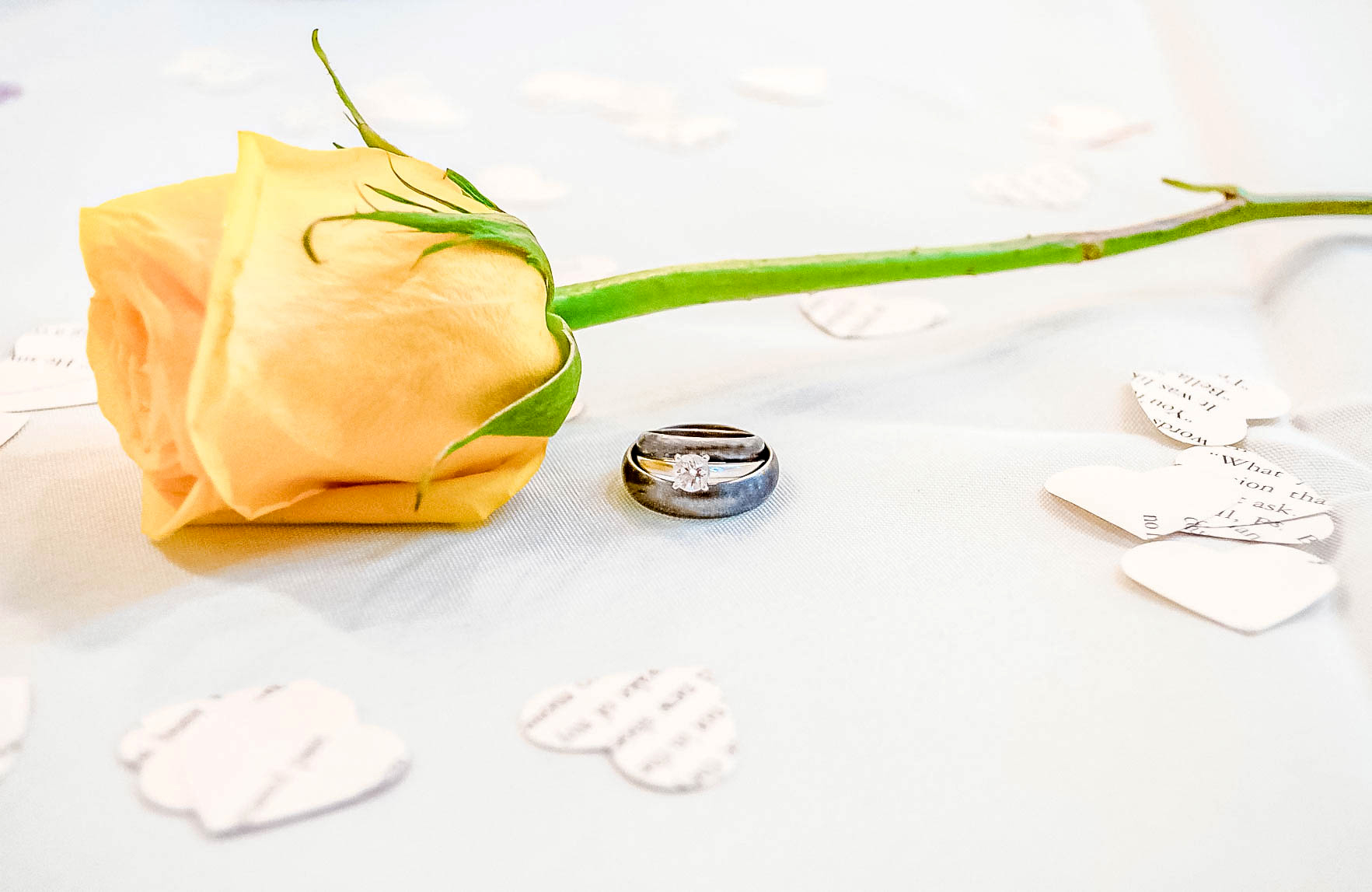
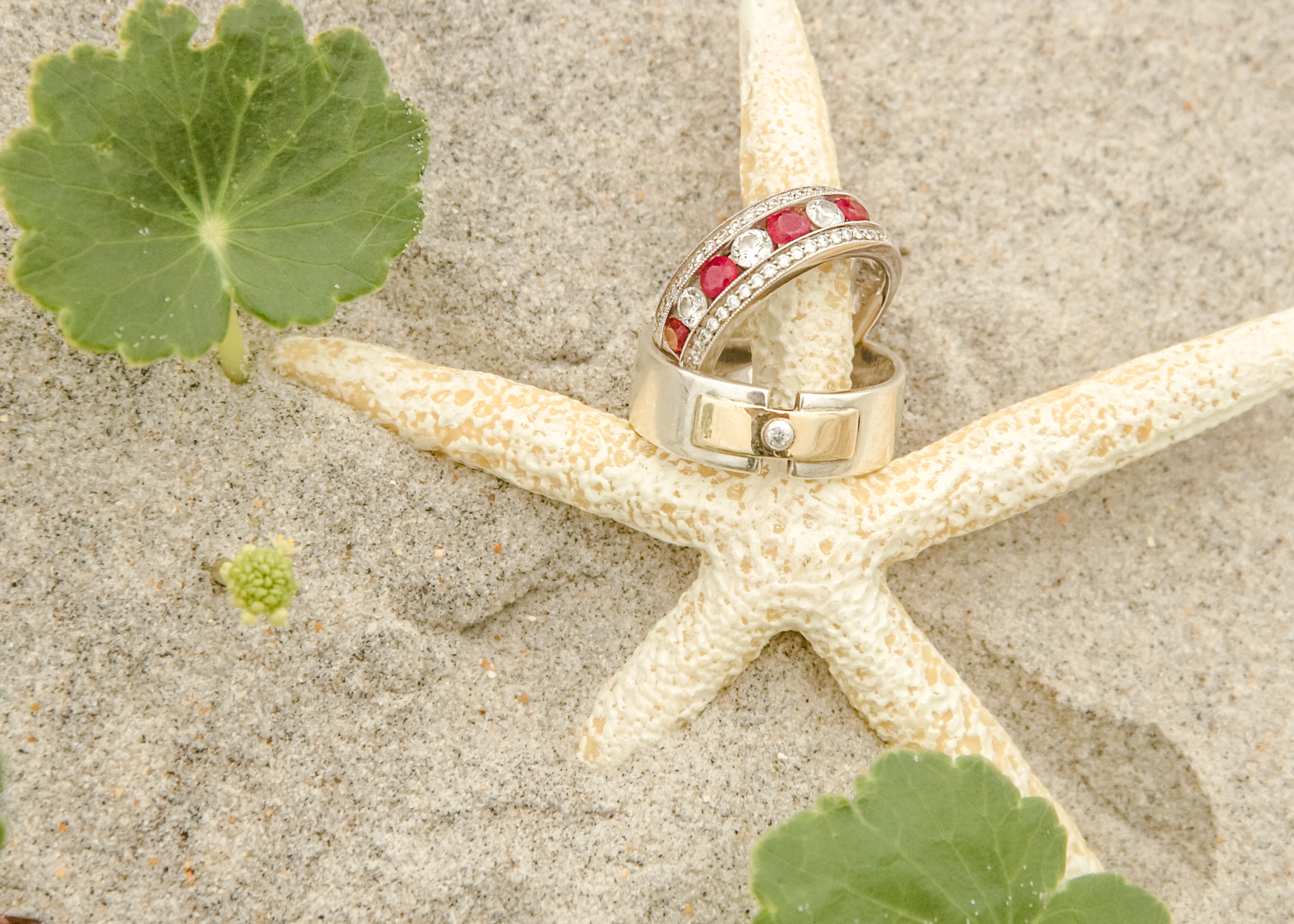
Want more information about all things wedding planning? Check out these links below:
Why Am I A Wedding Photographer?
Ready to capture your wedding day with stunning photos and an unforgettable film?
Want peace of mind knowing your memories will be captured perfectly?
Call or Text: 910-408-2141
Follow Us: @bellalumierephotos
📸 Instagram | 📖 Facebook | 📌 Pinterest | 🎥 YouTube

February 9, 2021

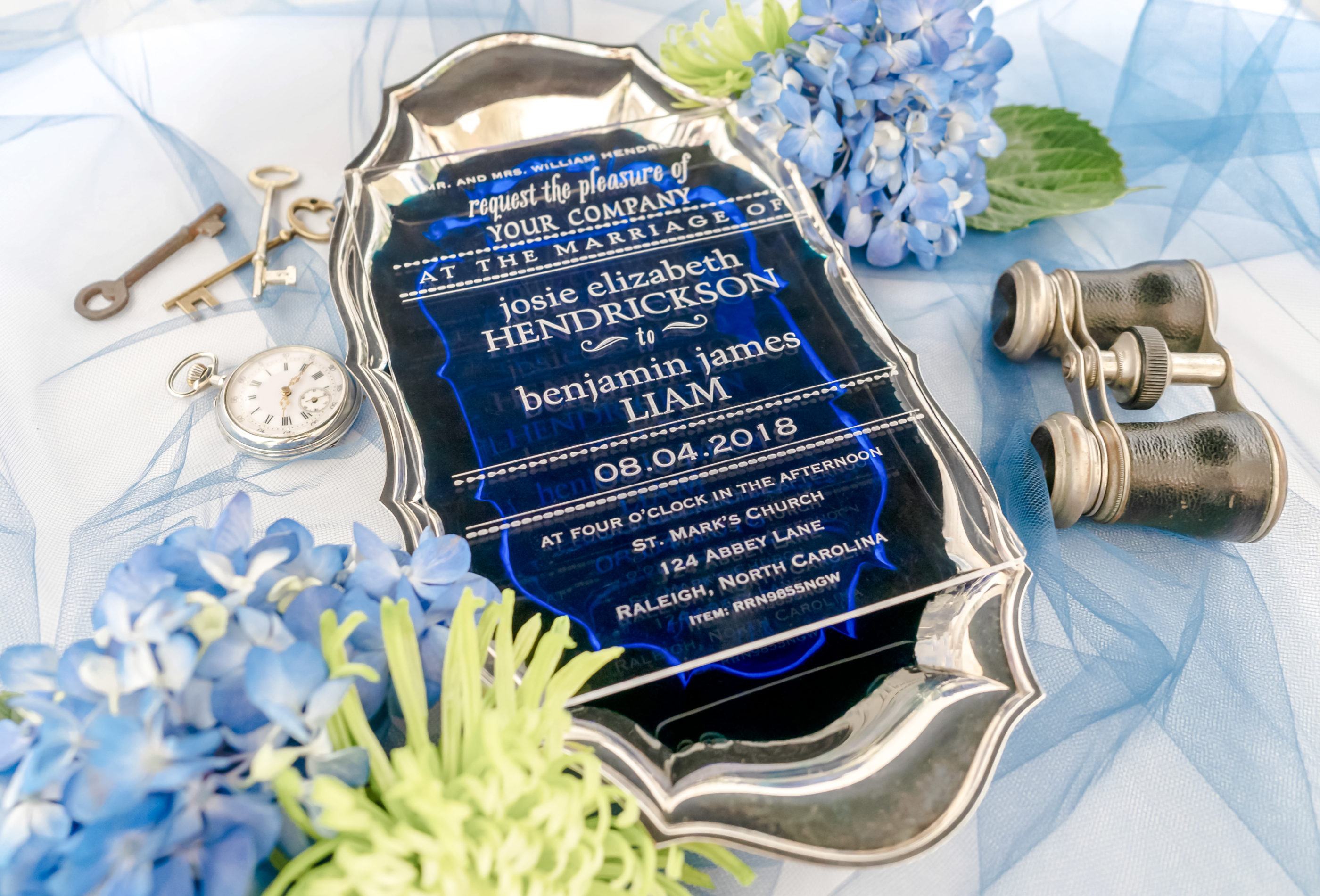

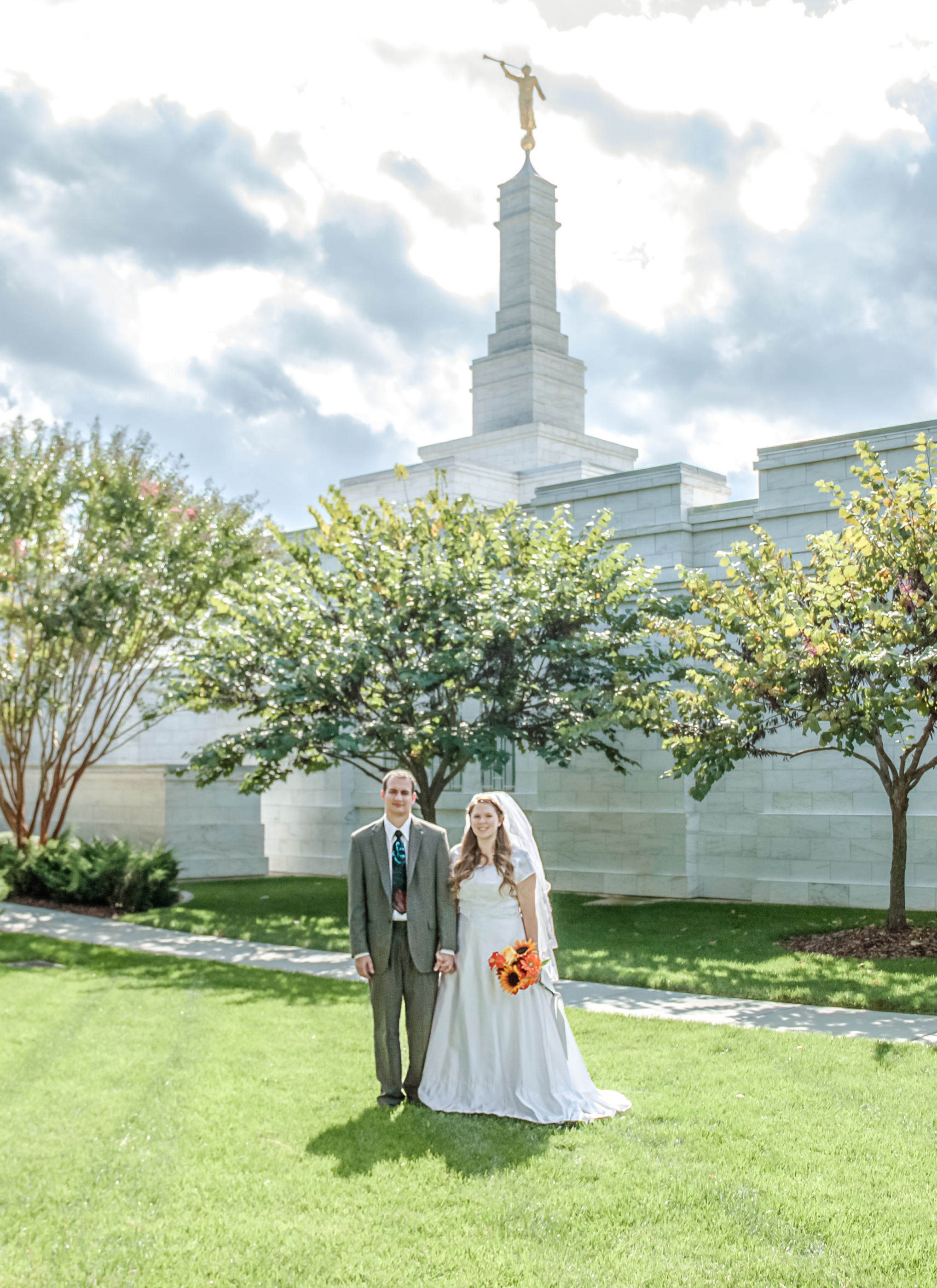
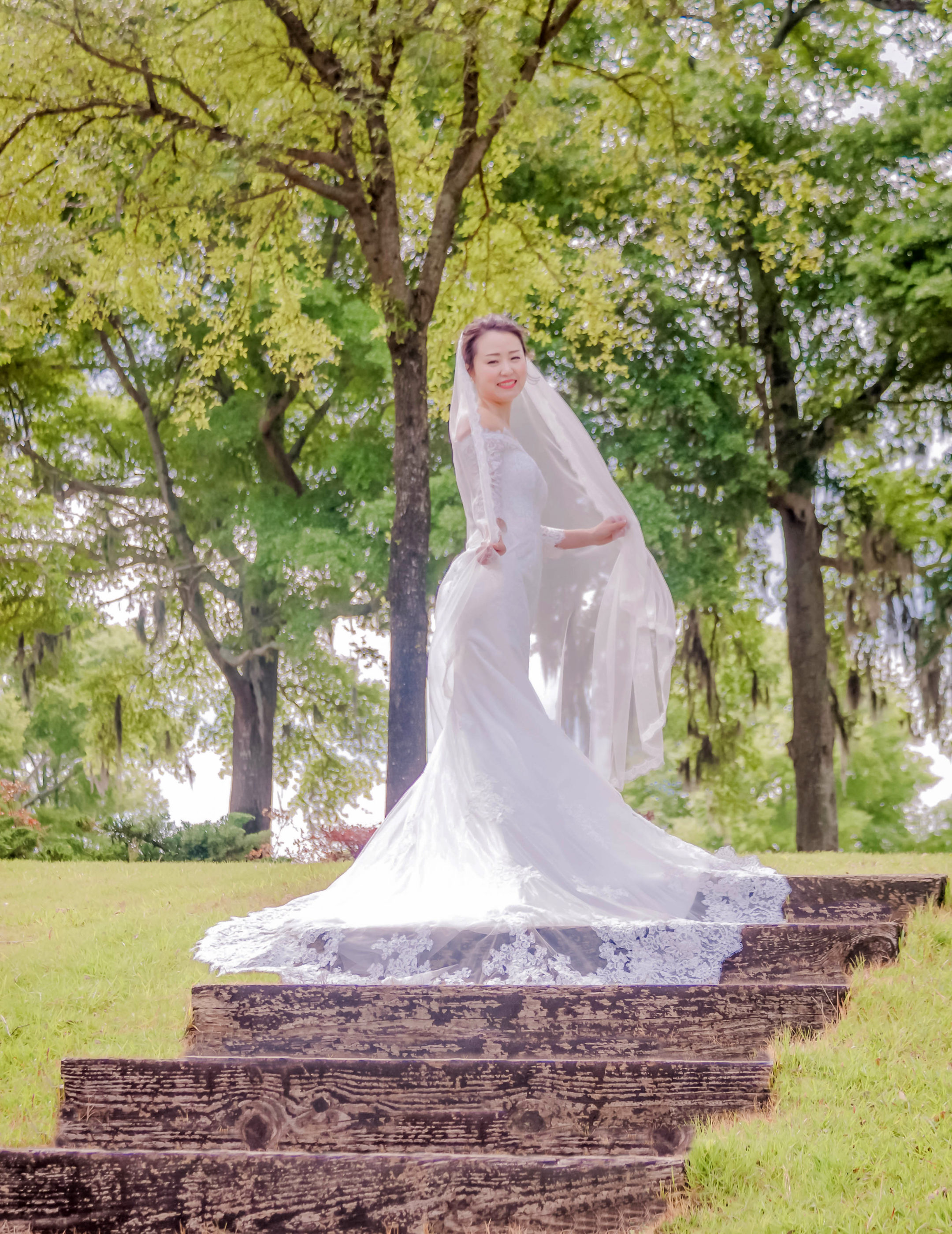


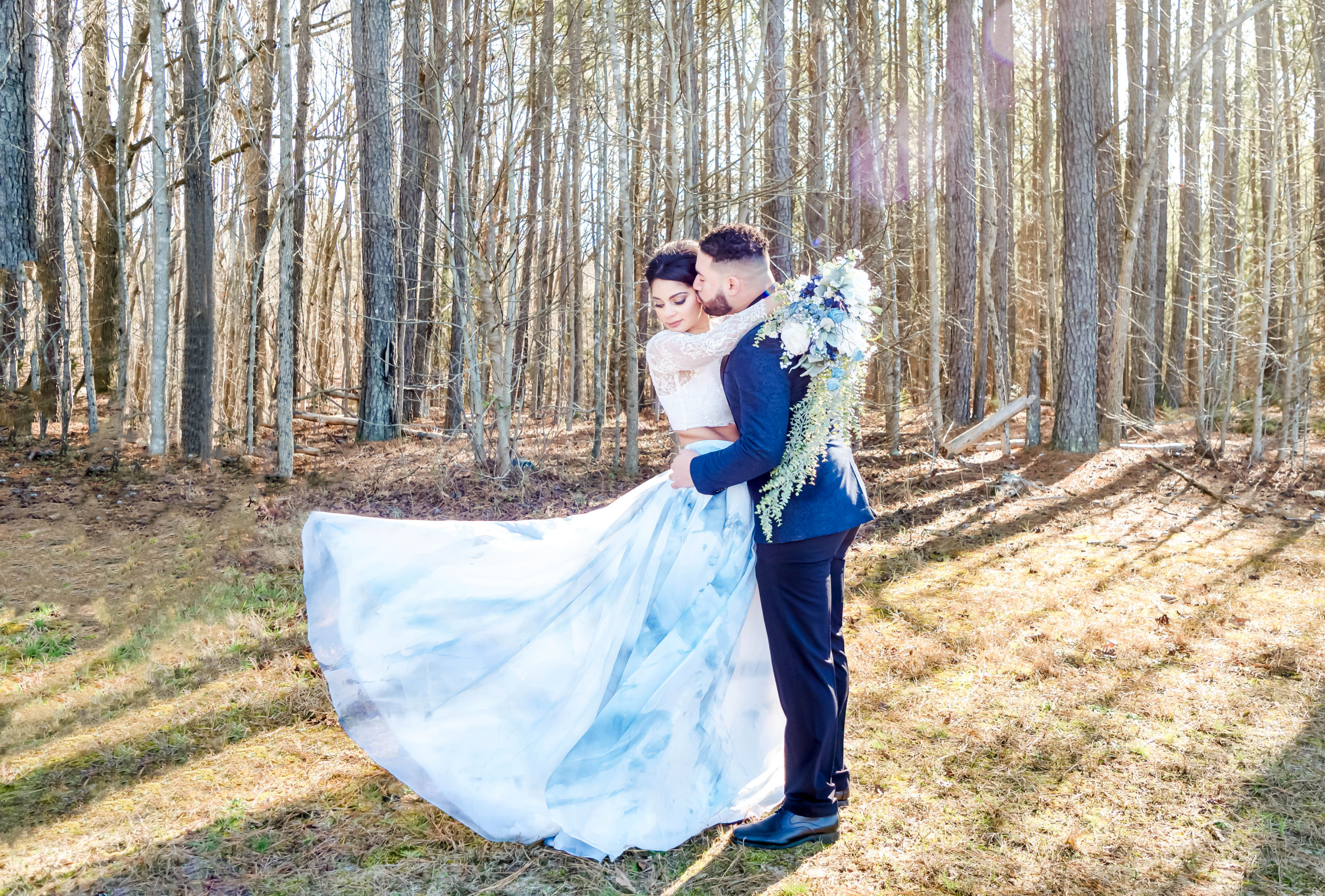
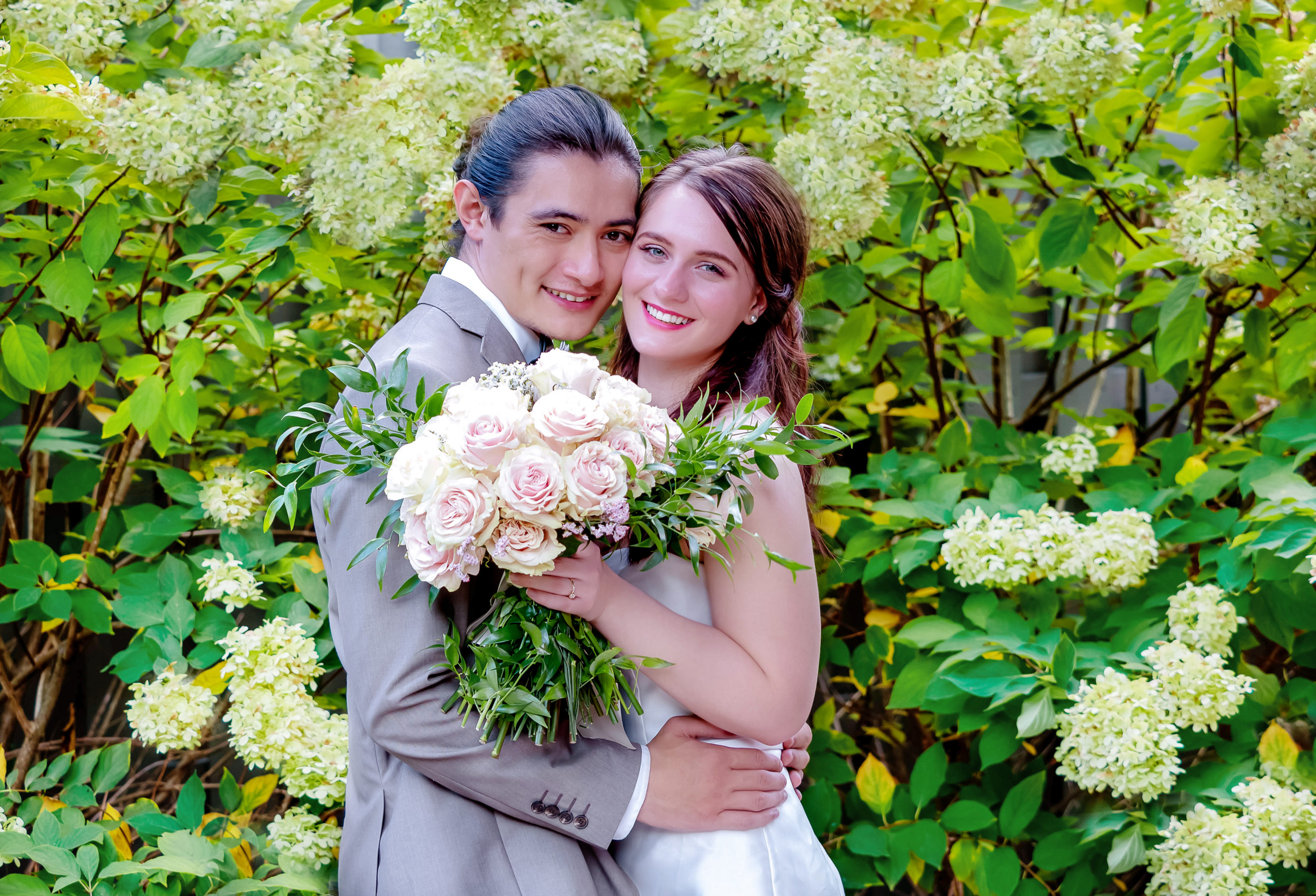
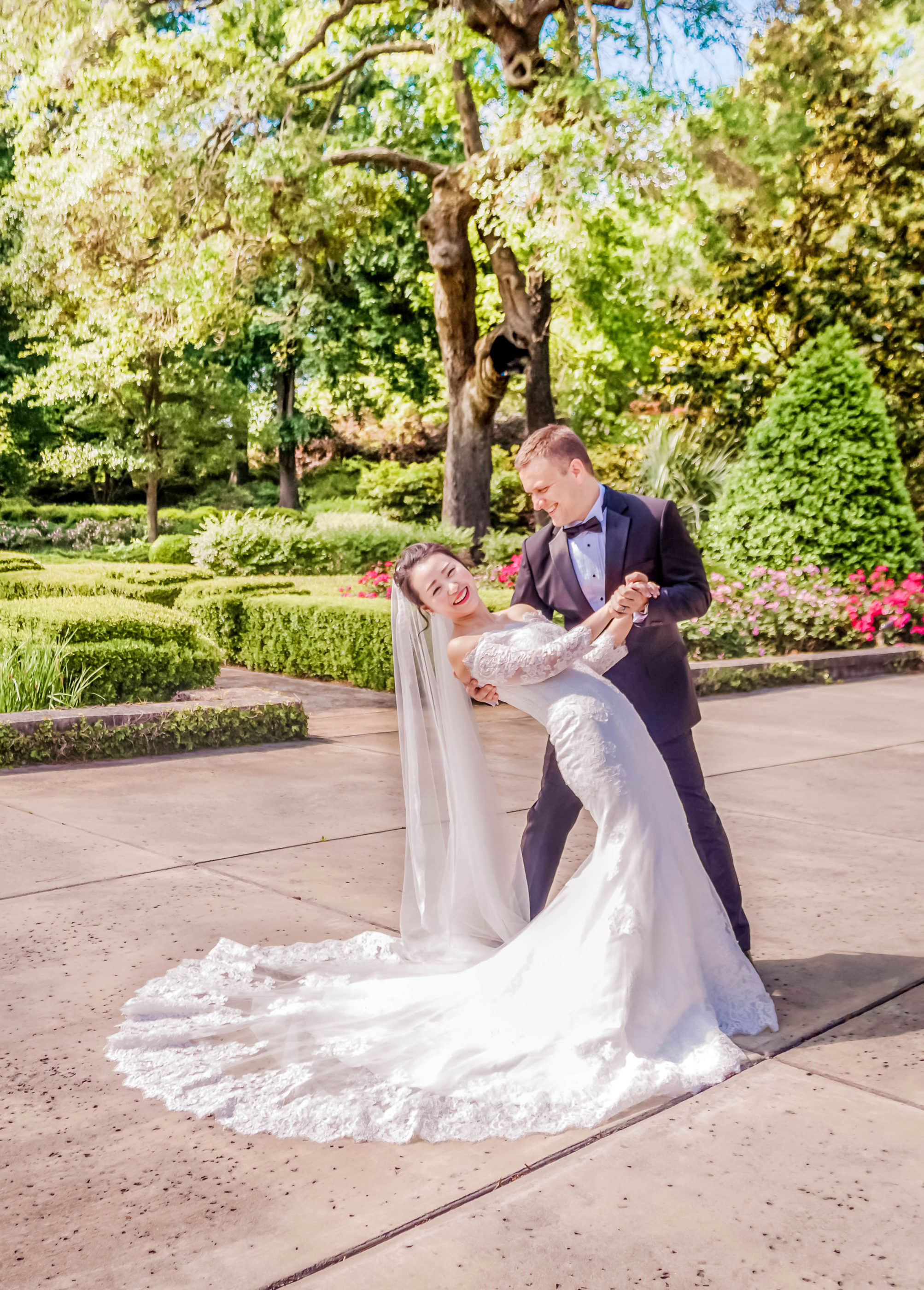

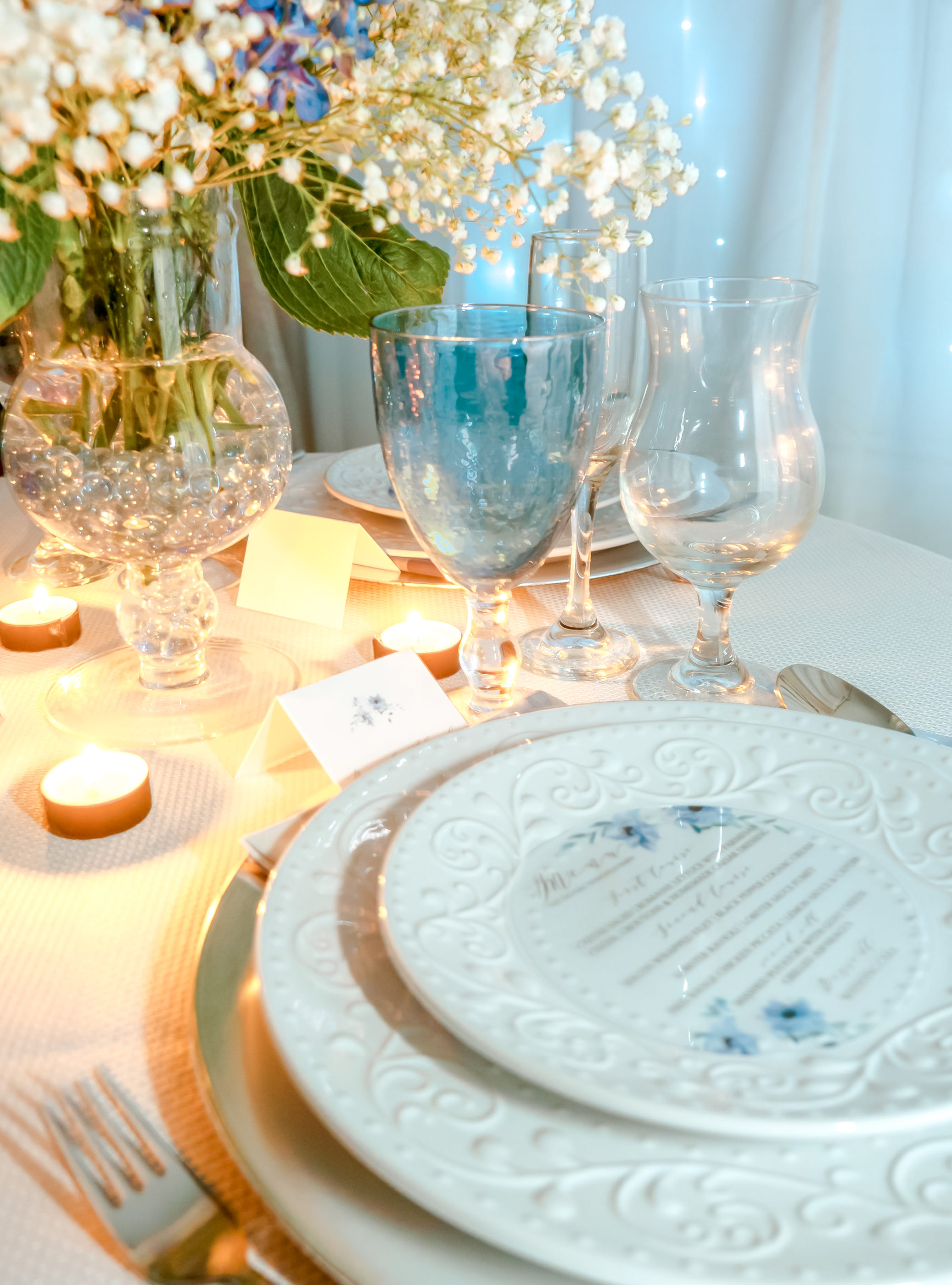
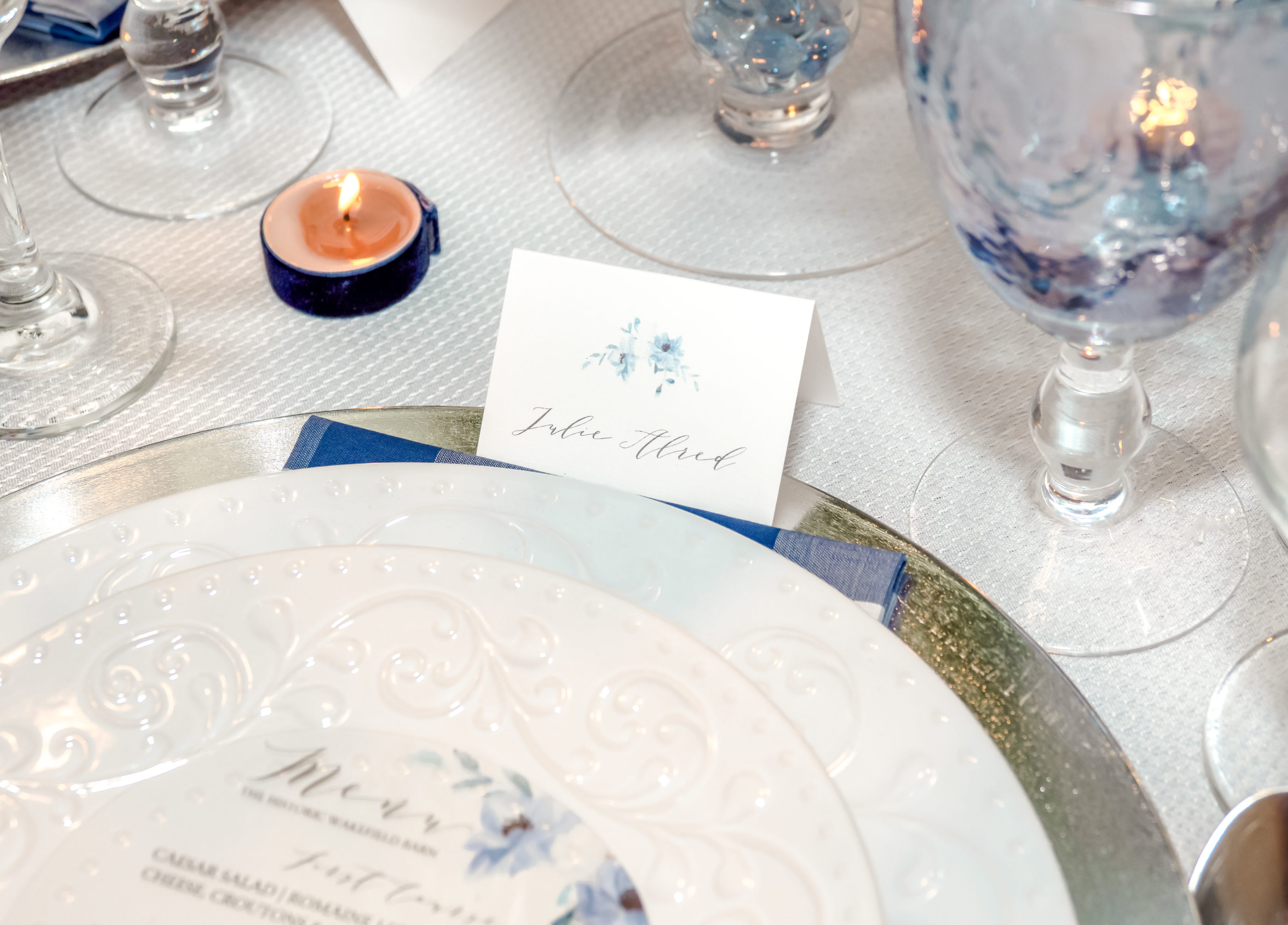

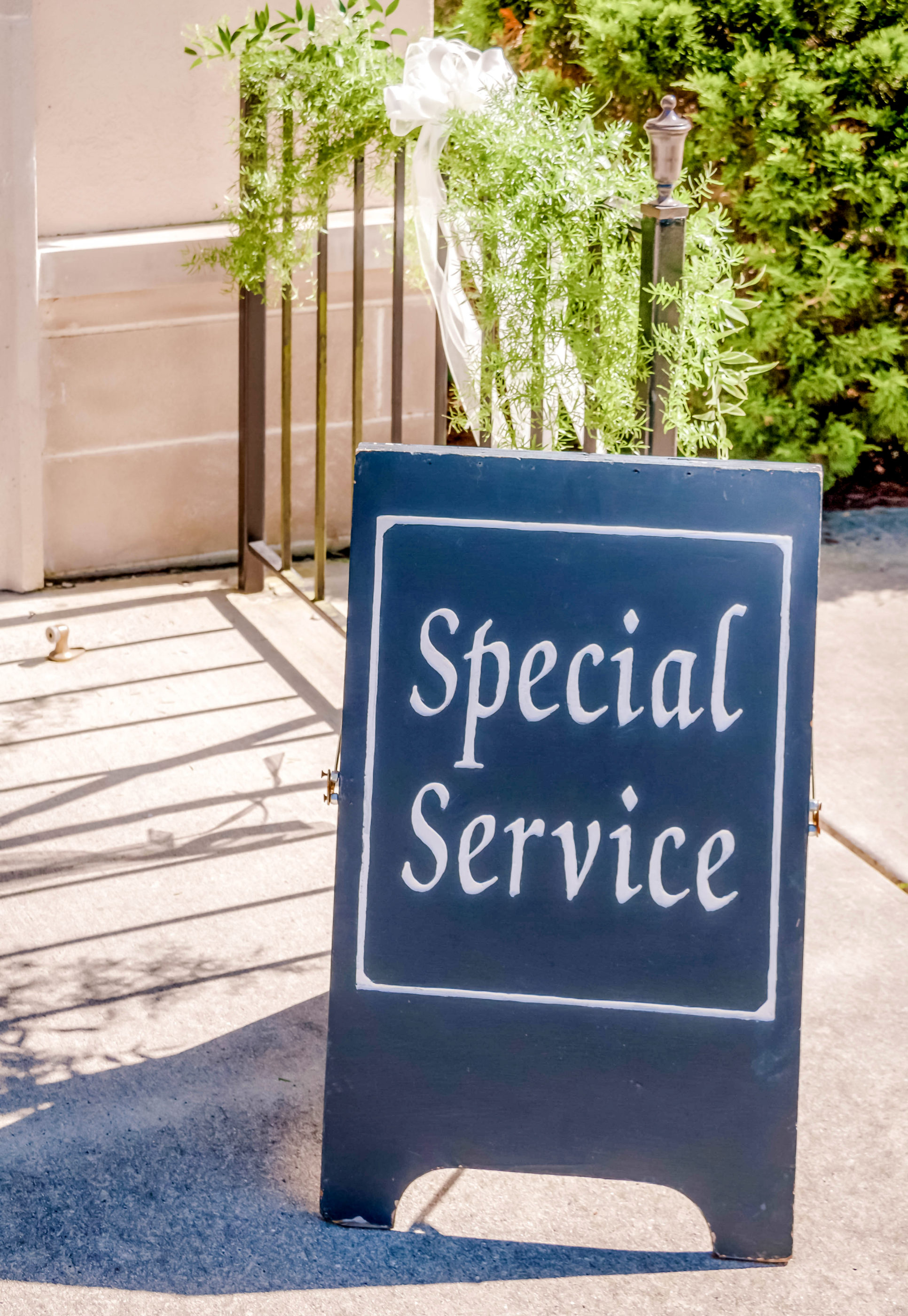
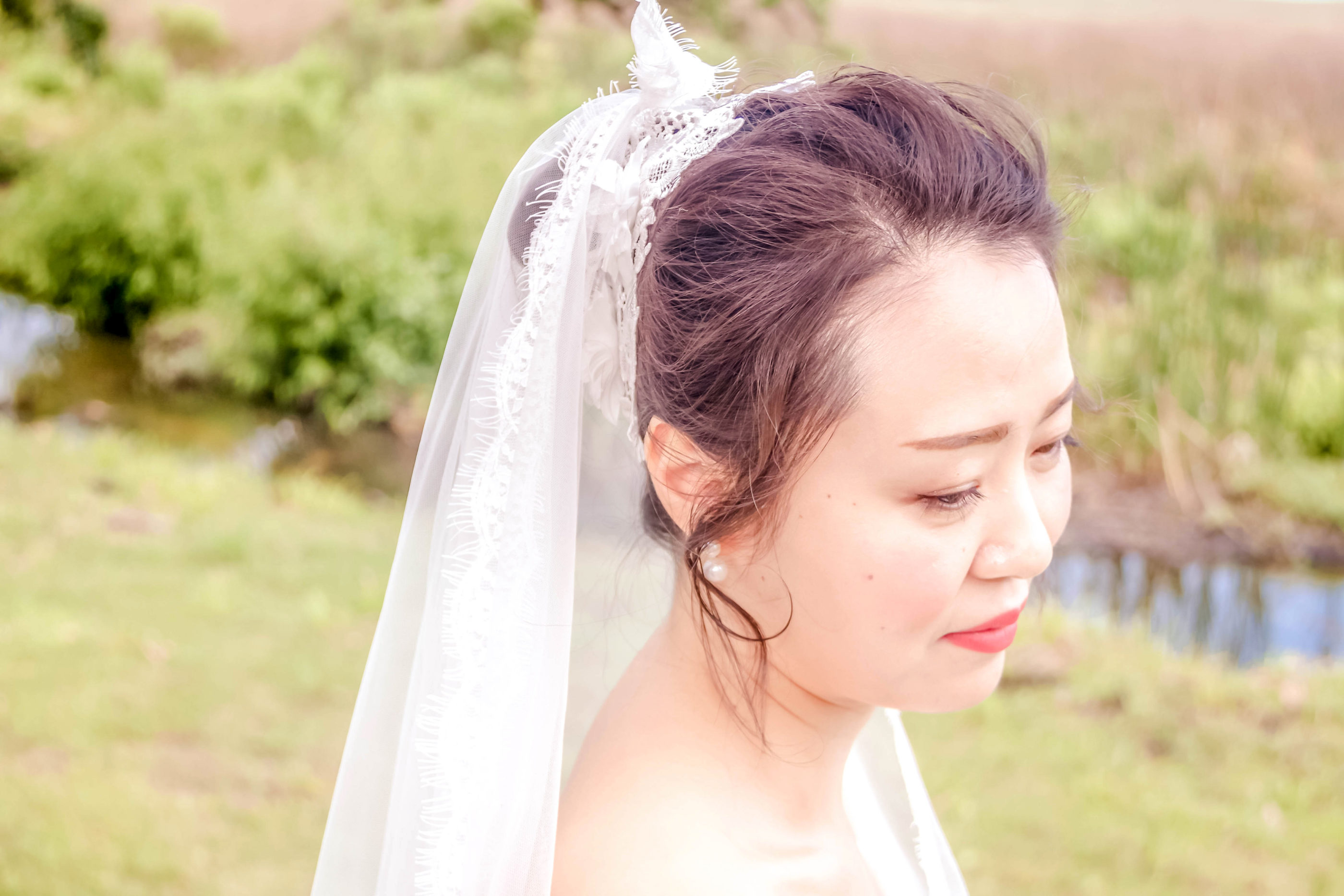
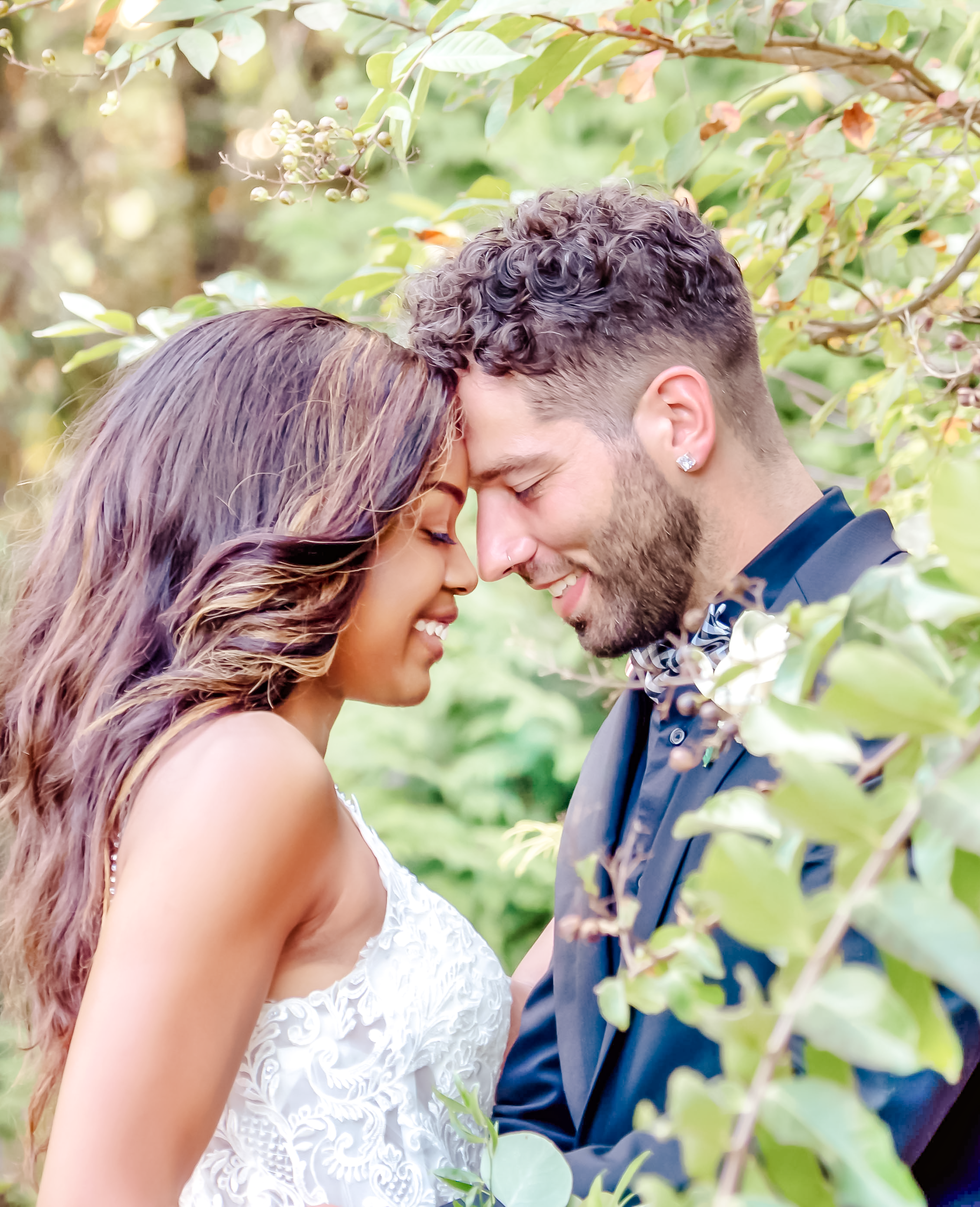

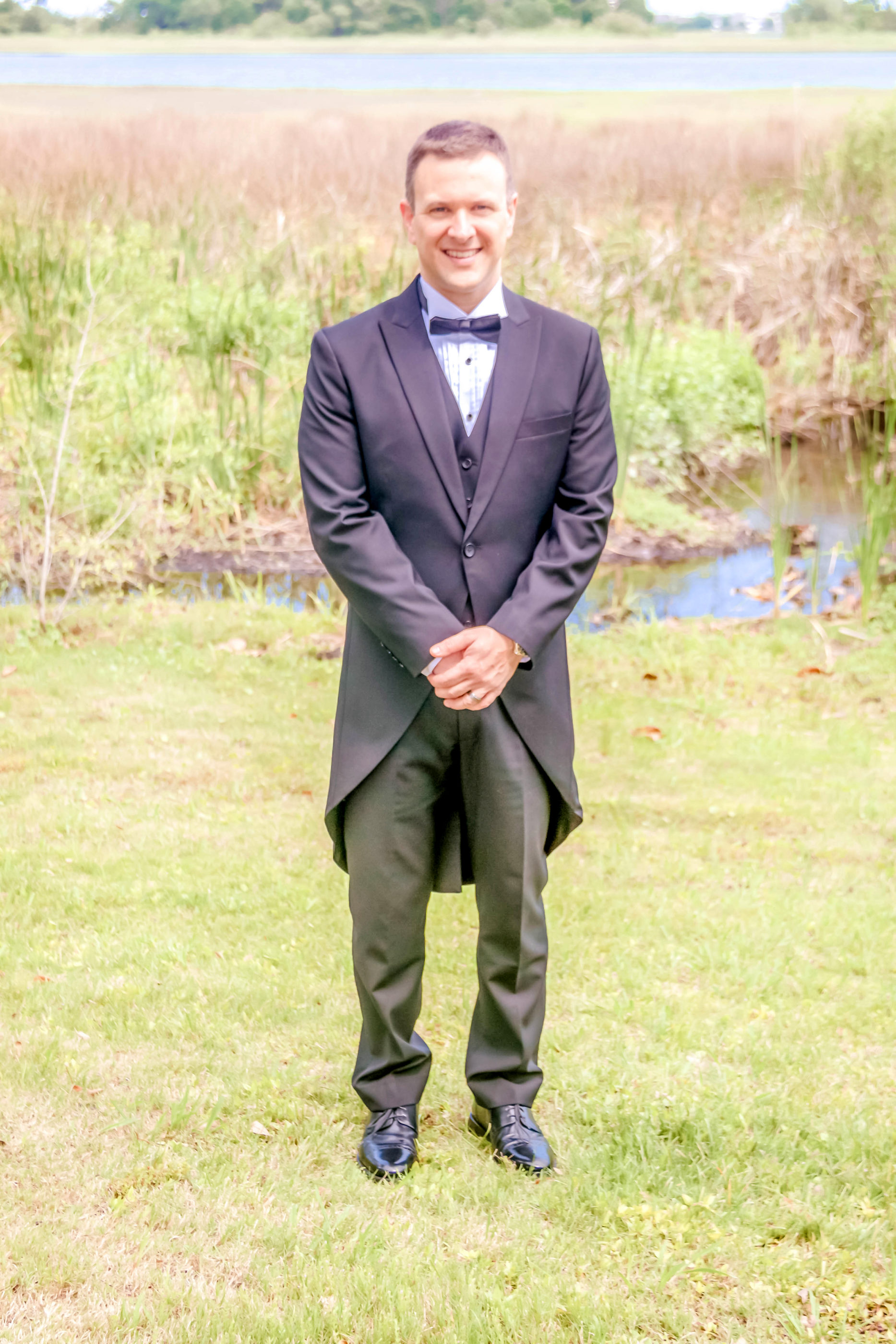
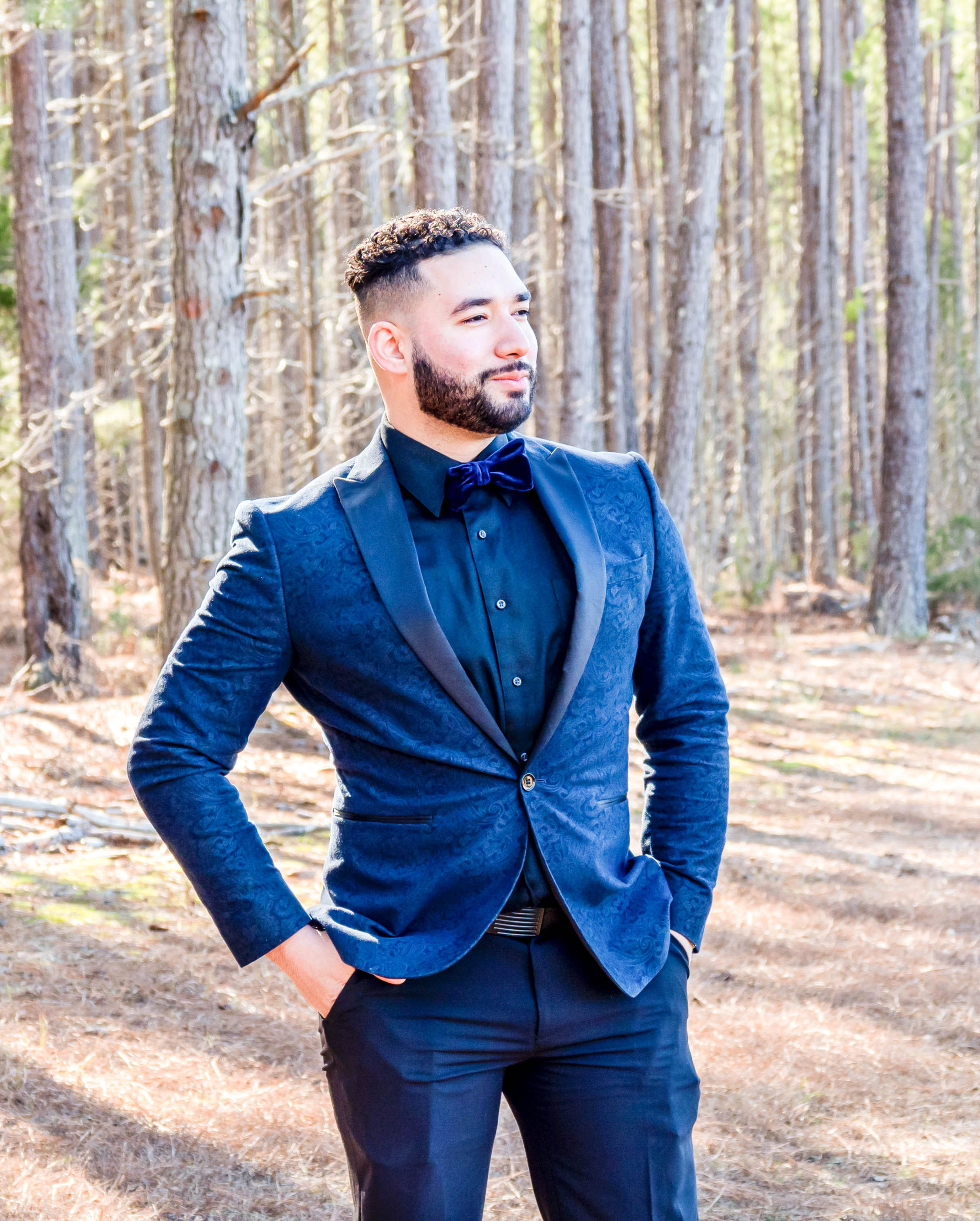
Be the first to comment